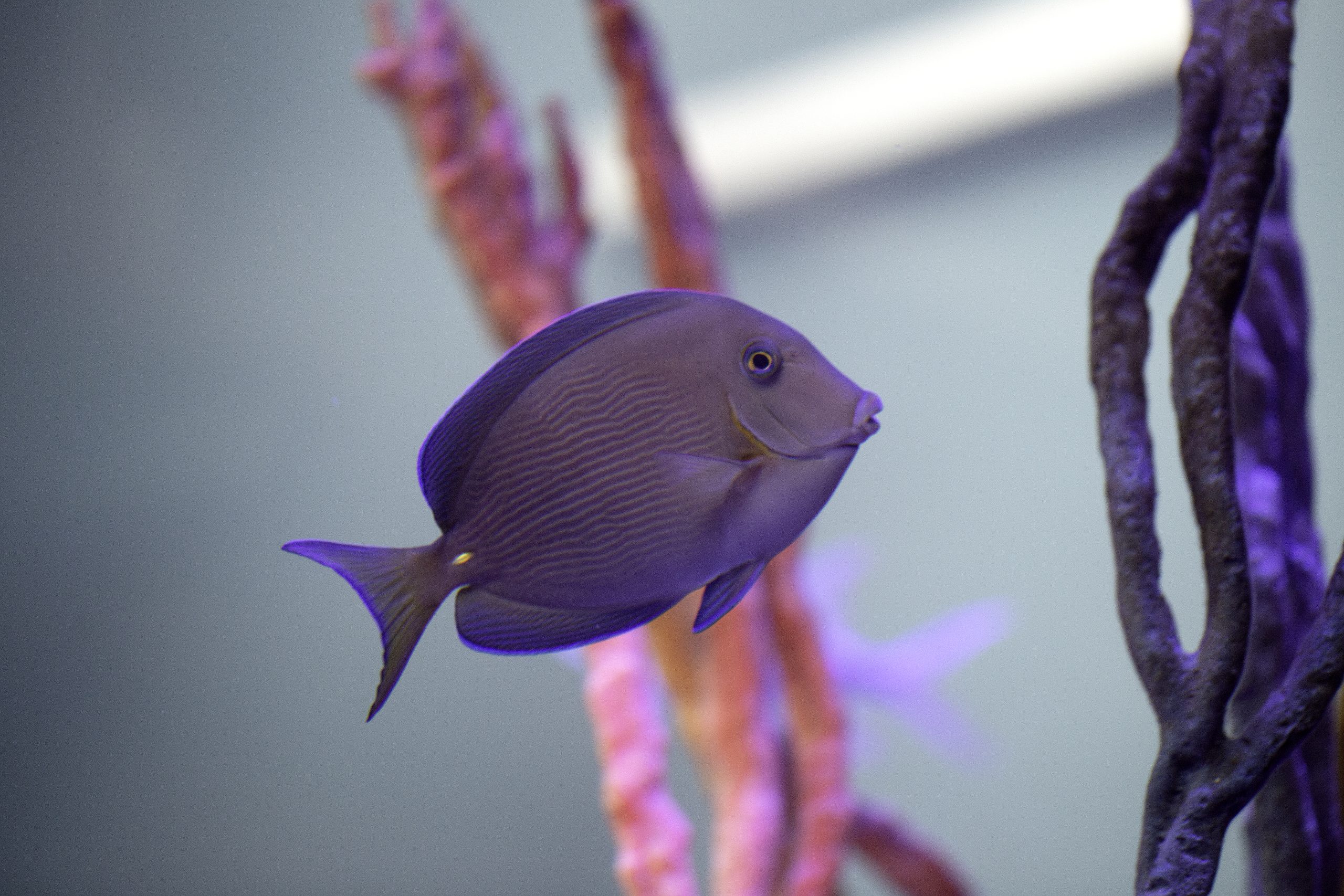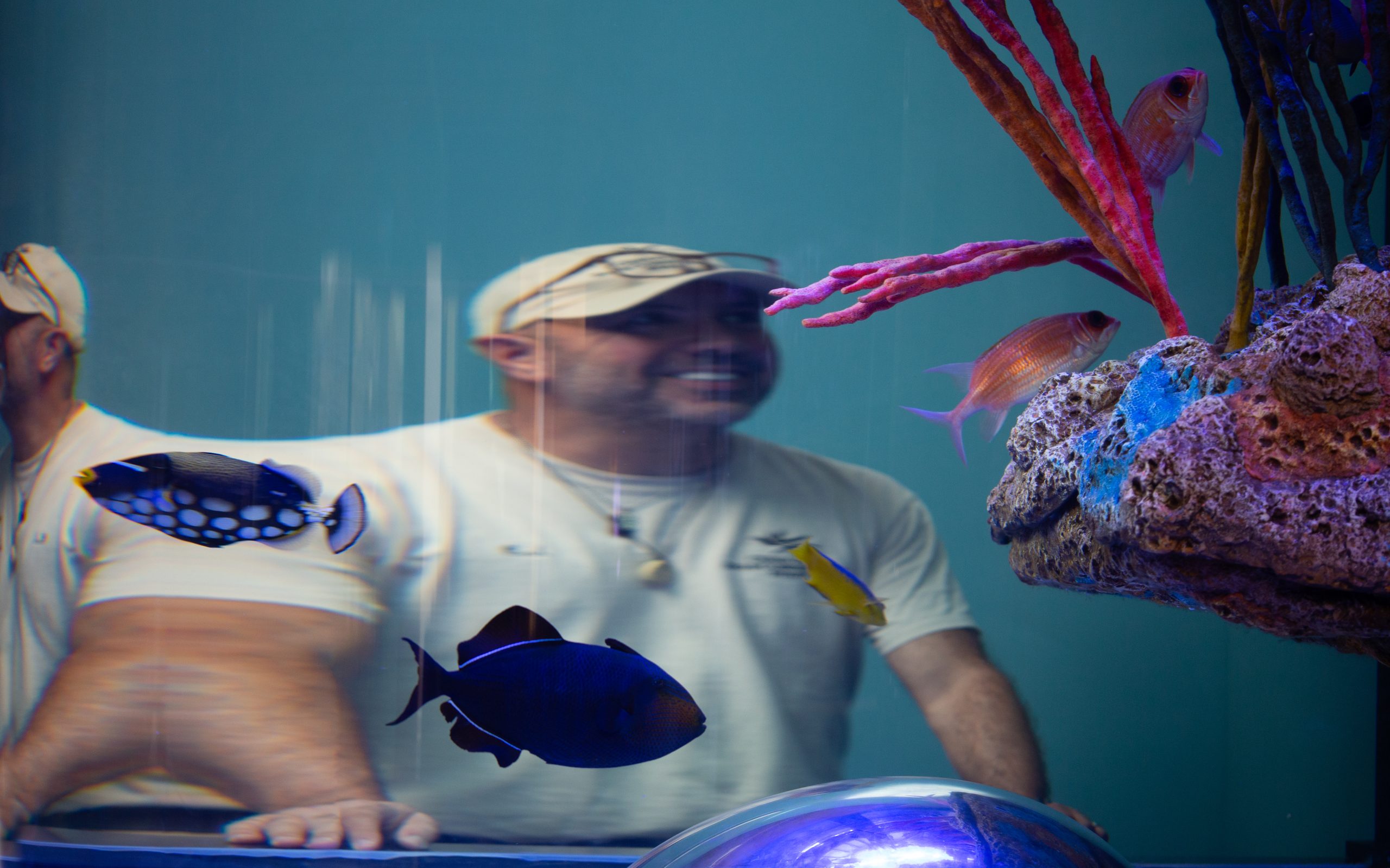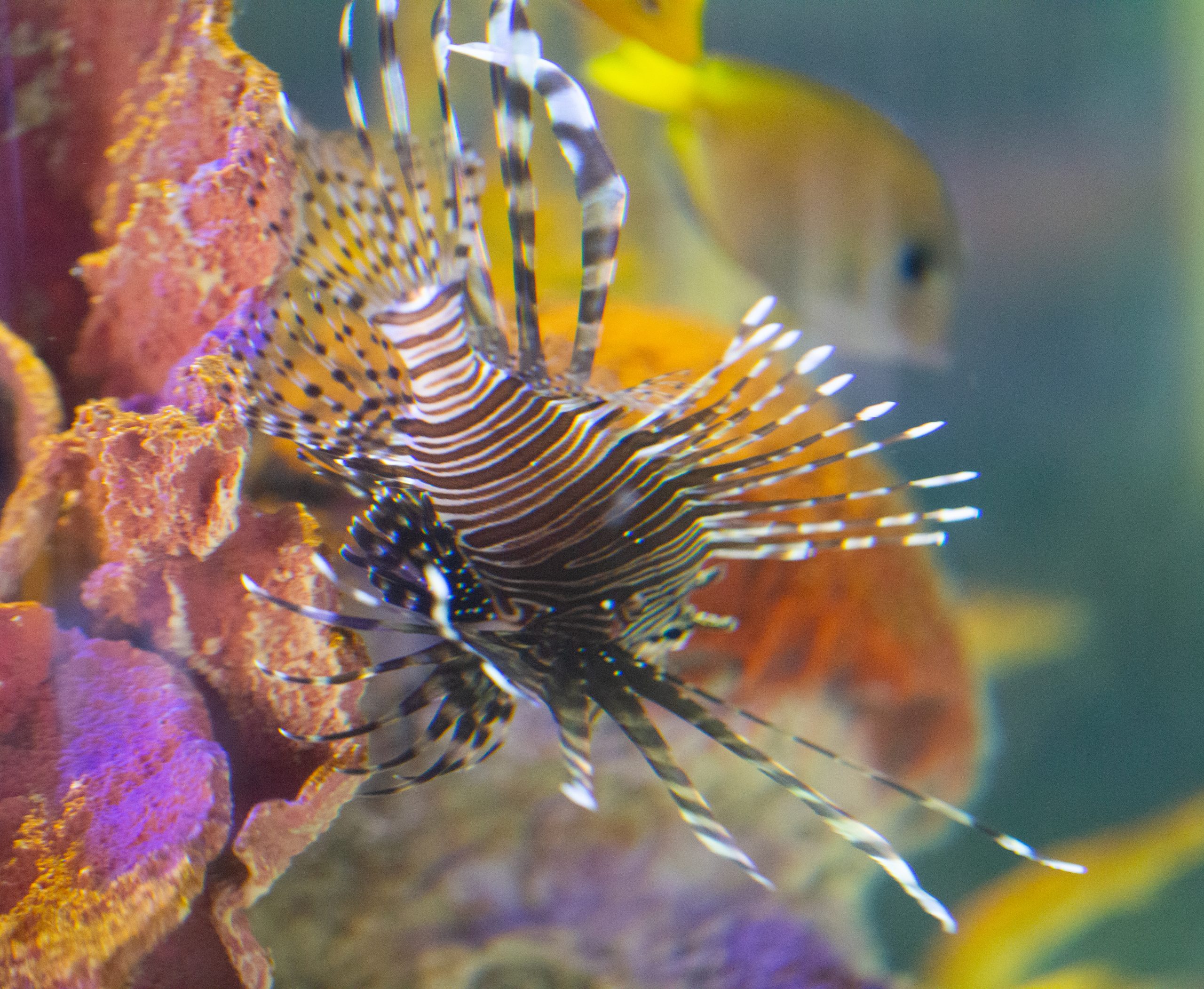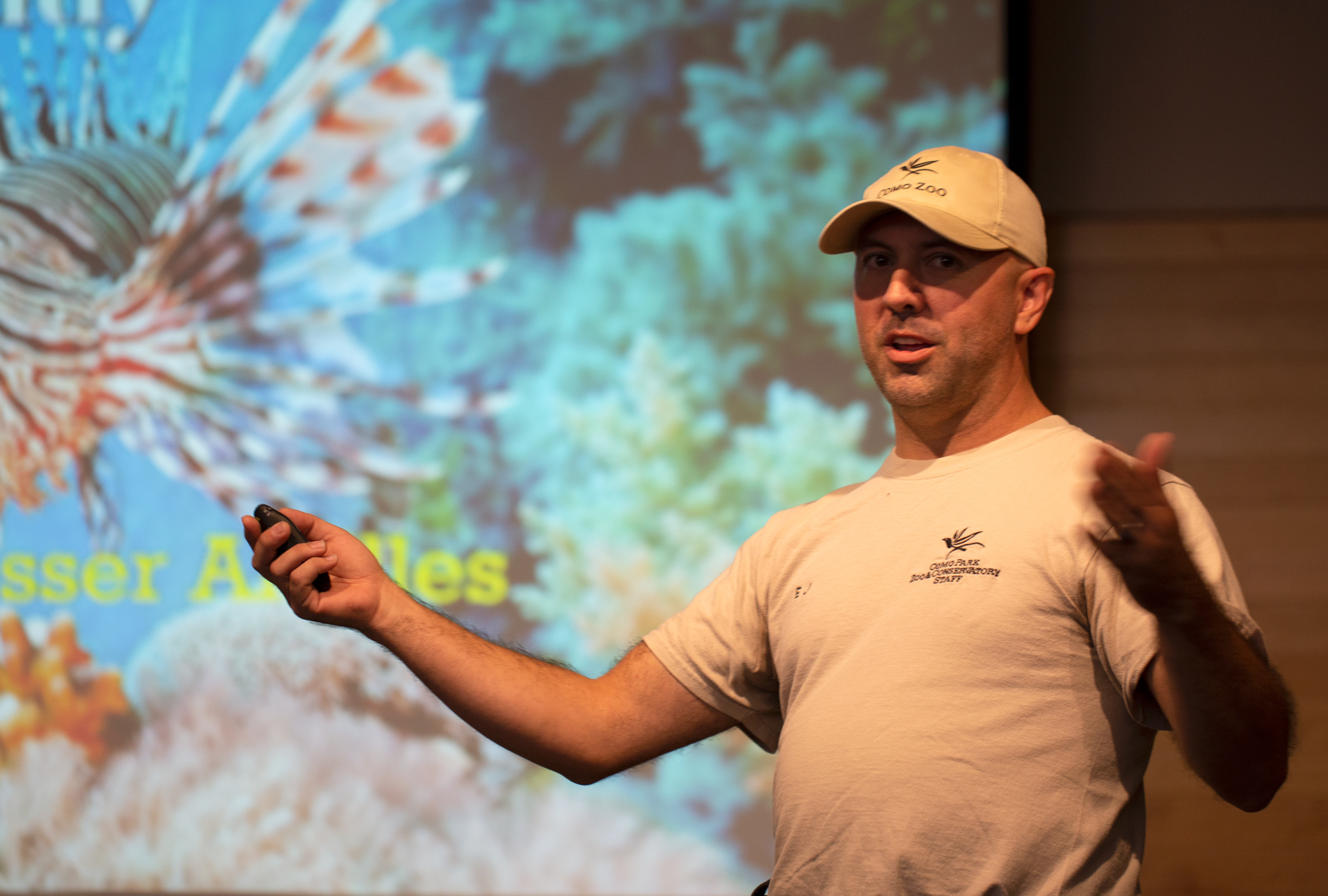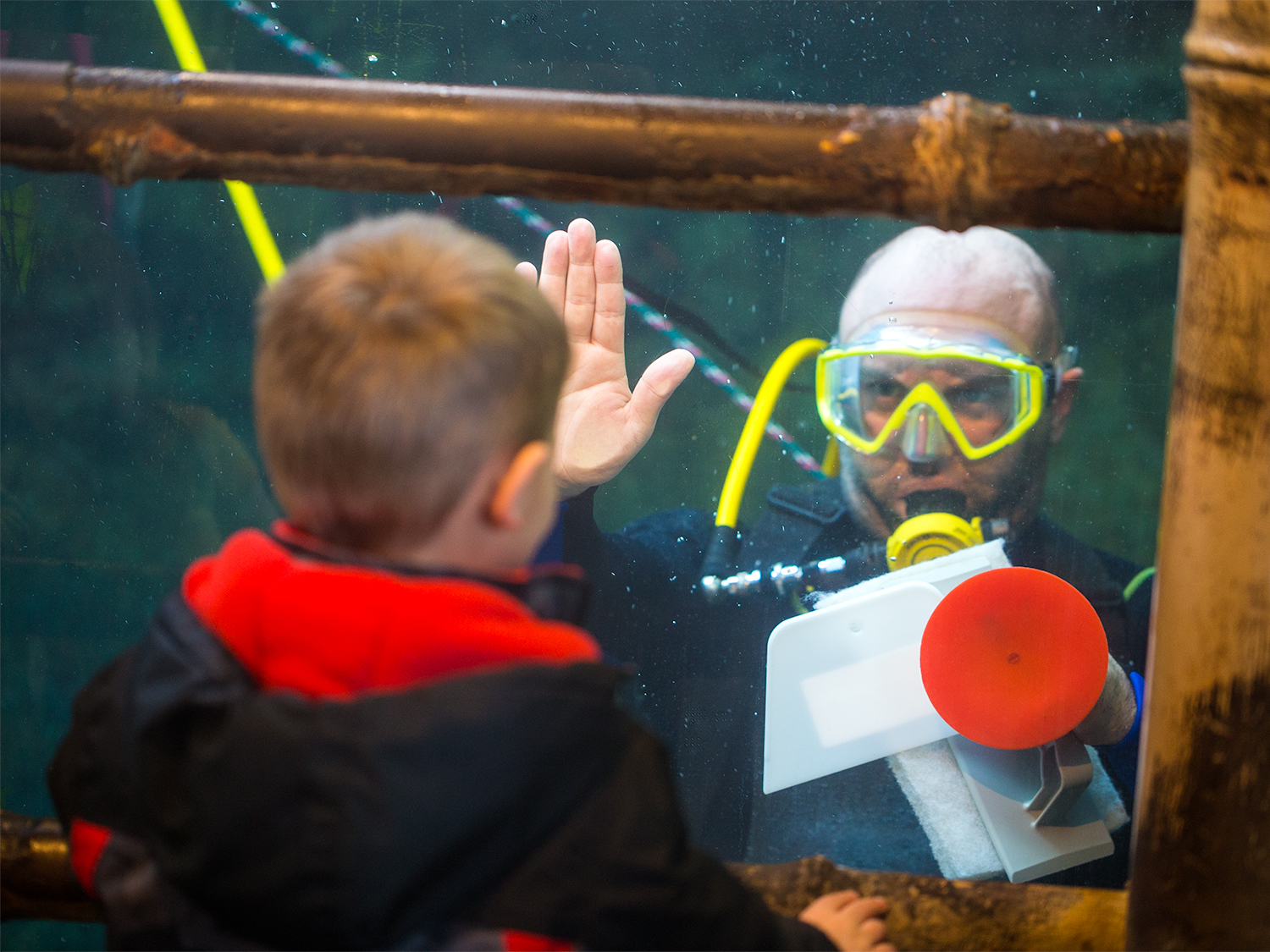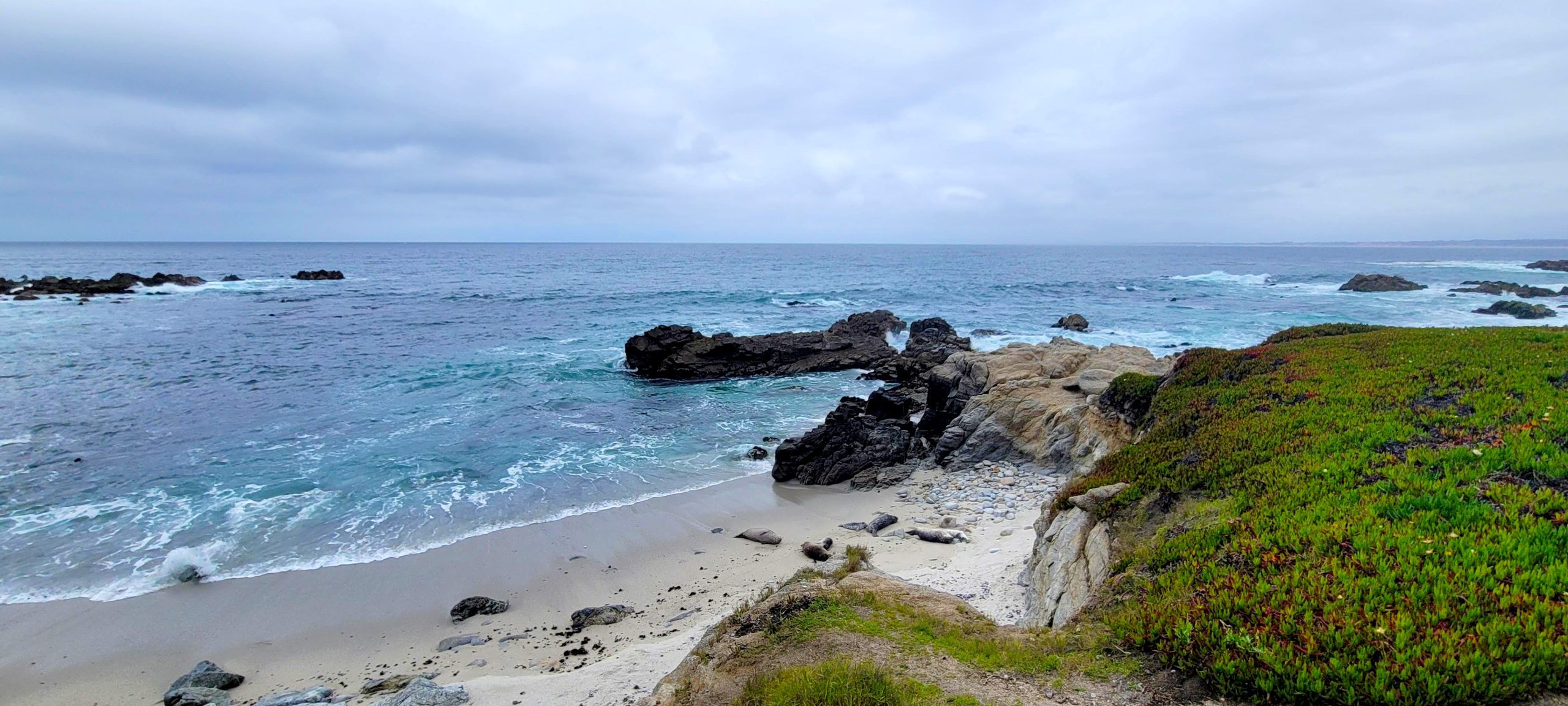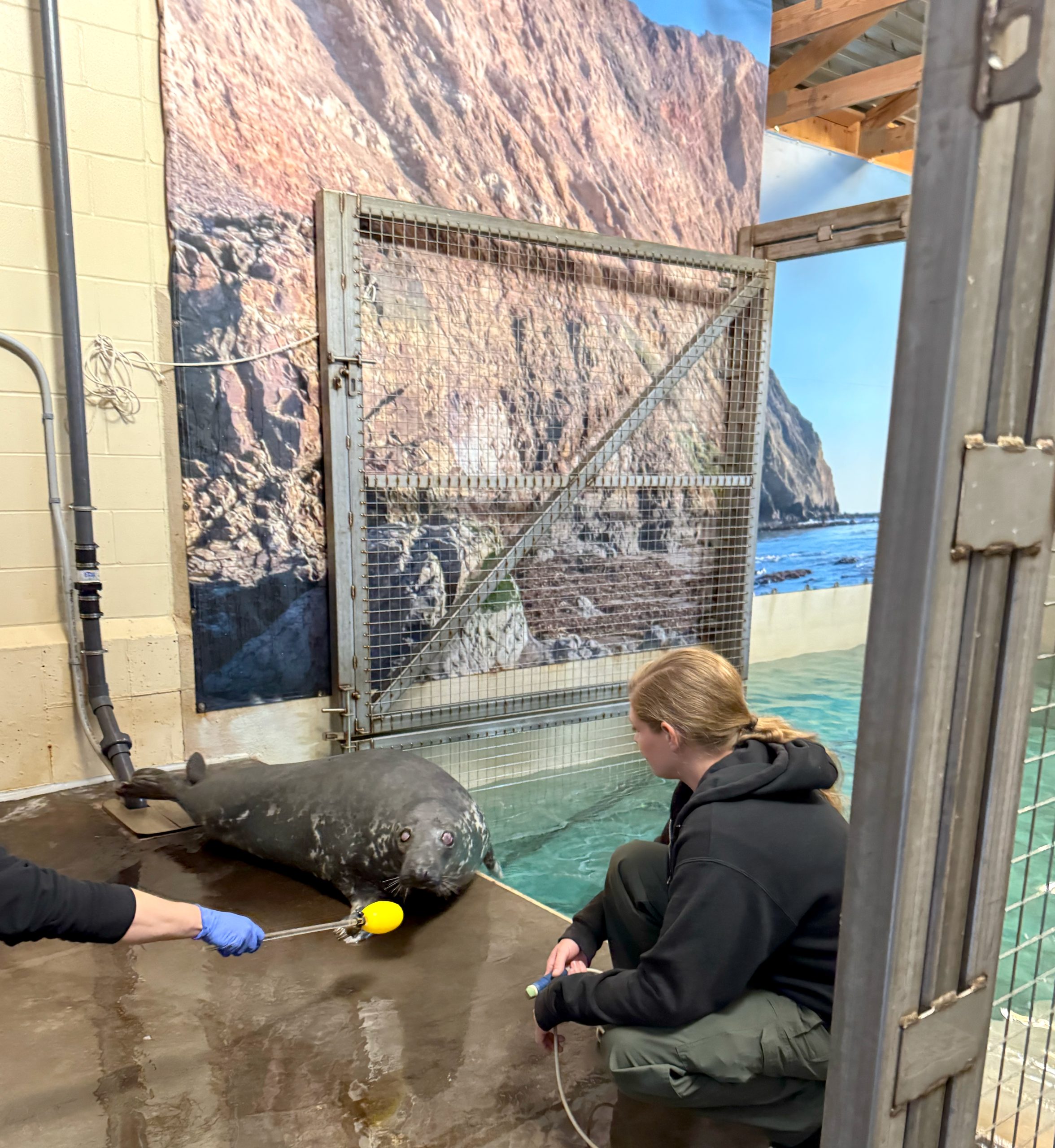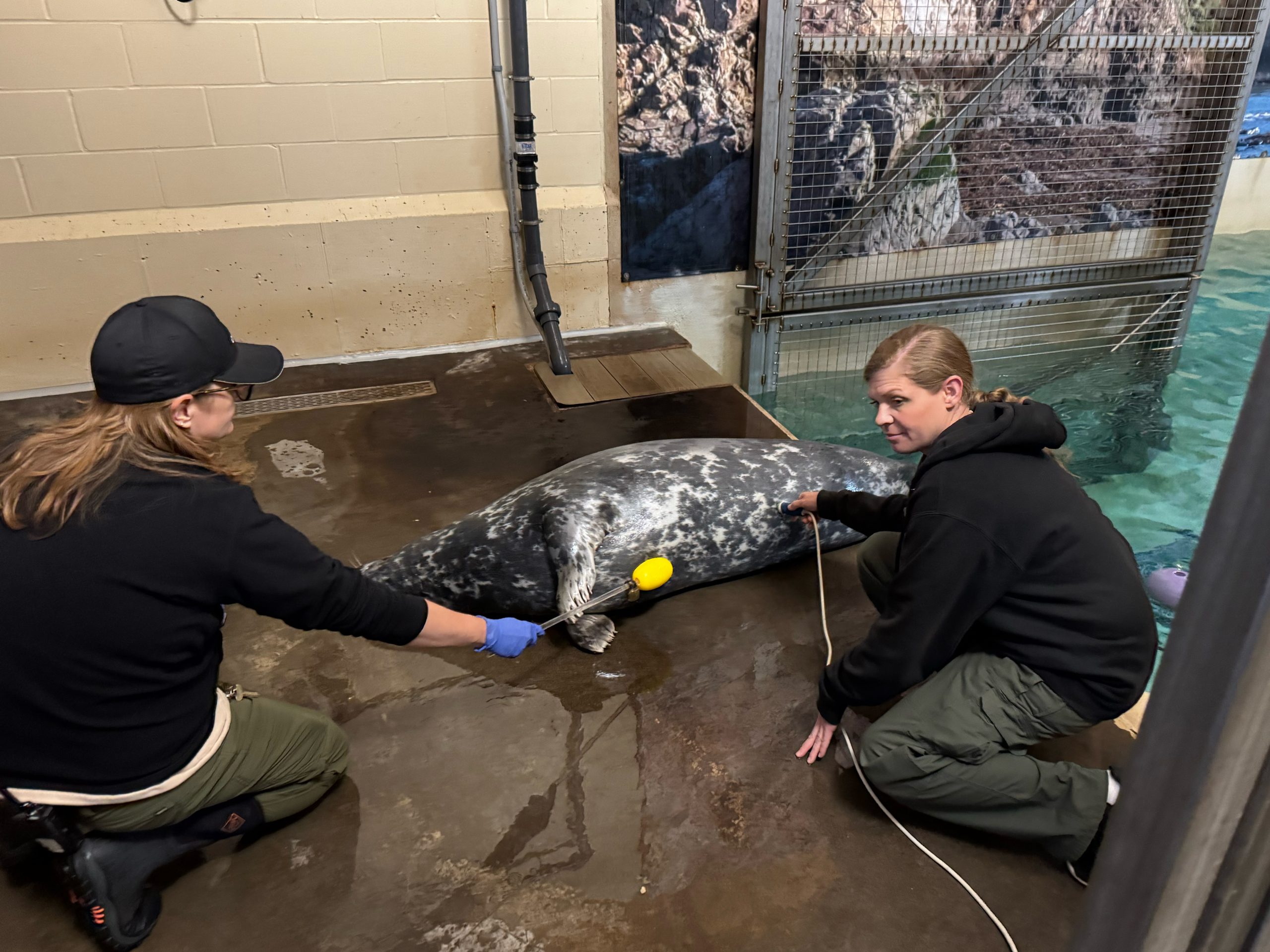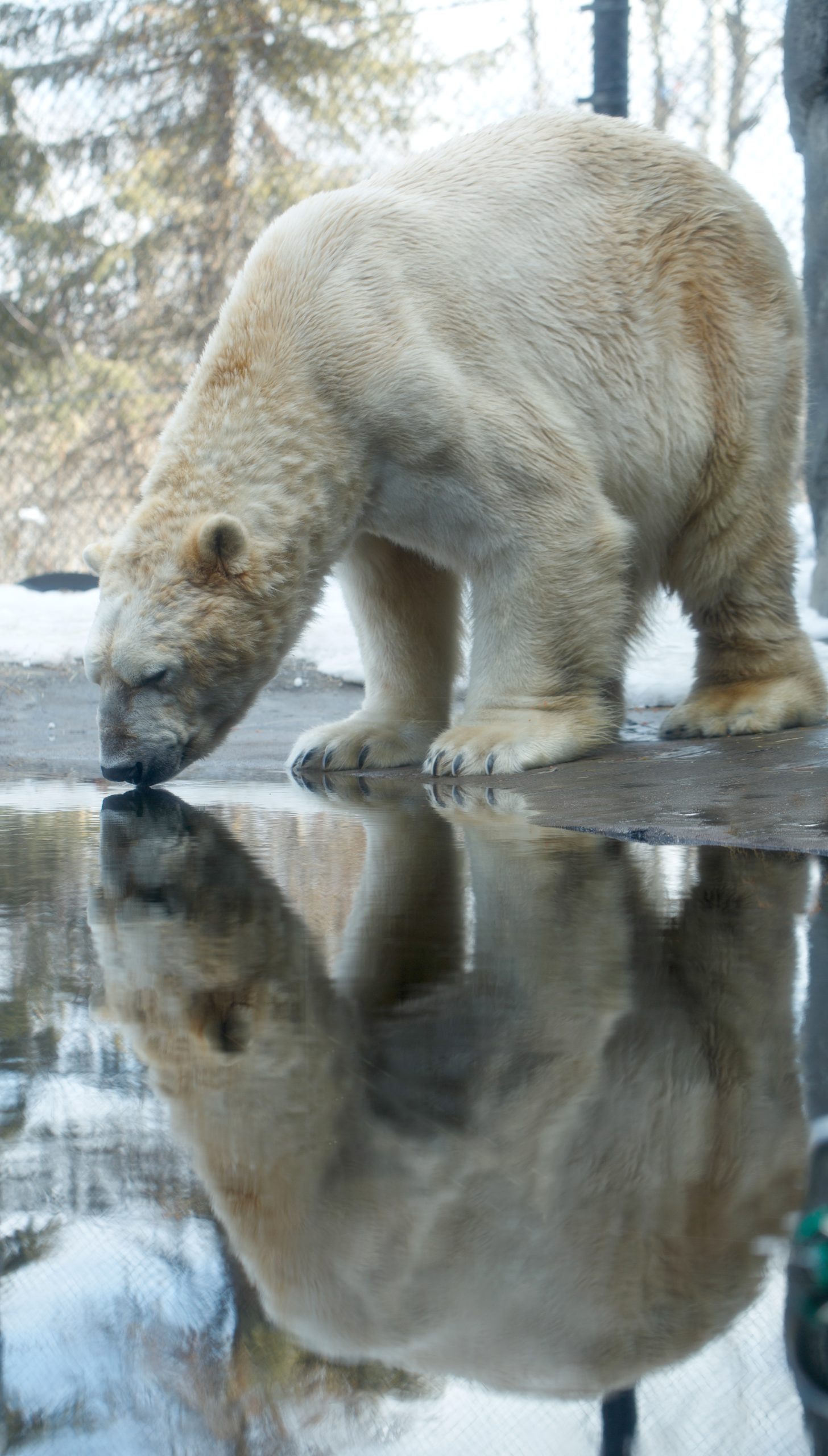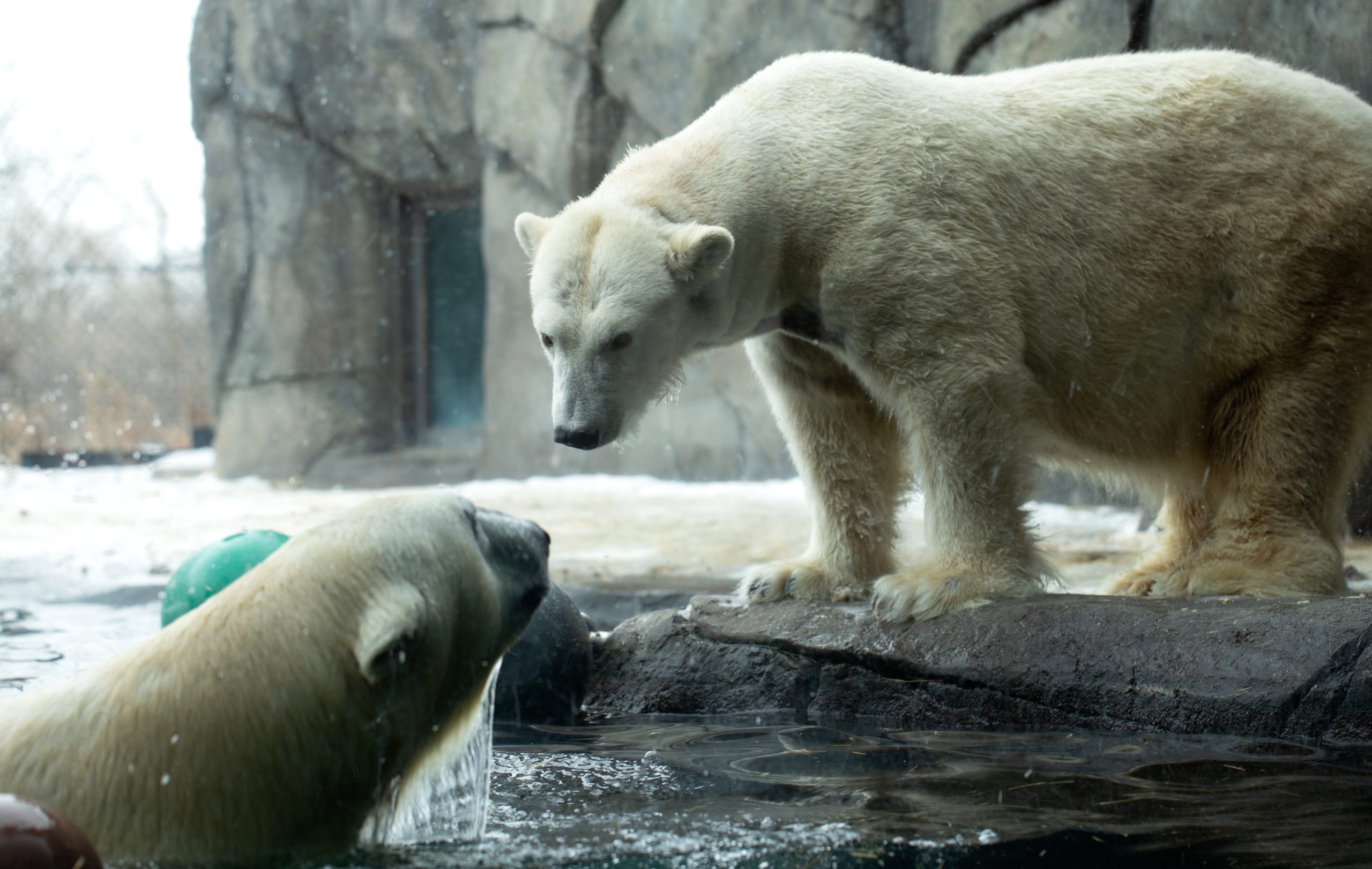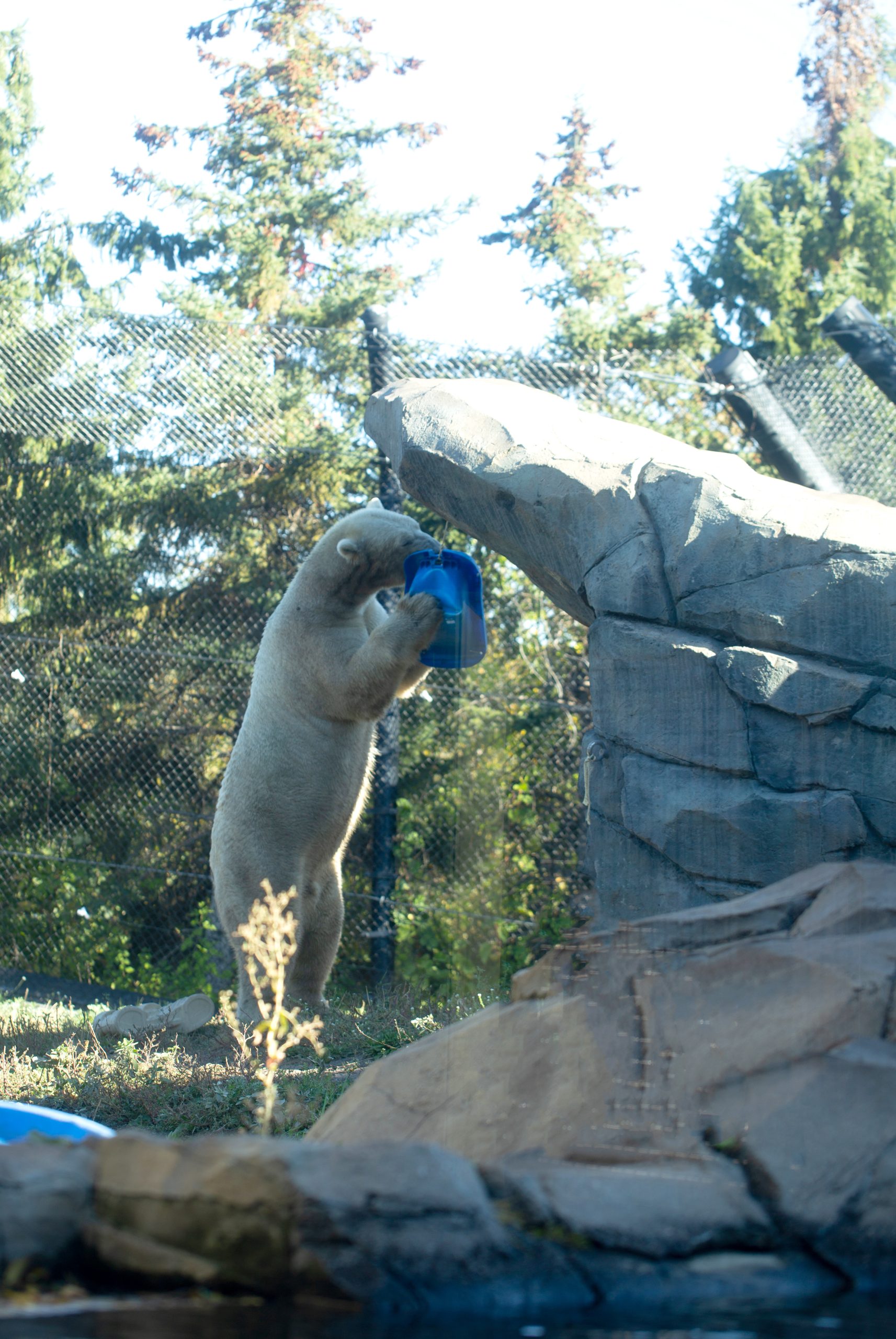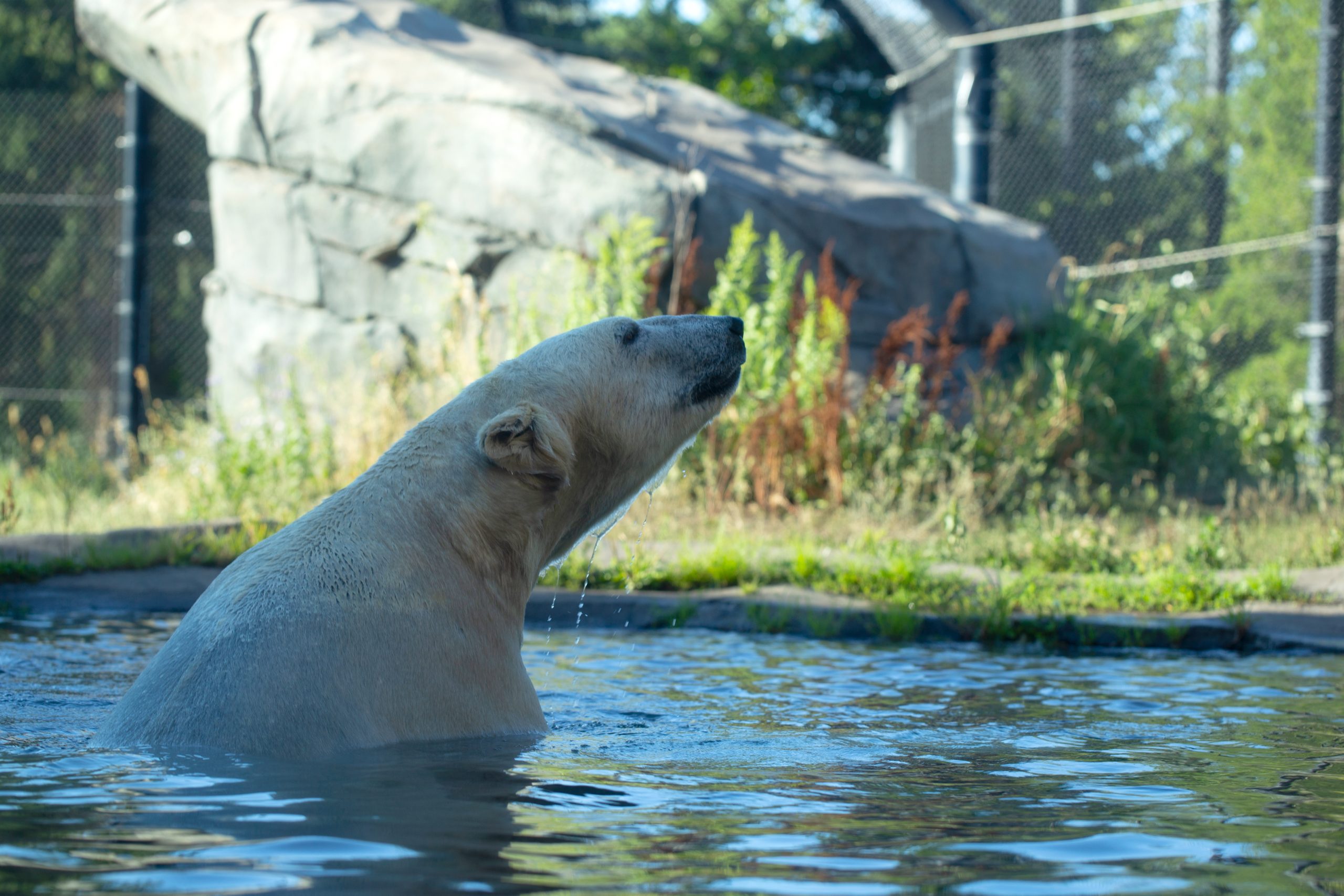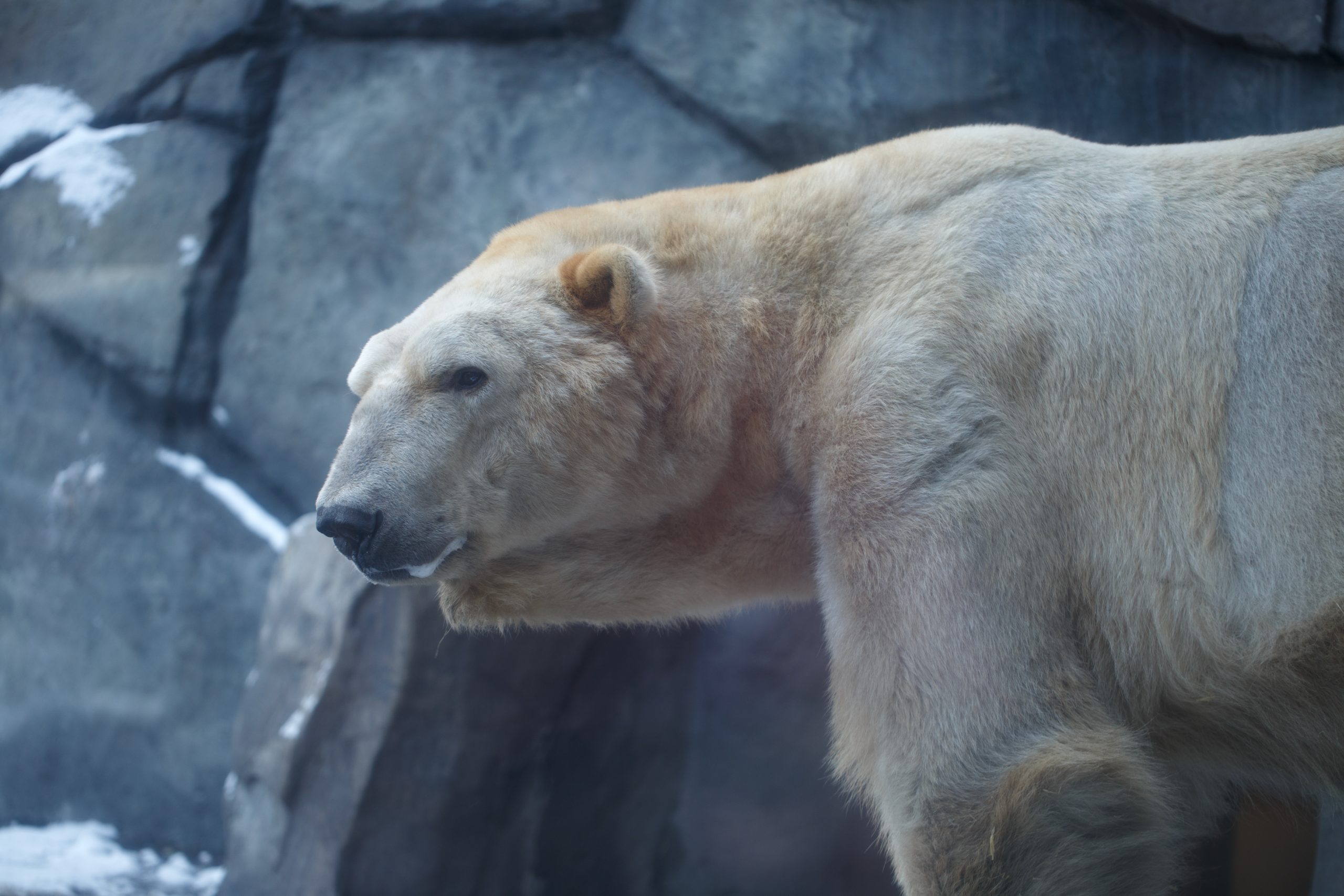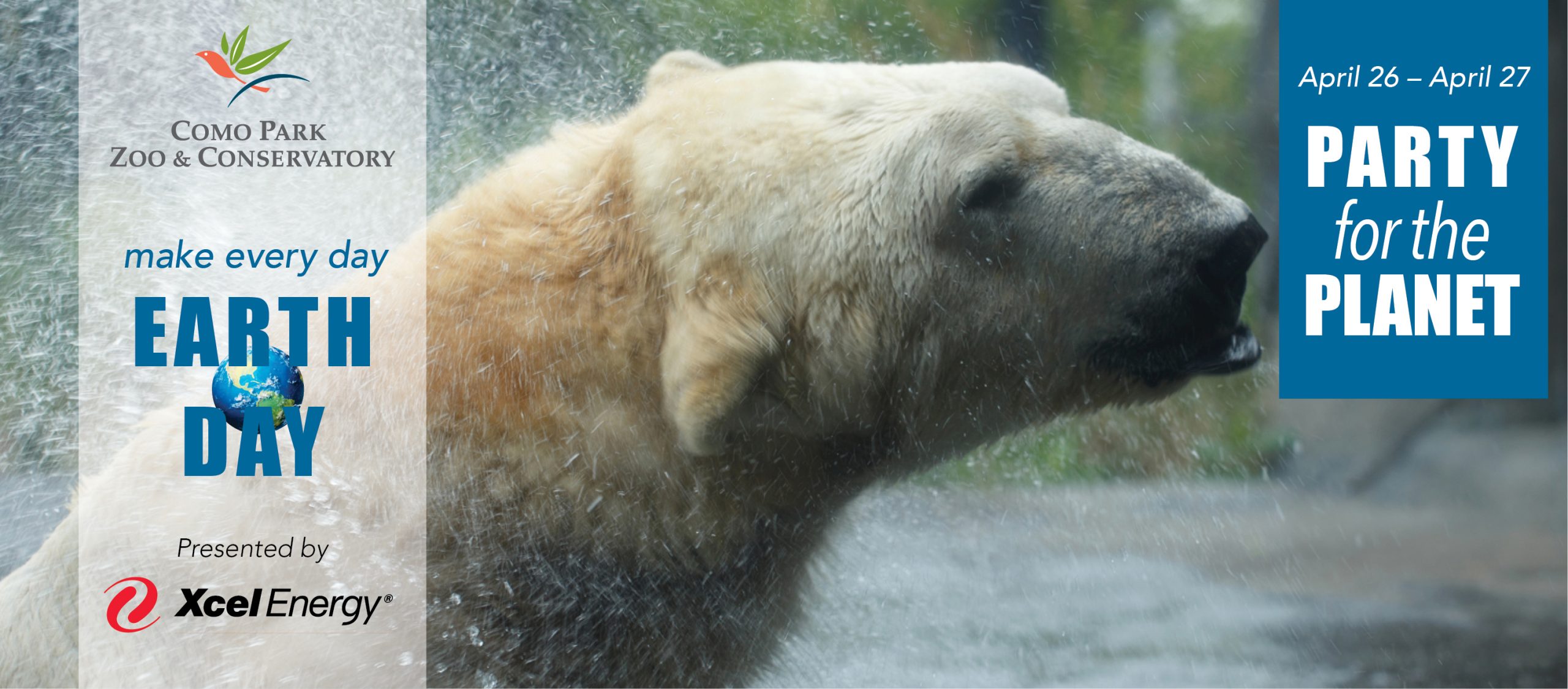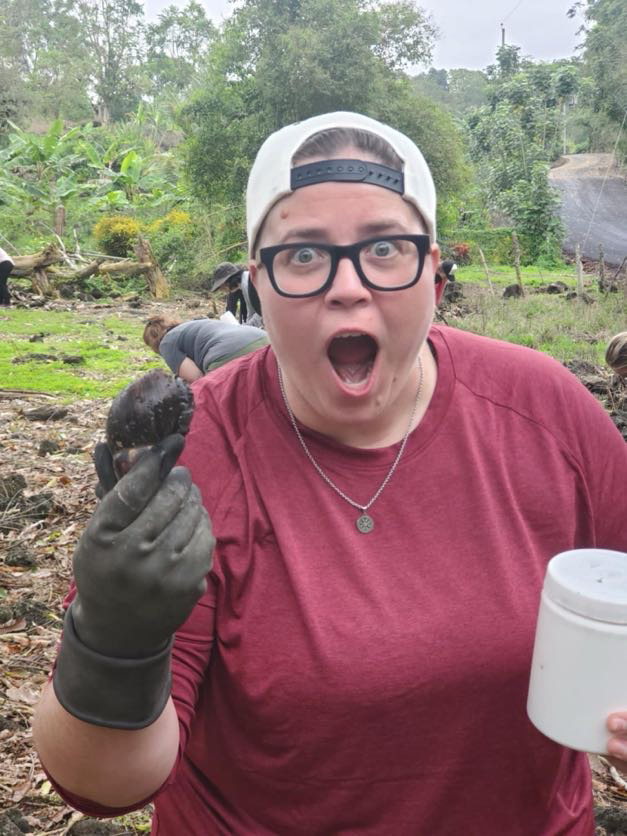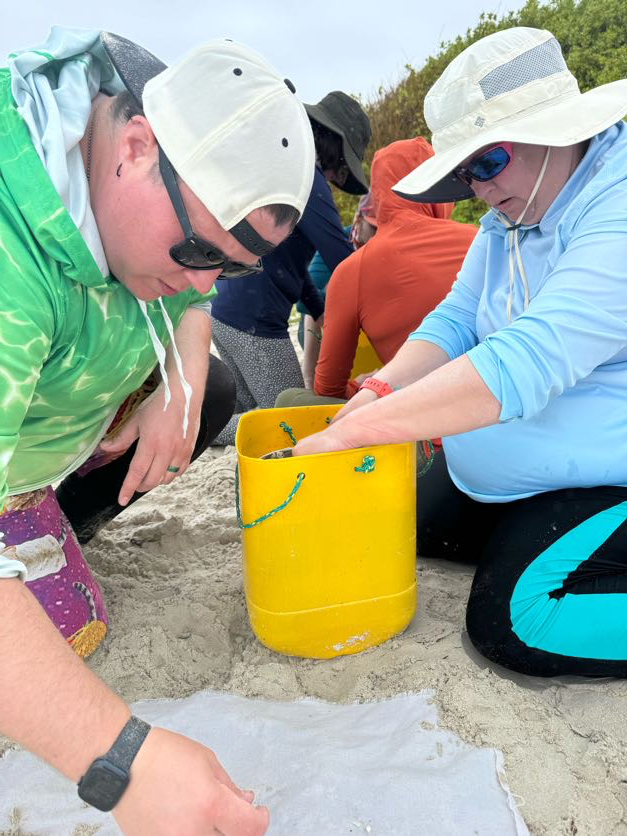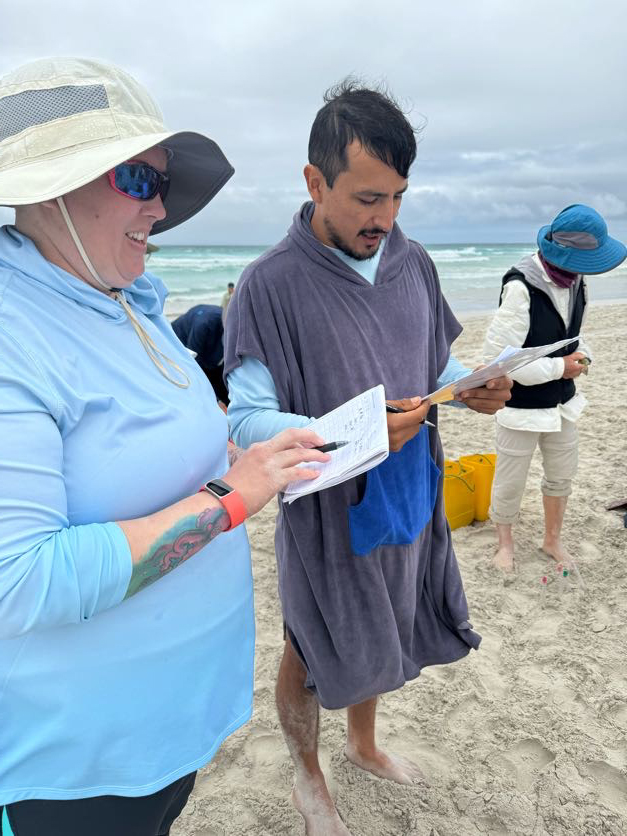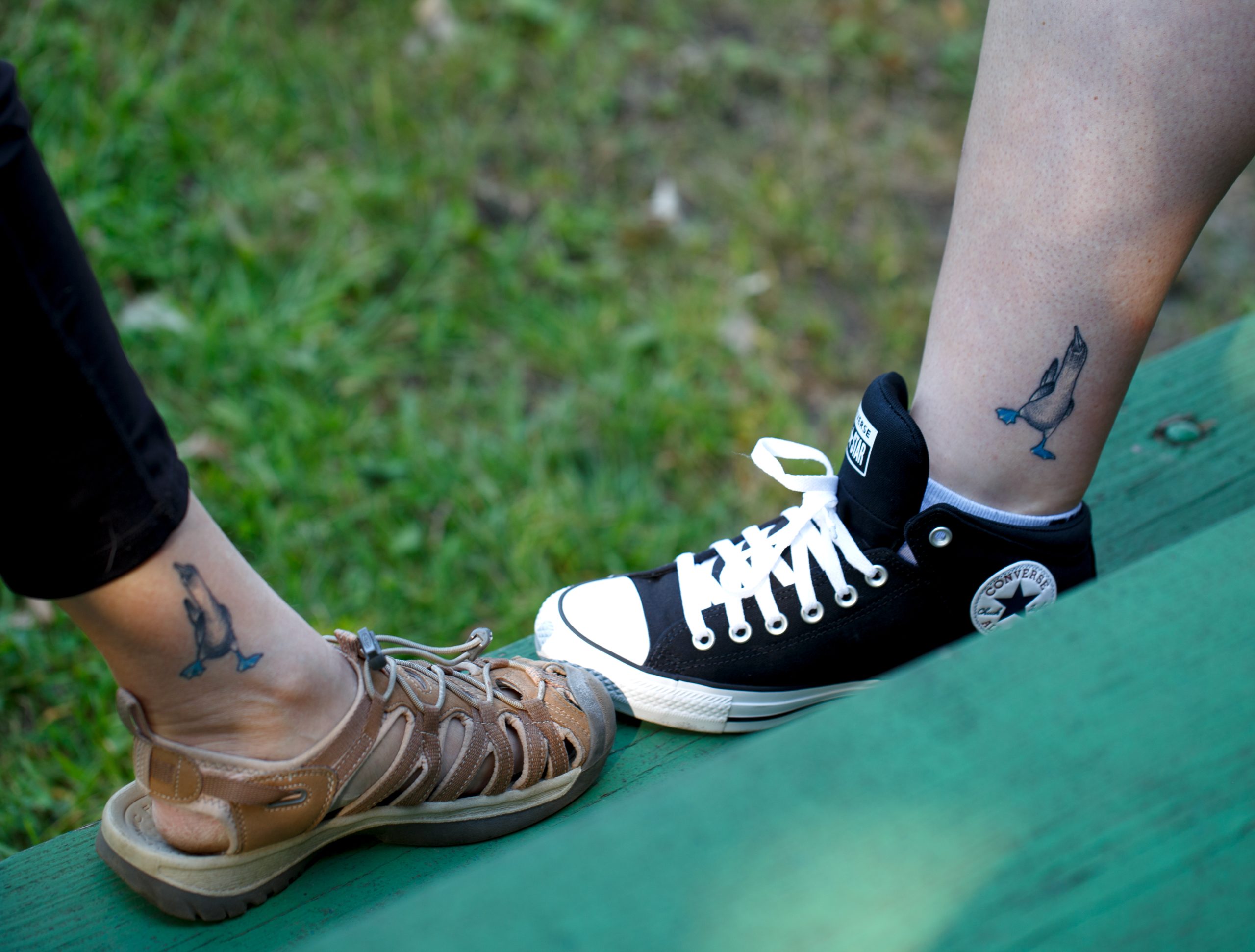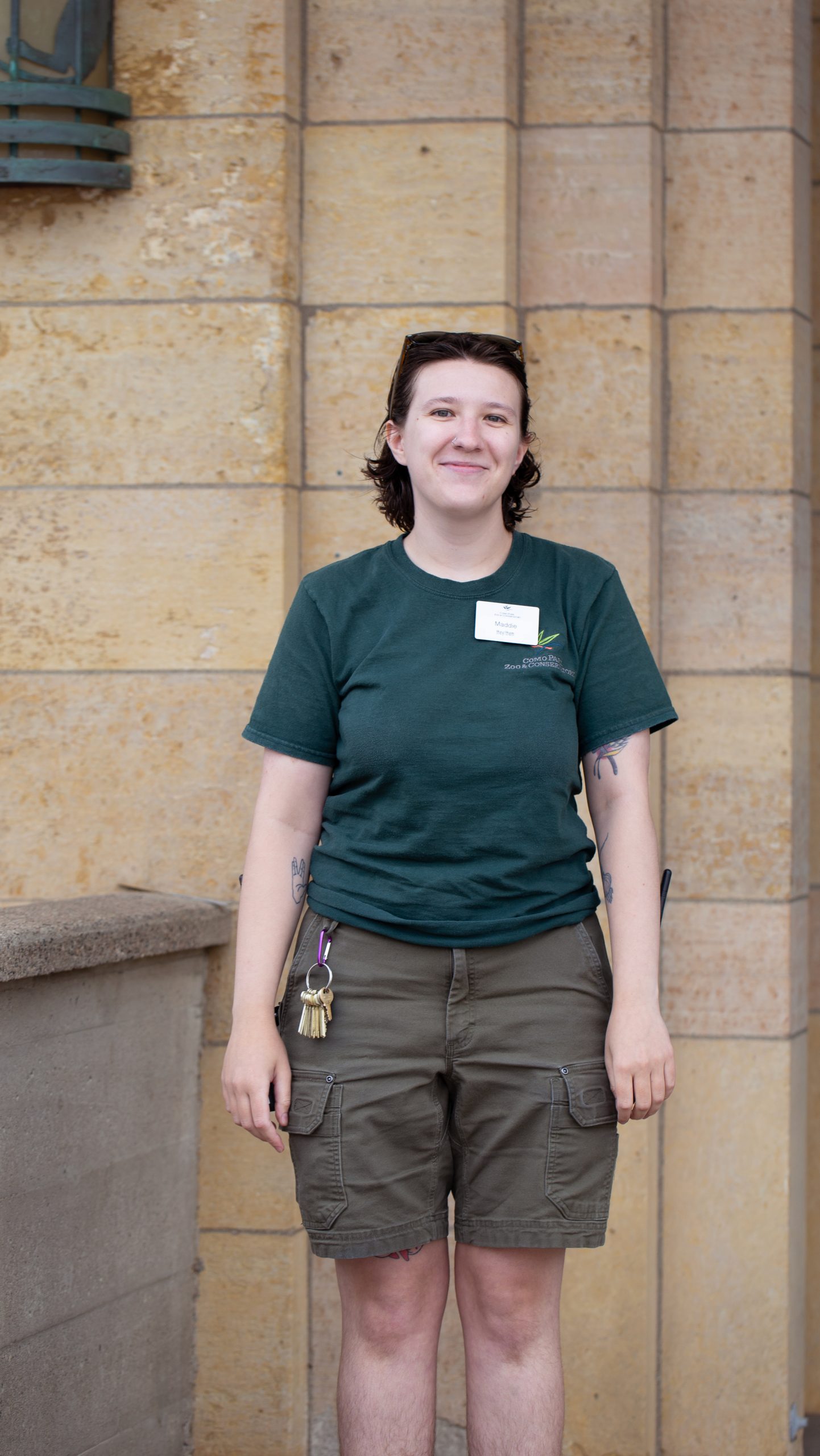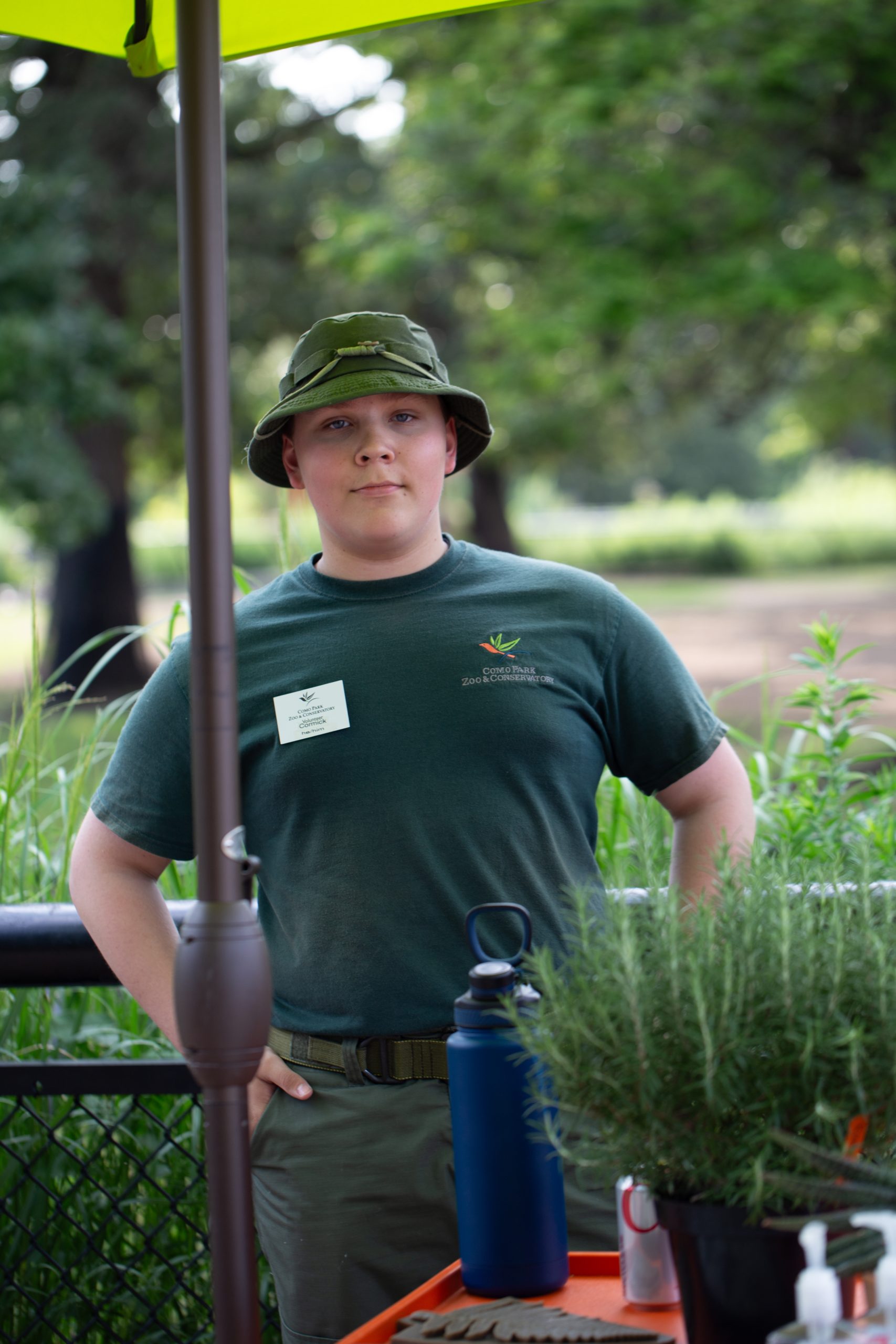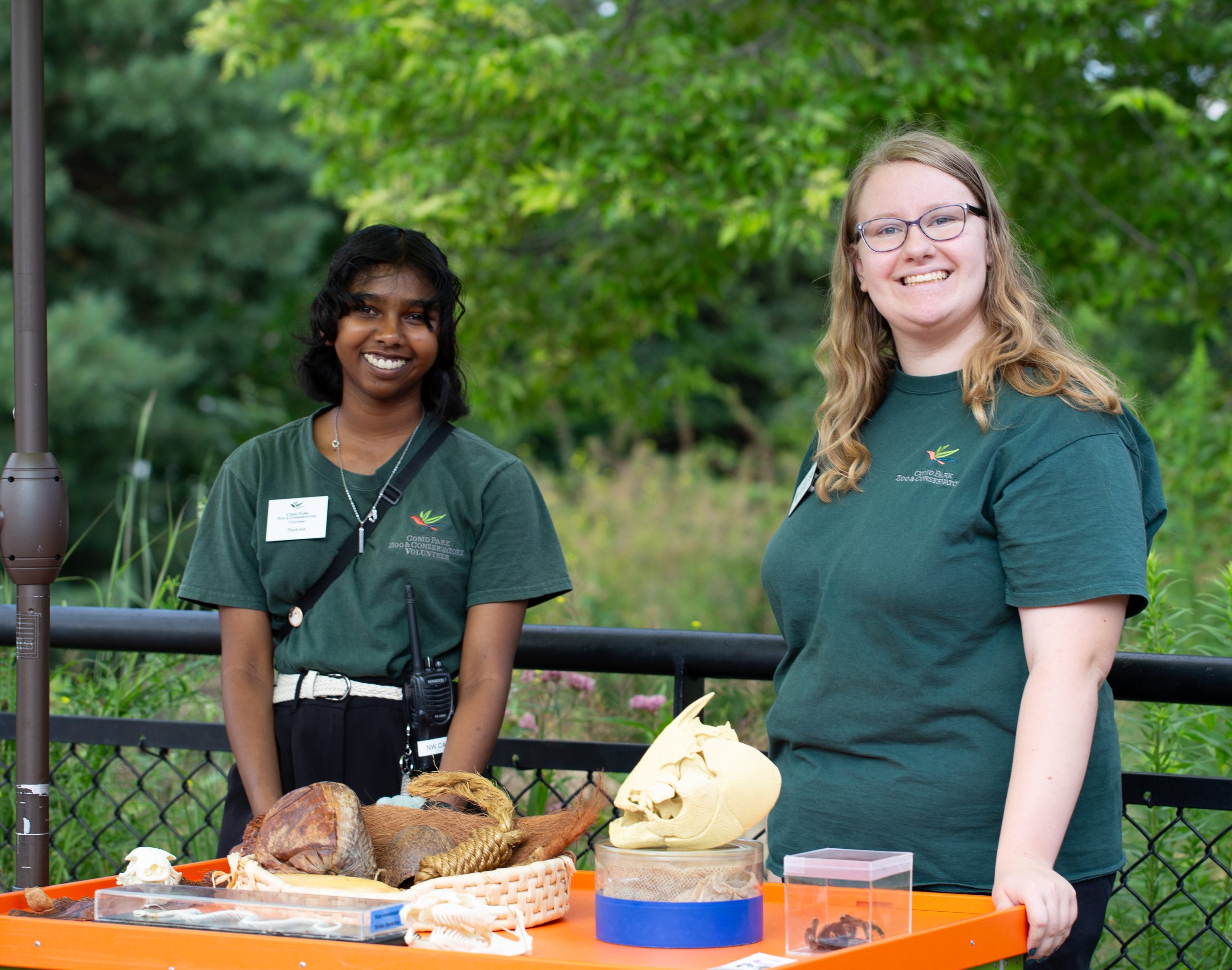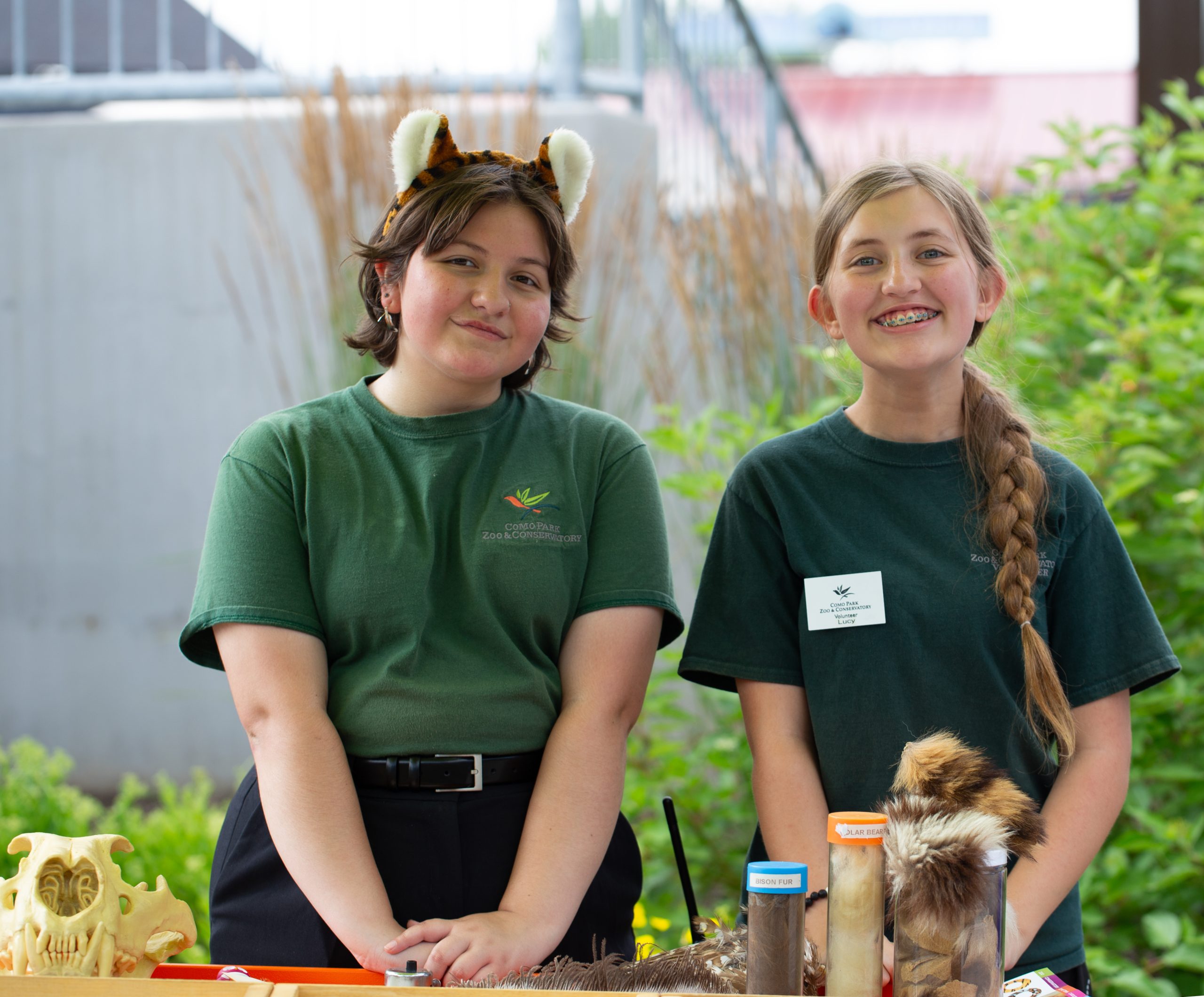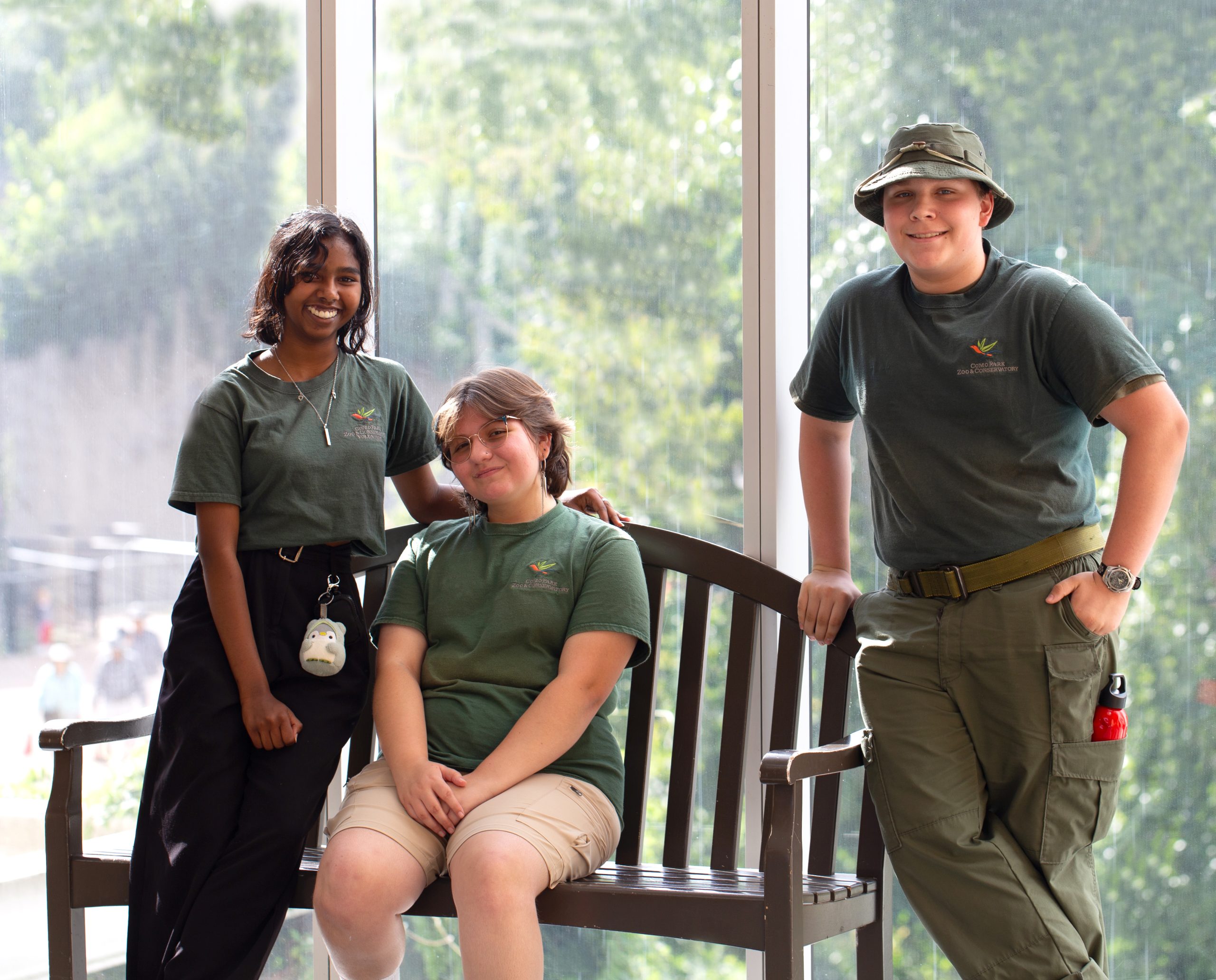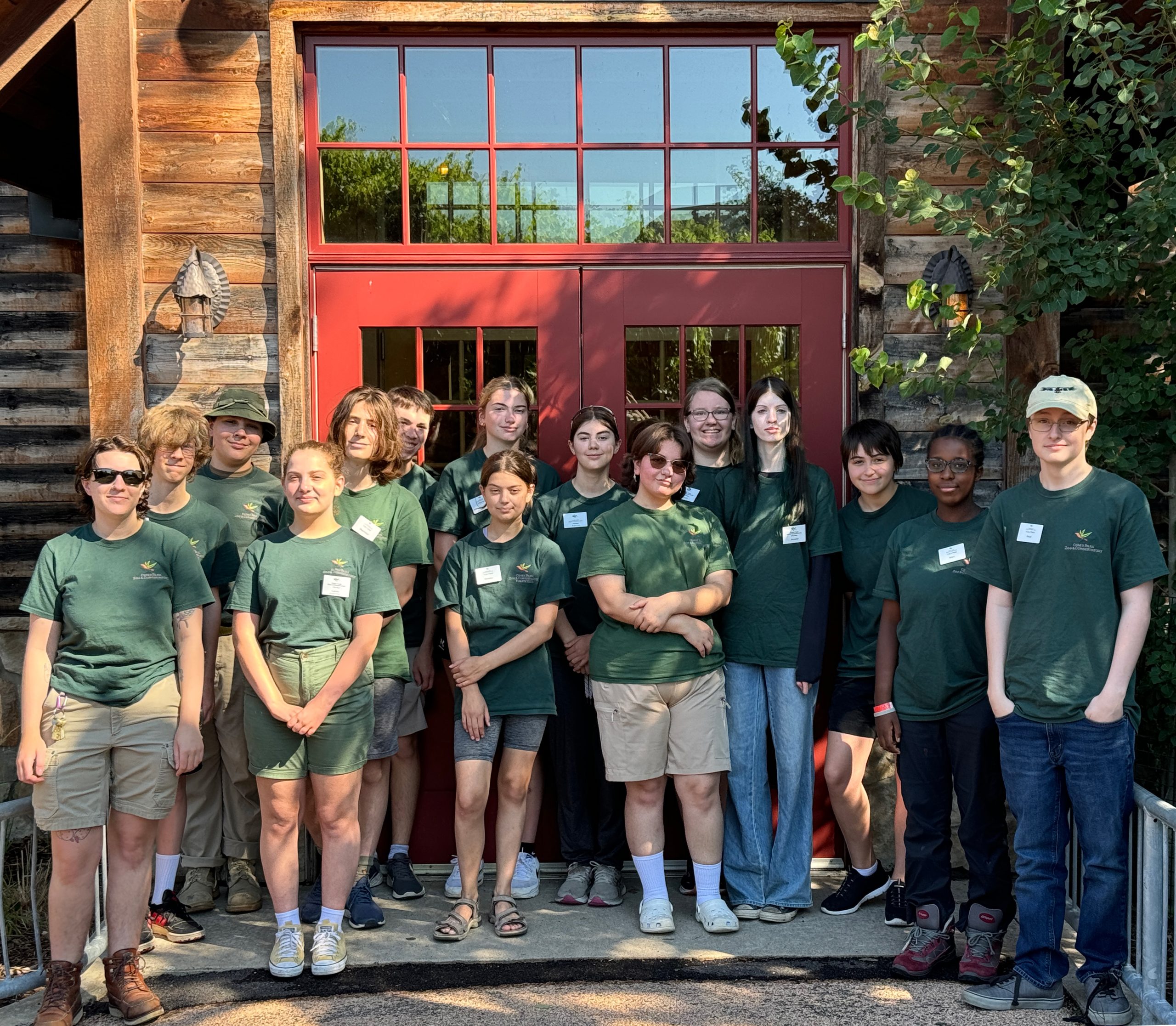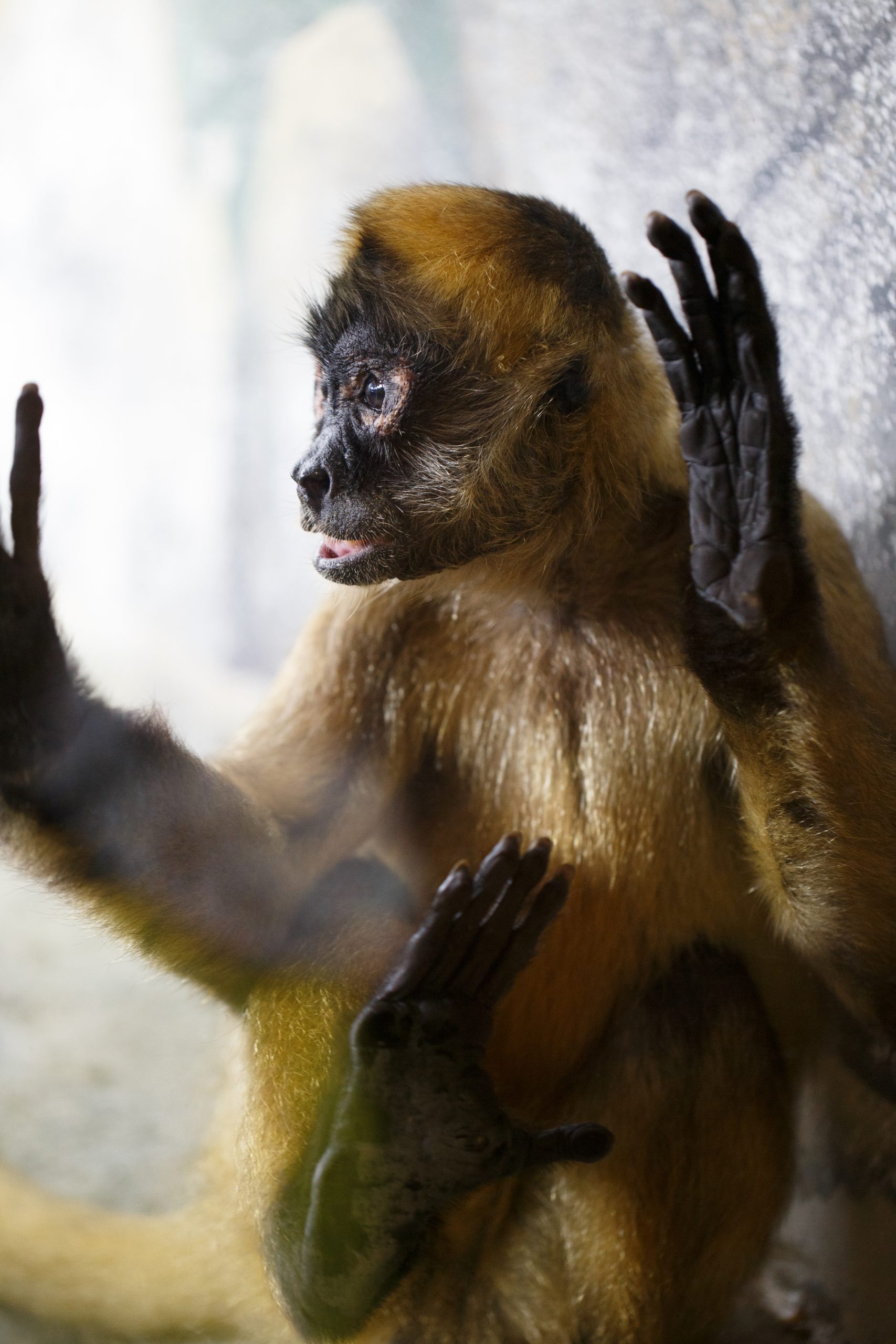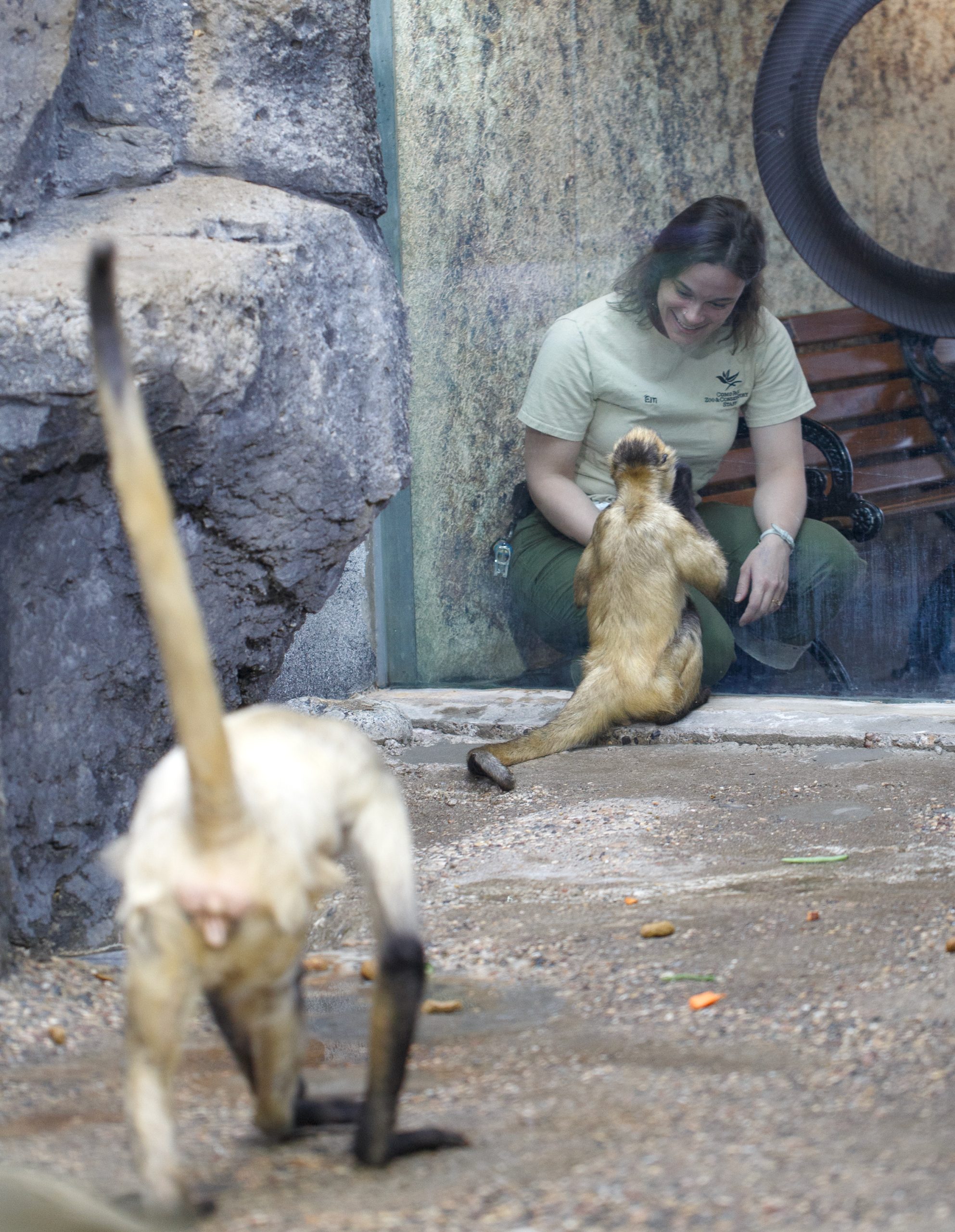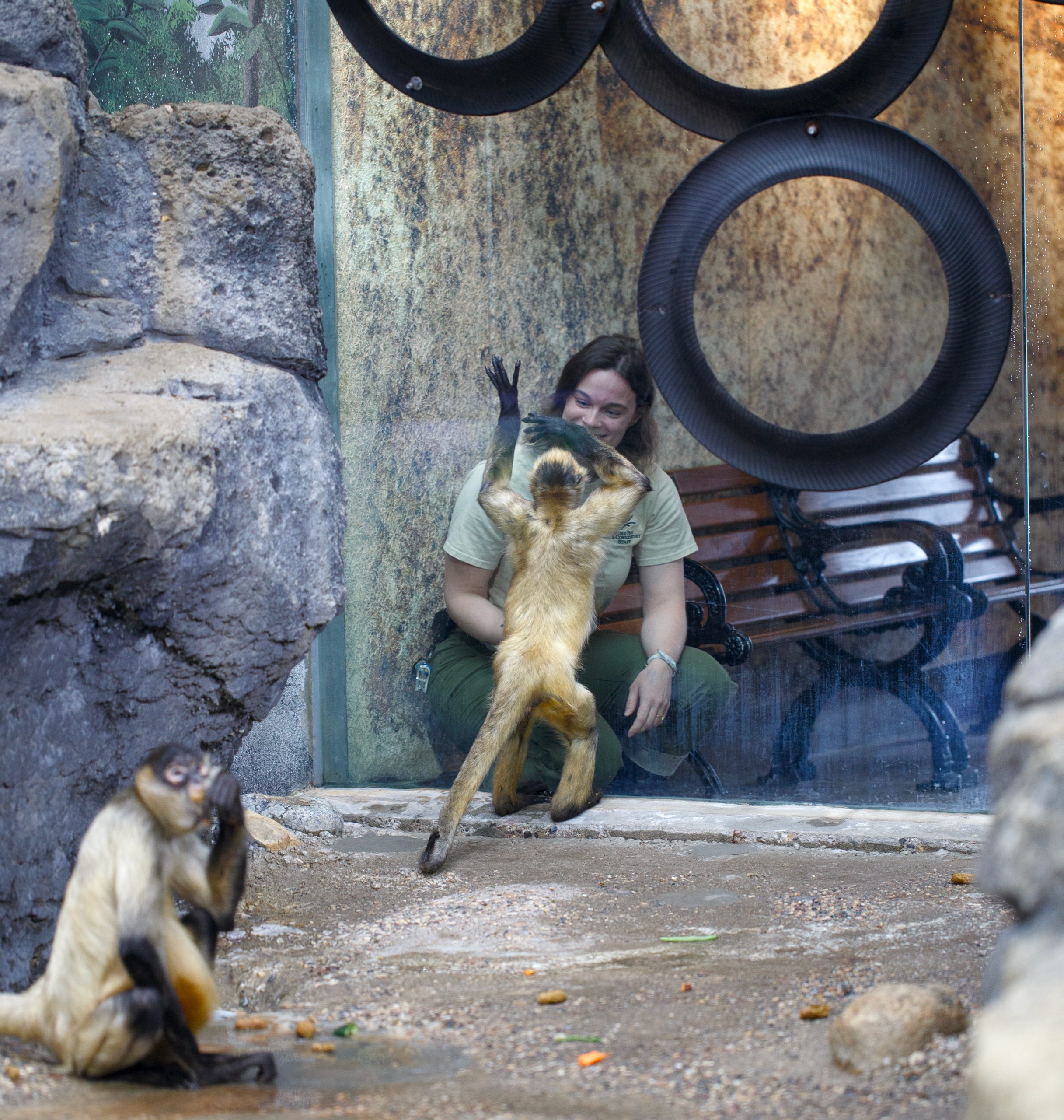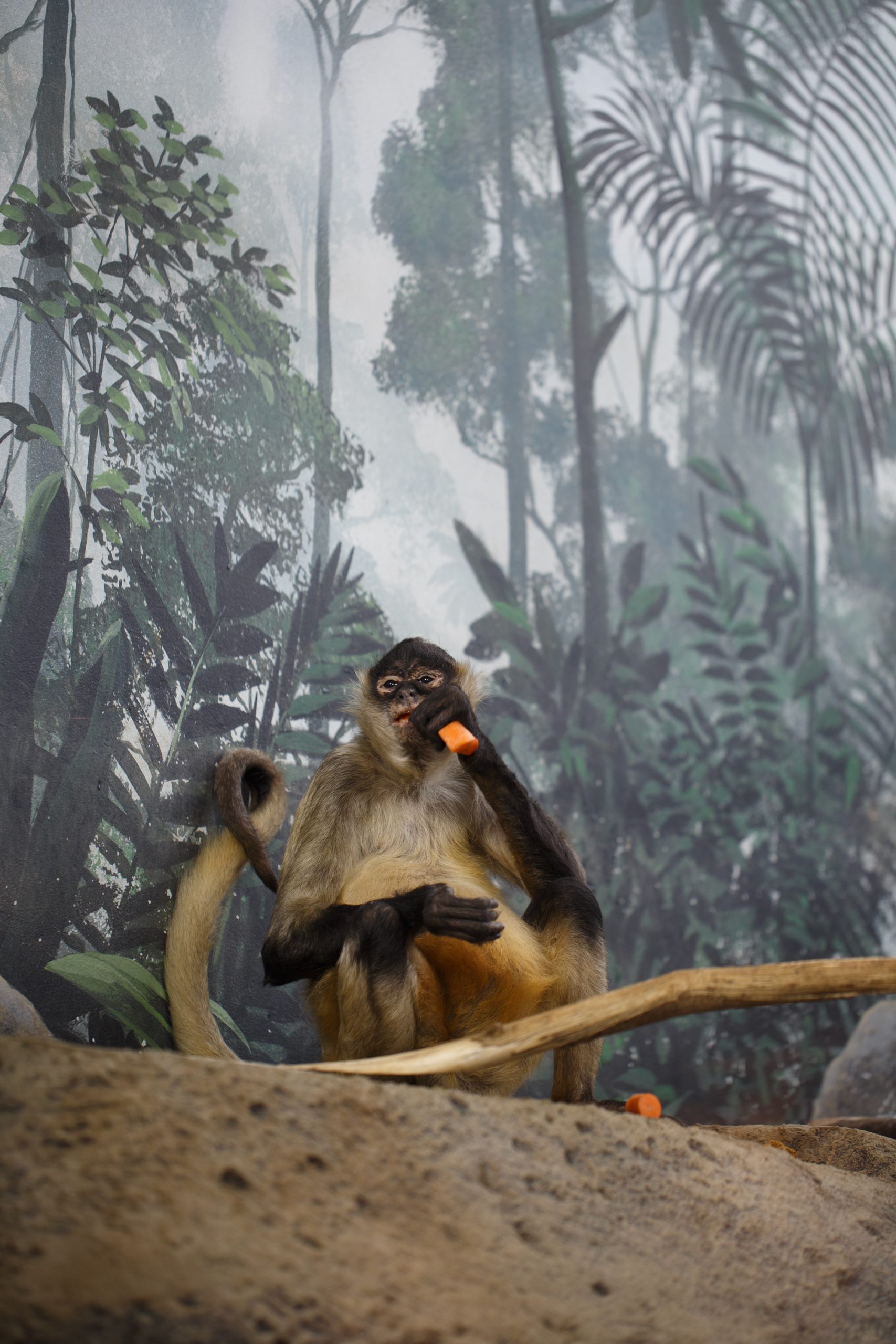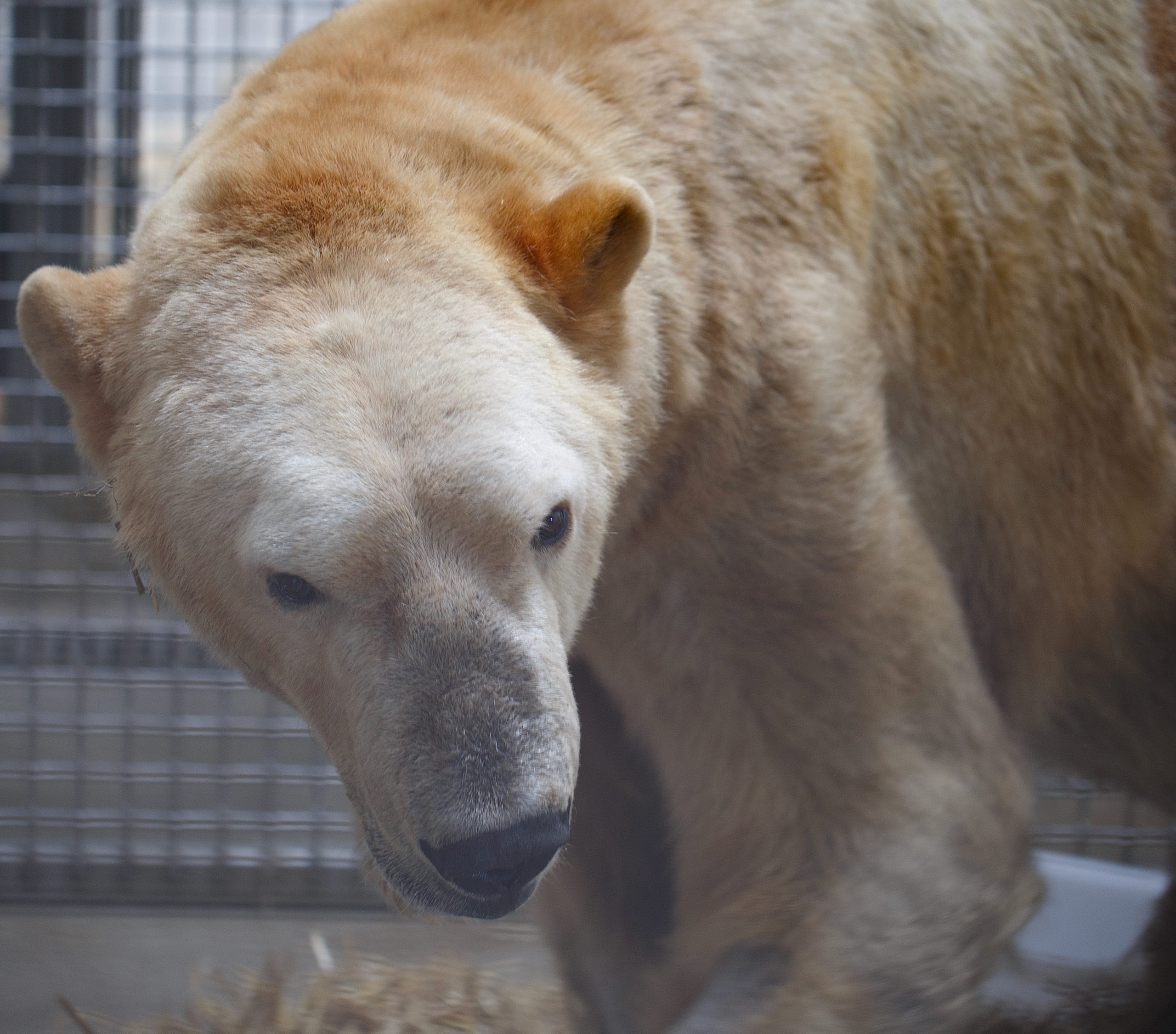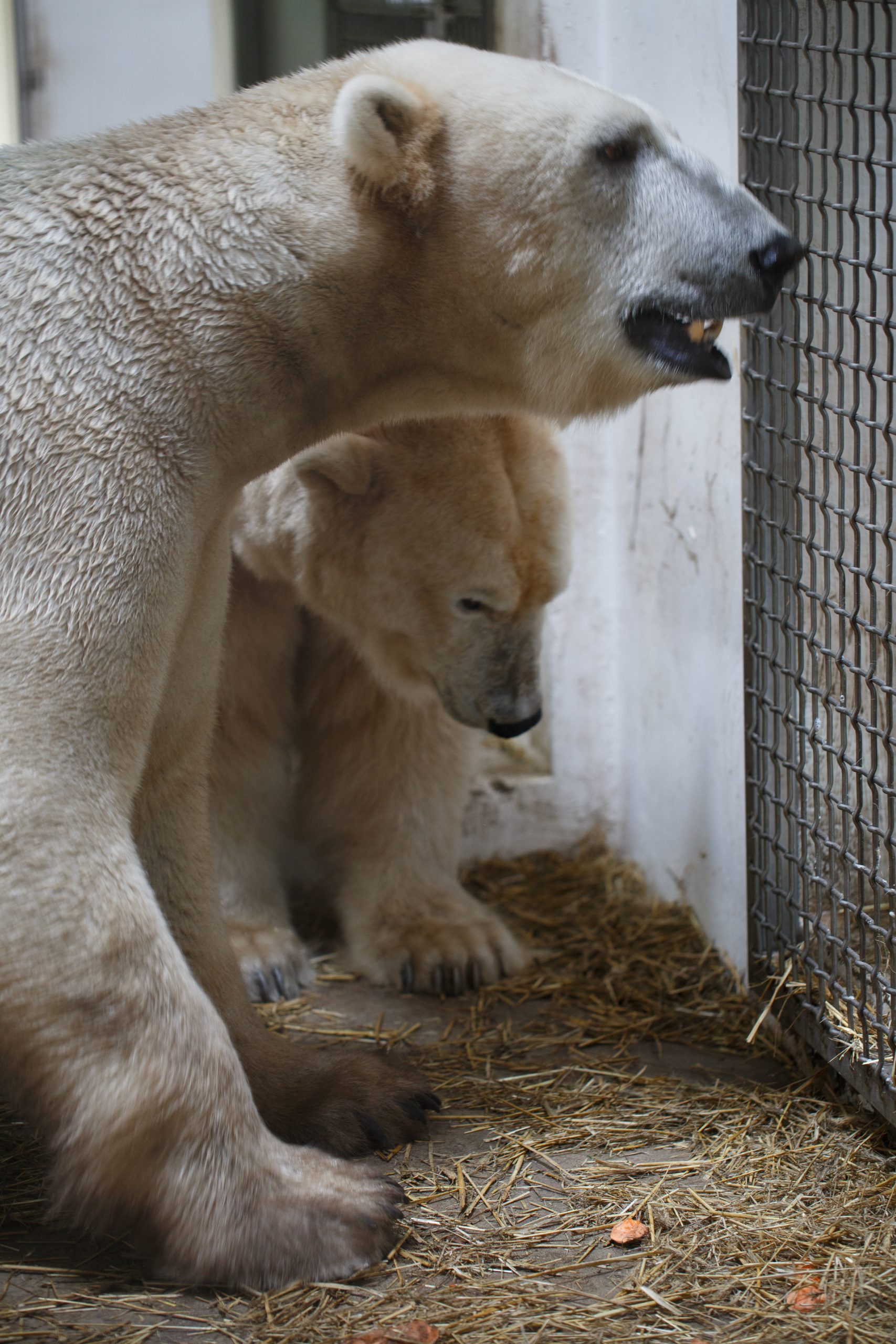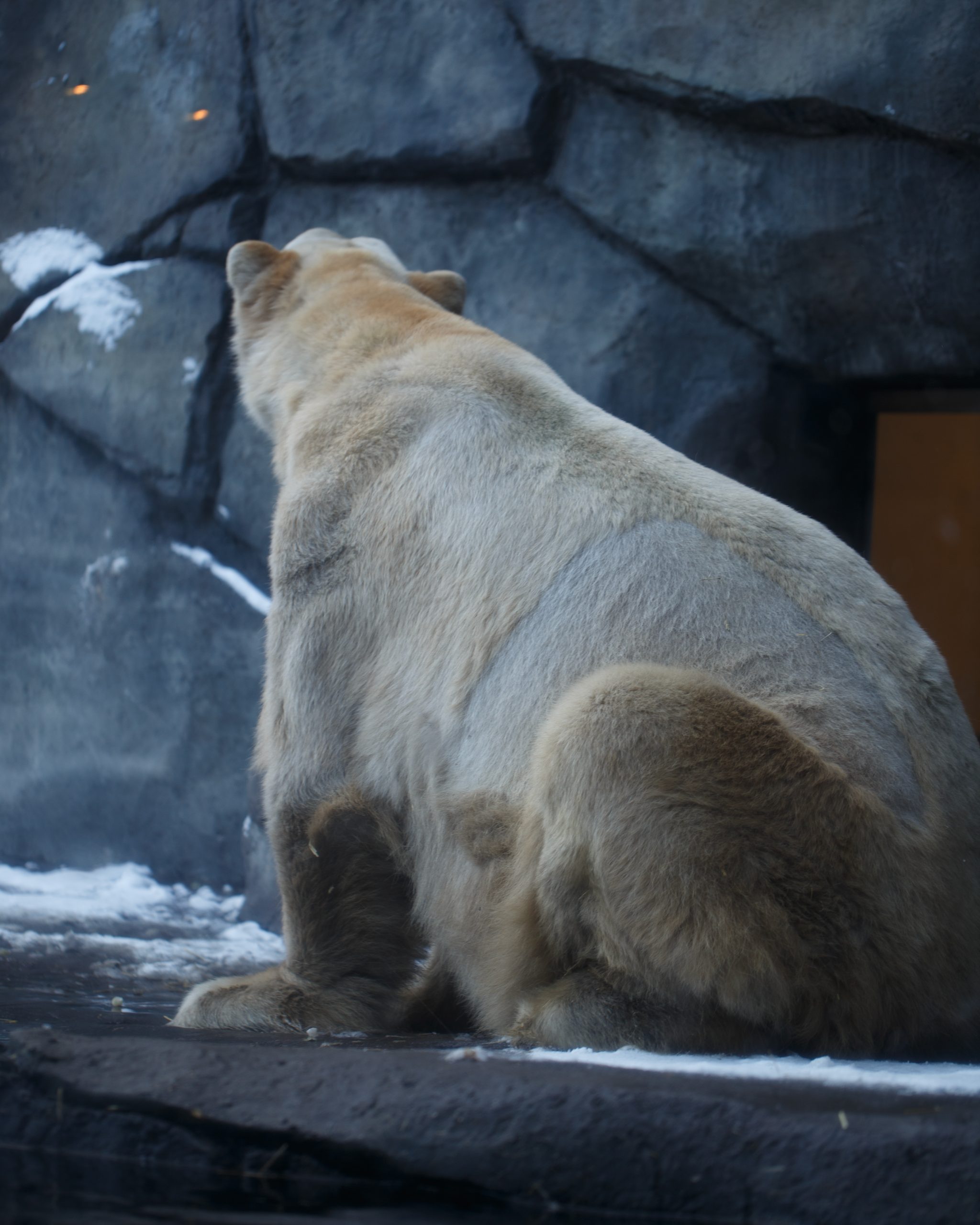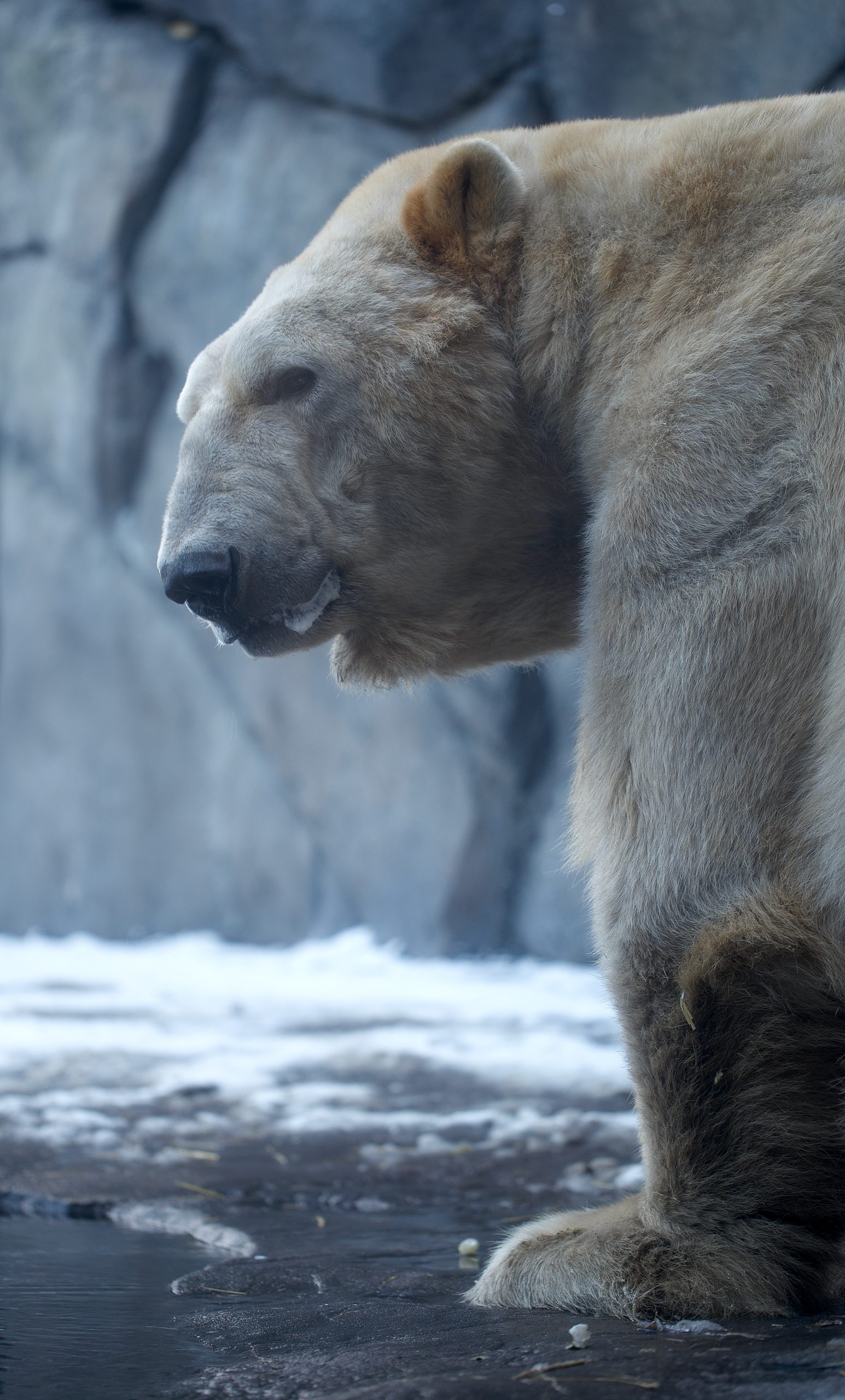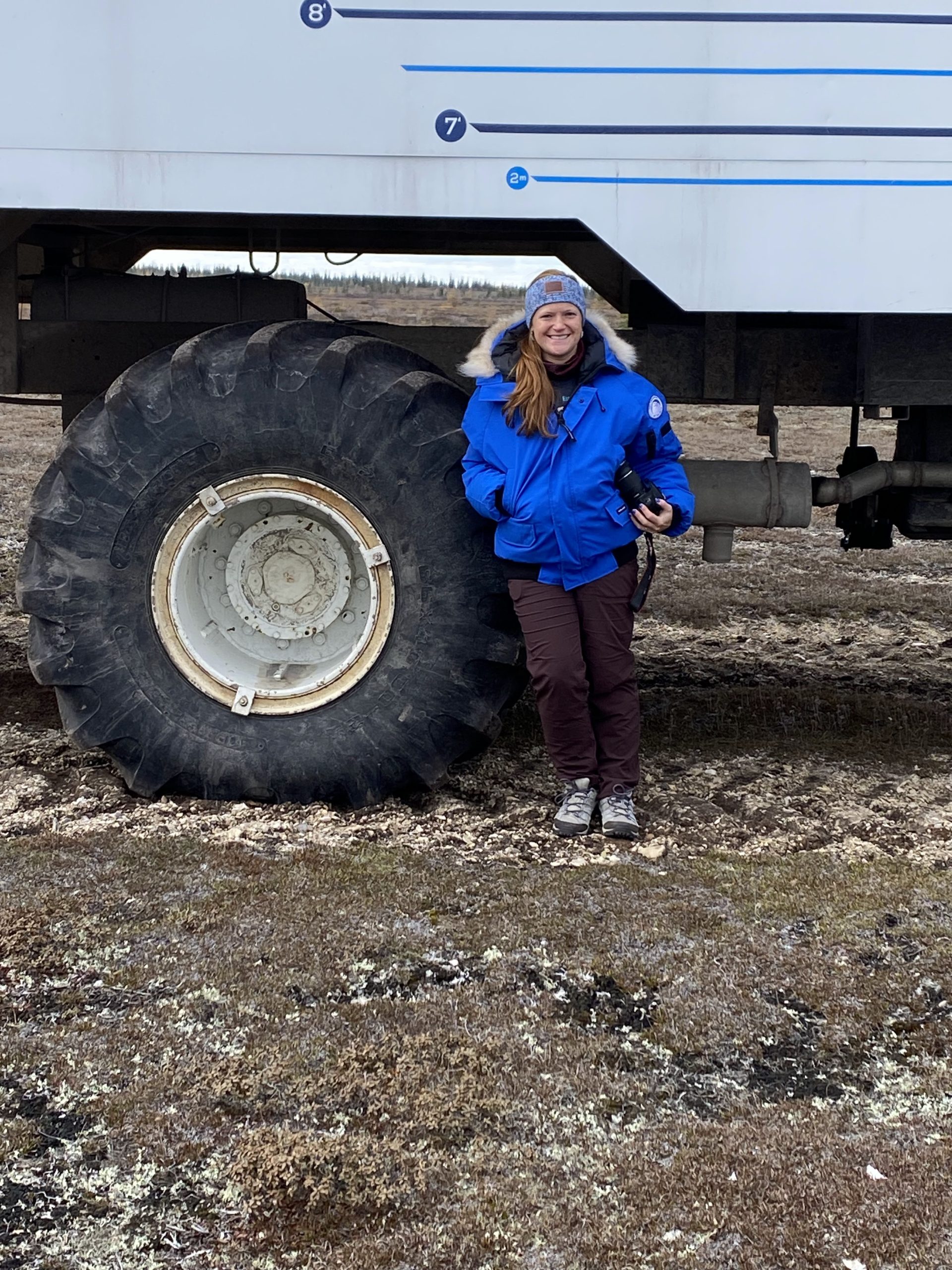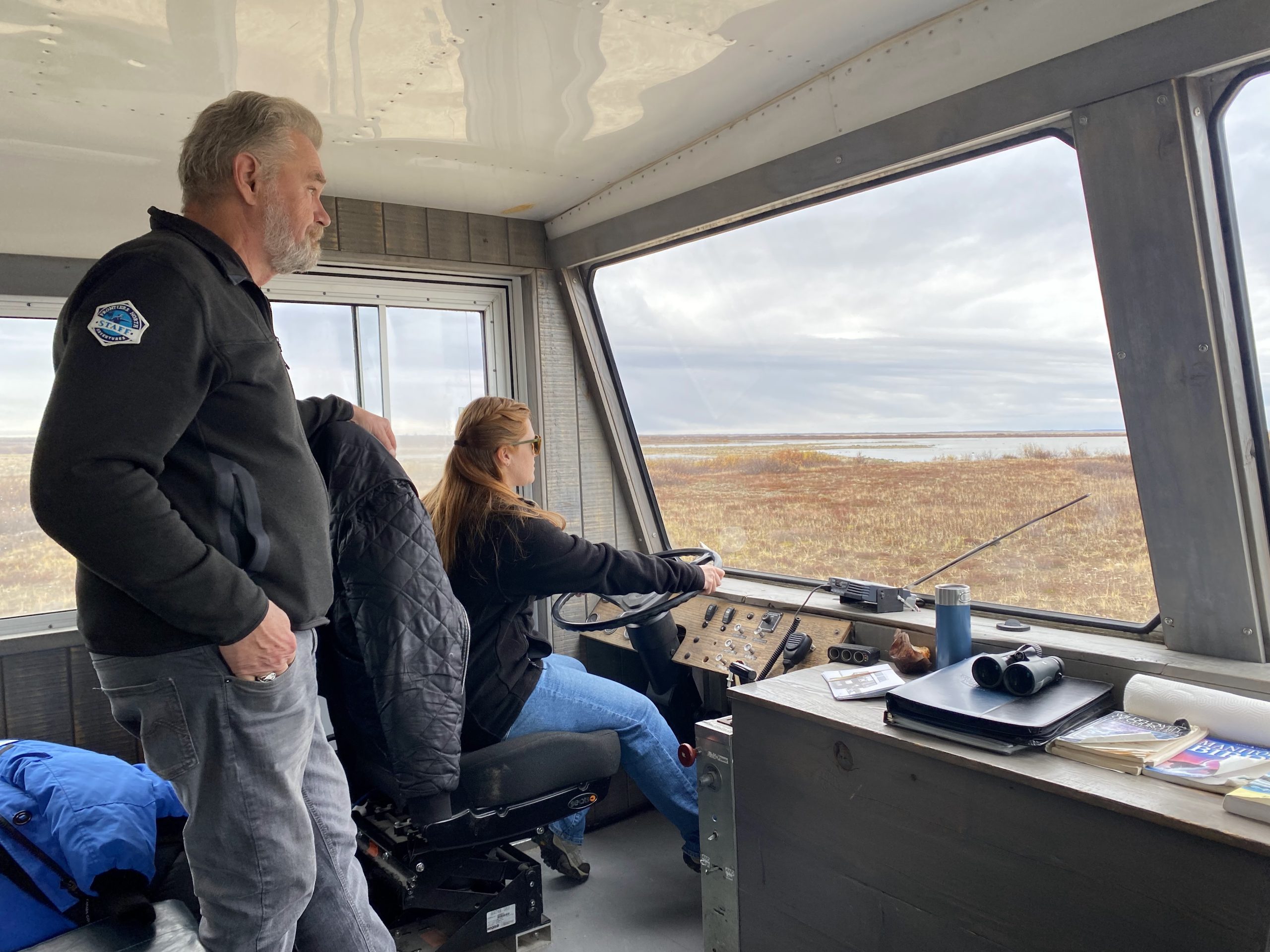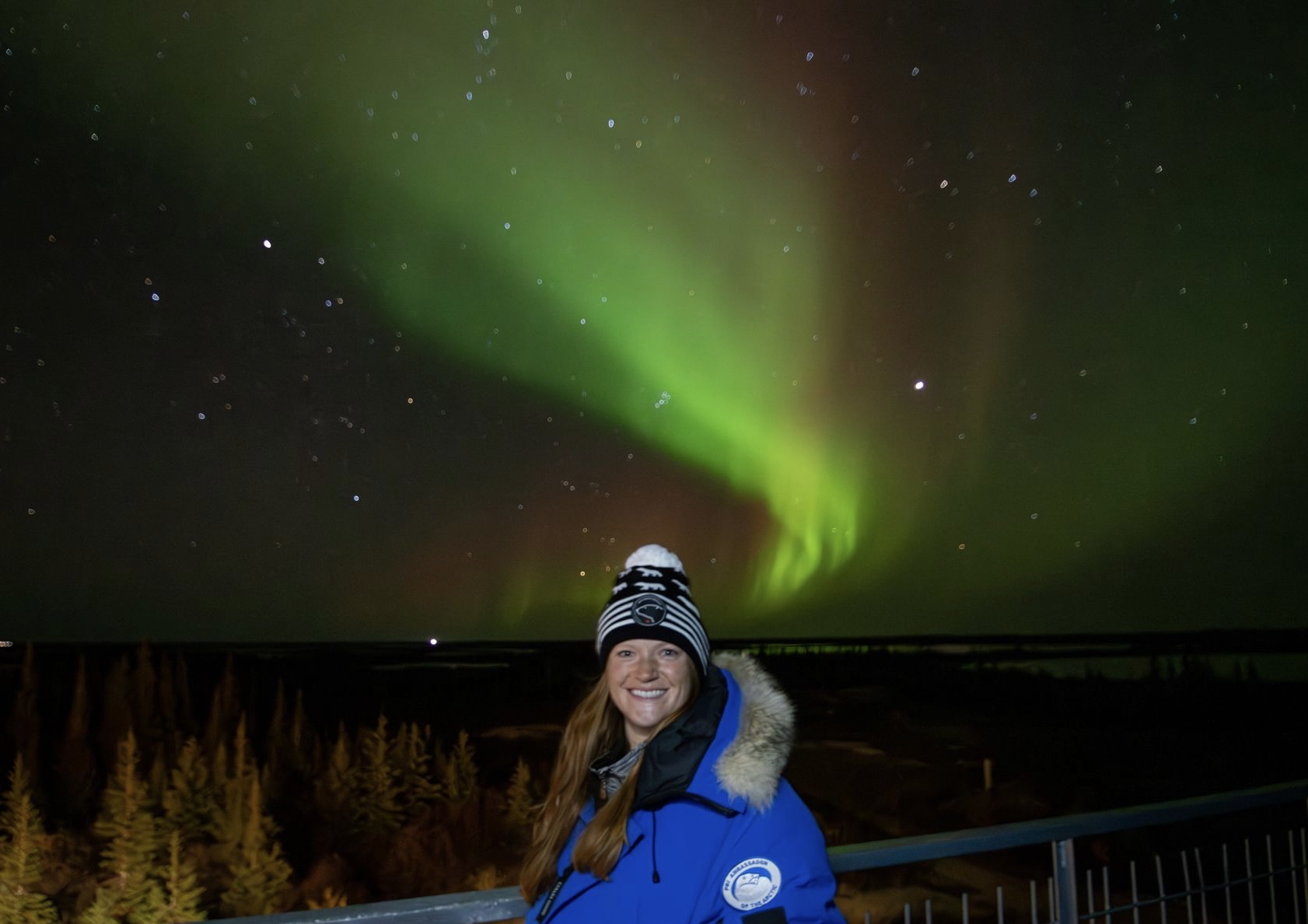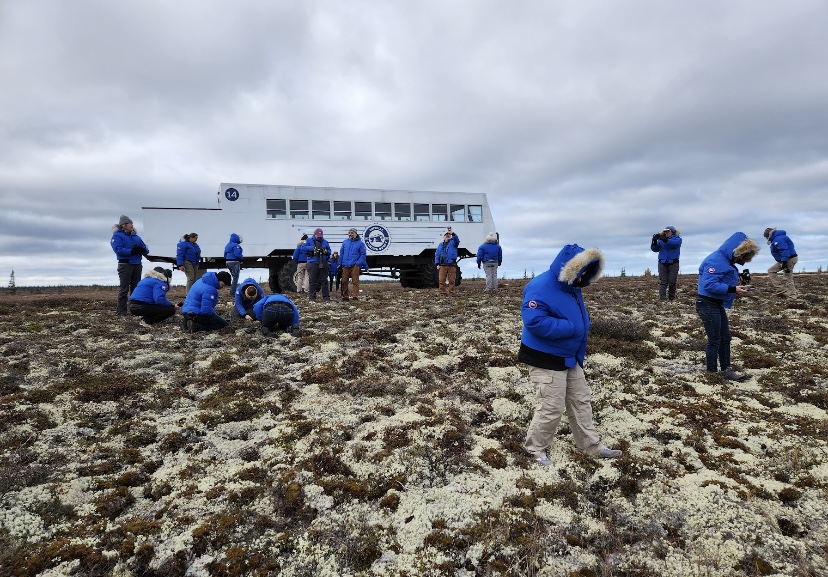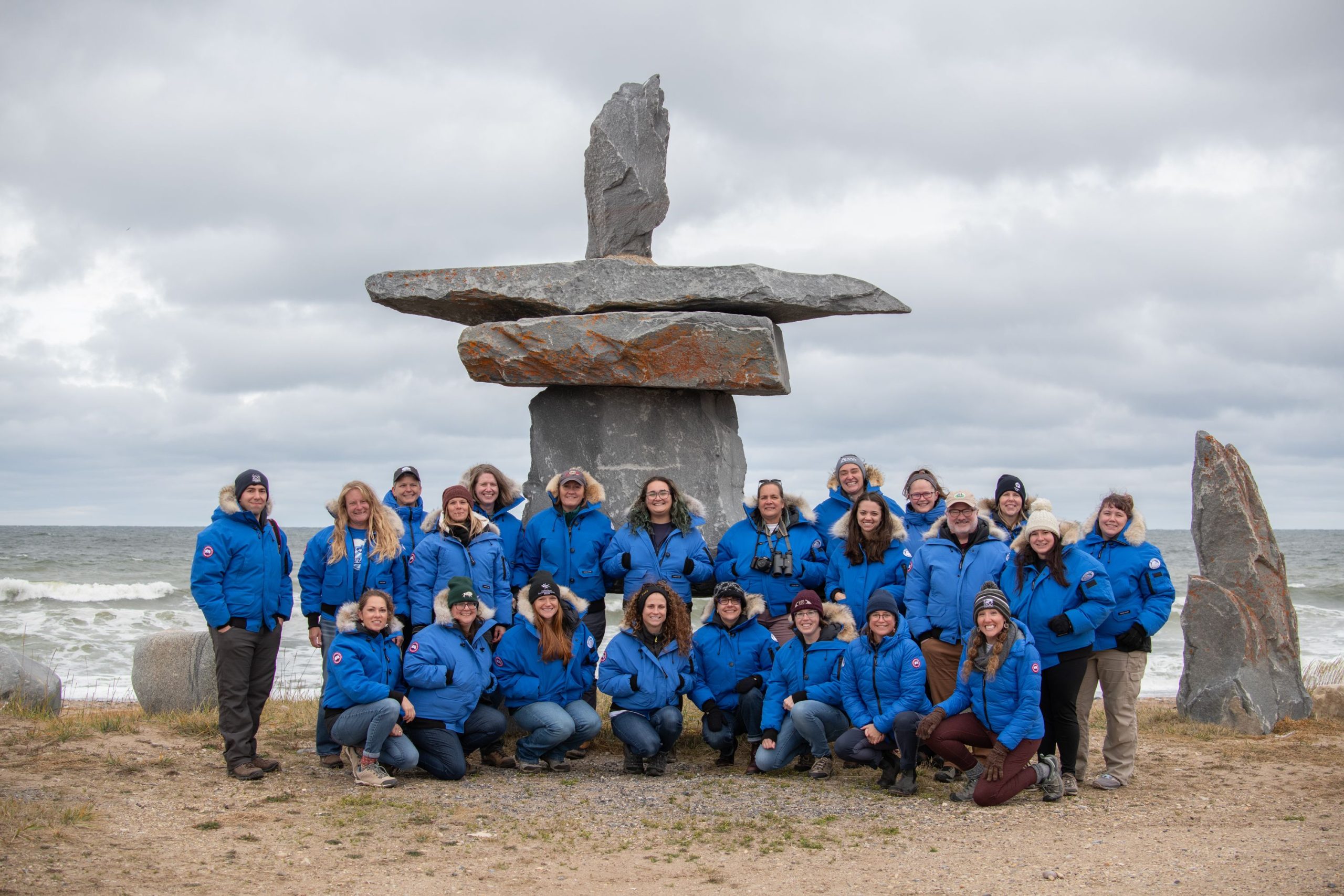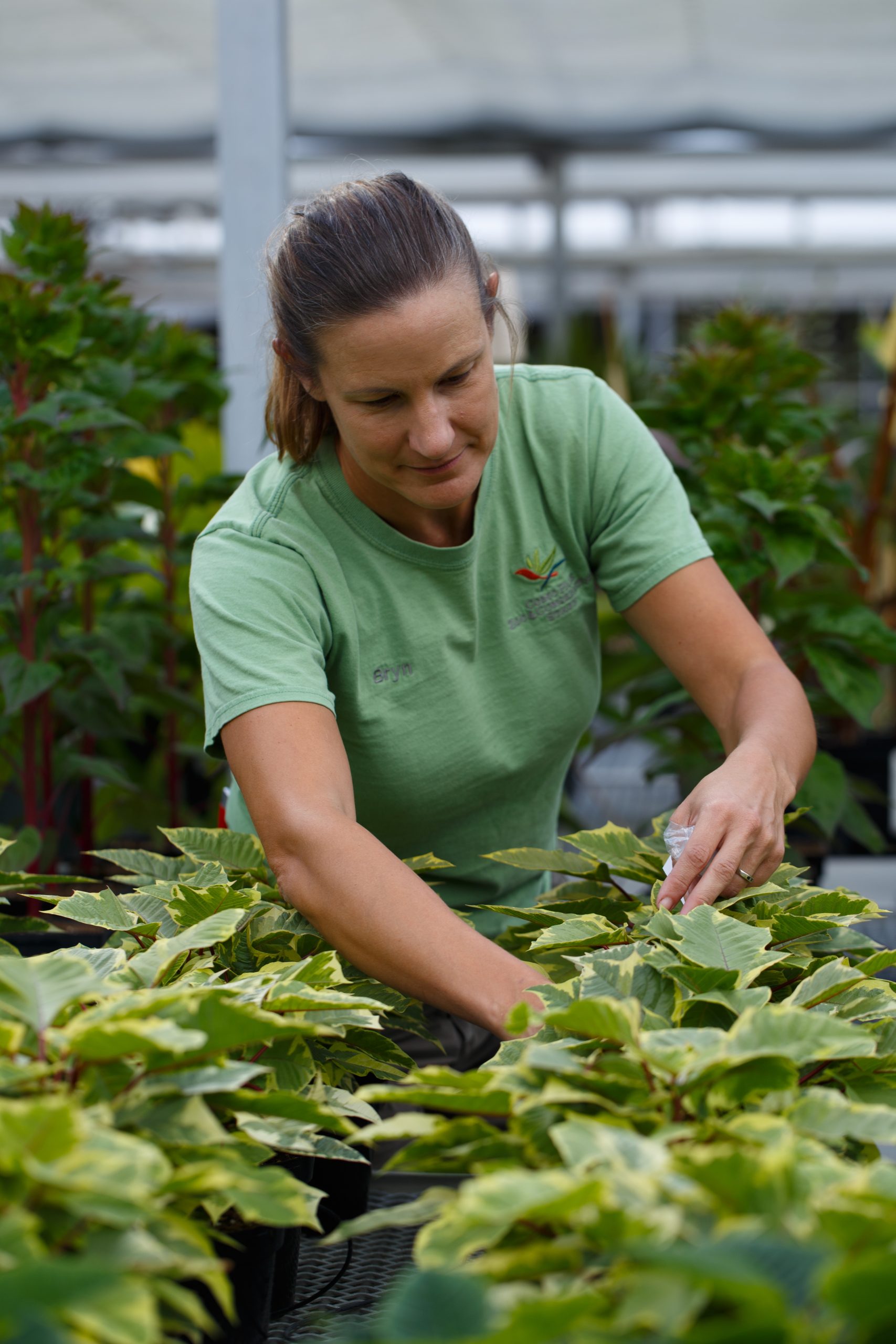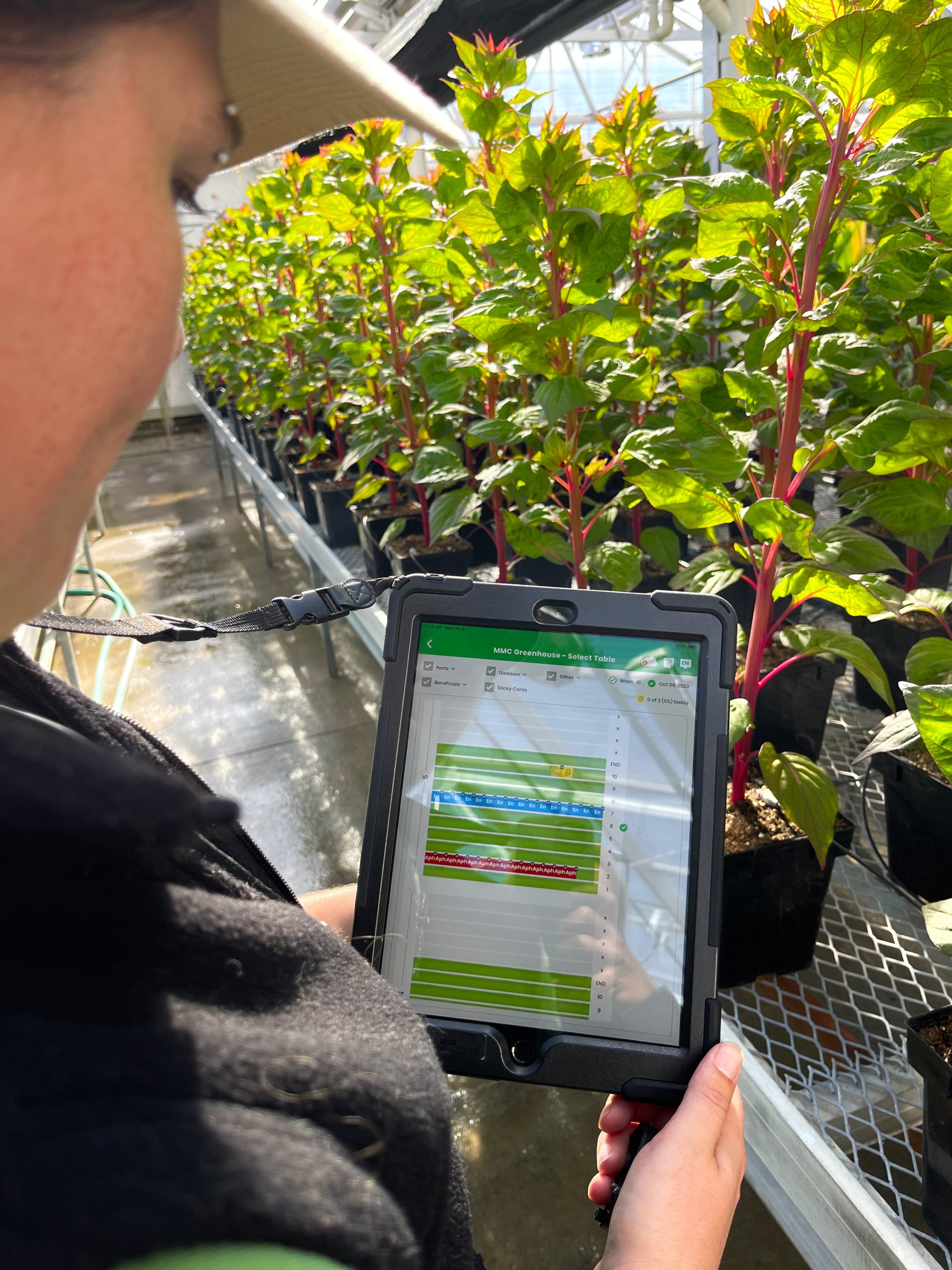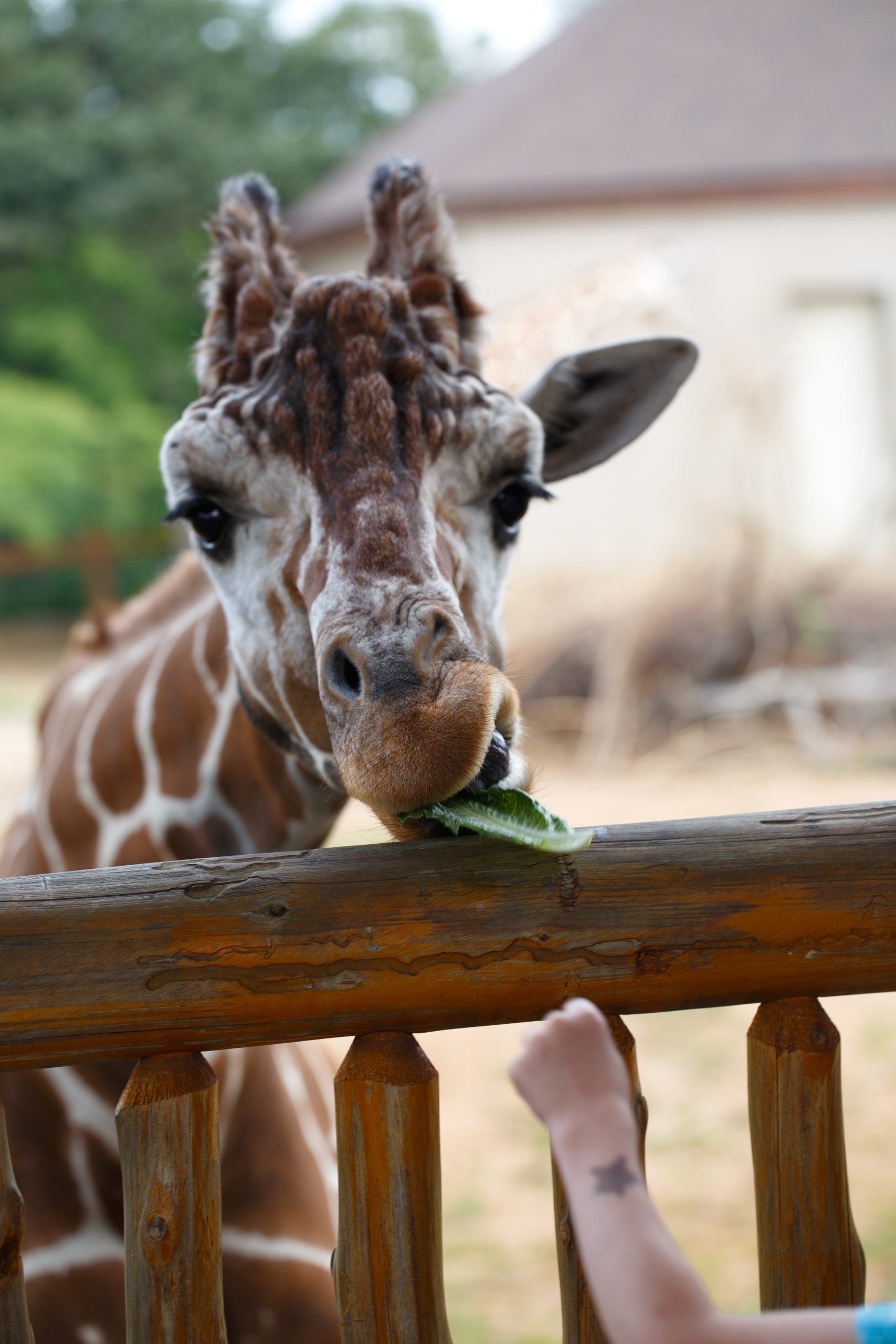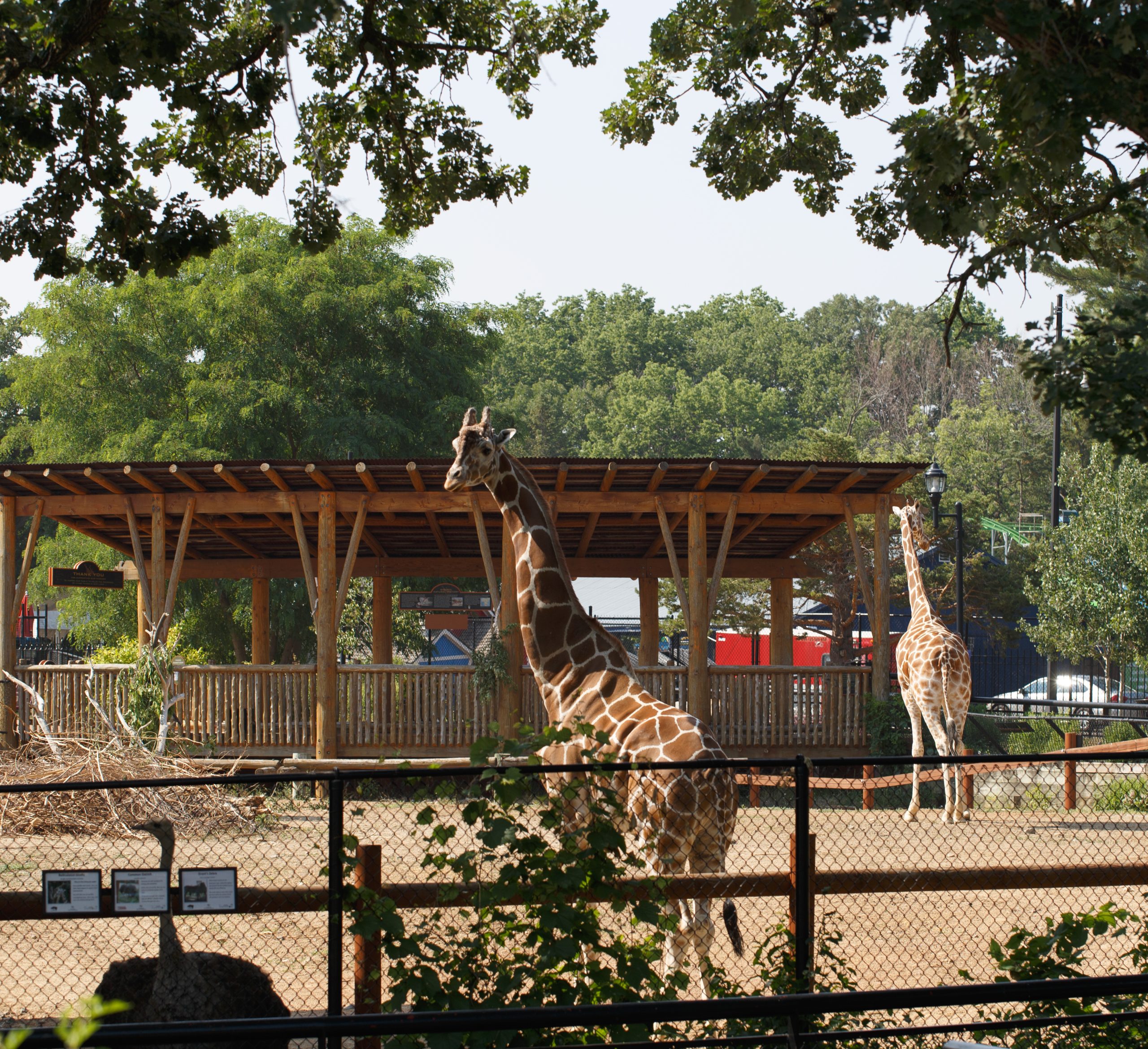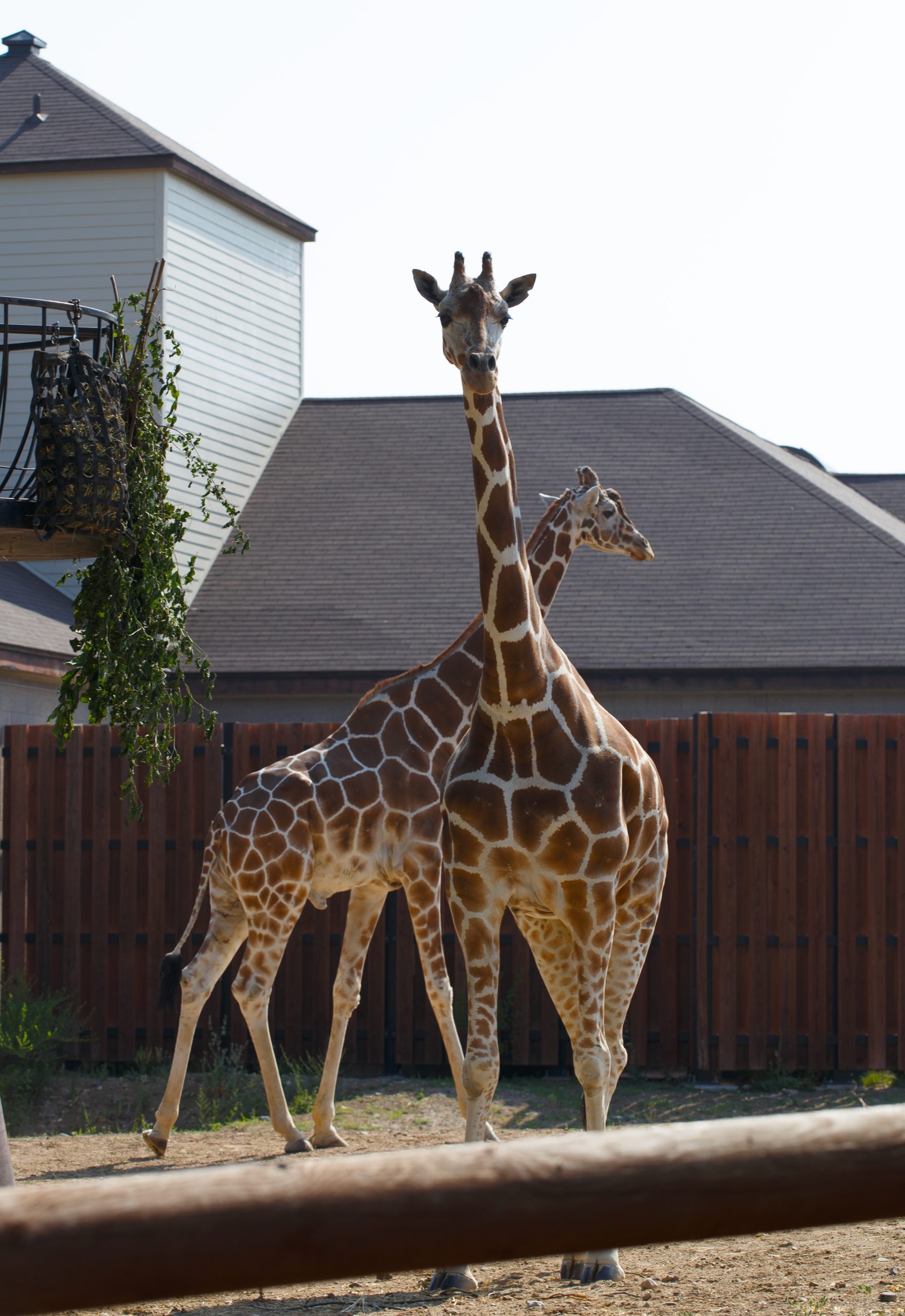Como Zoo’s life support specialist EJ Smith traveled to the Caribbean to support a promising project to rebuild the vanishing coral reefs

Vivid with color and teeming with life, coral reefs are among the most amazing ecosystems on the planet, accounting for just one percent of the ocean floor’s surface, yet supporting nearly a quarter of all marine species.
But with growing greenhouse gas emissions, rising sea temperatures, ocean acidification, and a host of other factors, reefs around the world are in danger of dying out. While more than half of the world’s living coral has been lost since 1950, scientists predict more than 90 percent could disappear by 2050.
While the challenges are daunting, Como Zoo life support specialist EJ Smith recently found some cause for hope in the Caribbean where a new conservation group called the Elkhorn Marine Conservancy is working on a solution. With the help of a Como Friends Conservation Champions grant, Smith spent three weeks at the EMC’s sites in Antigua and Barbuda helping the small nonprofit with a promising approach to reef restoration.
“To help these reefs rebound, they’re working to create coral nurseries,” Smith explains. “They’ll look for healthy, [stress resistant] coral colonies out on the reefs, and take small chunks of them back to the nursery where they’re broken into micro fragments. Corals grow at an incredibly slow pace, but these micro fragments are found to grow faster in small colonies, speeding up that process of coral growth.” Corals are cultivated on ropes and coral “trees” made of PVC piping that can then be replanted onto degraded reefs. EMC’s nurseries are currently fostering 14 species of reef-building corals, many of which are critically endangered.
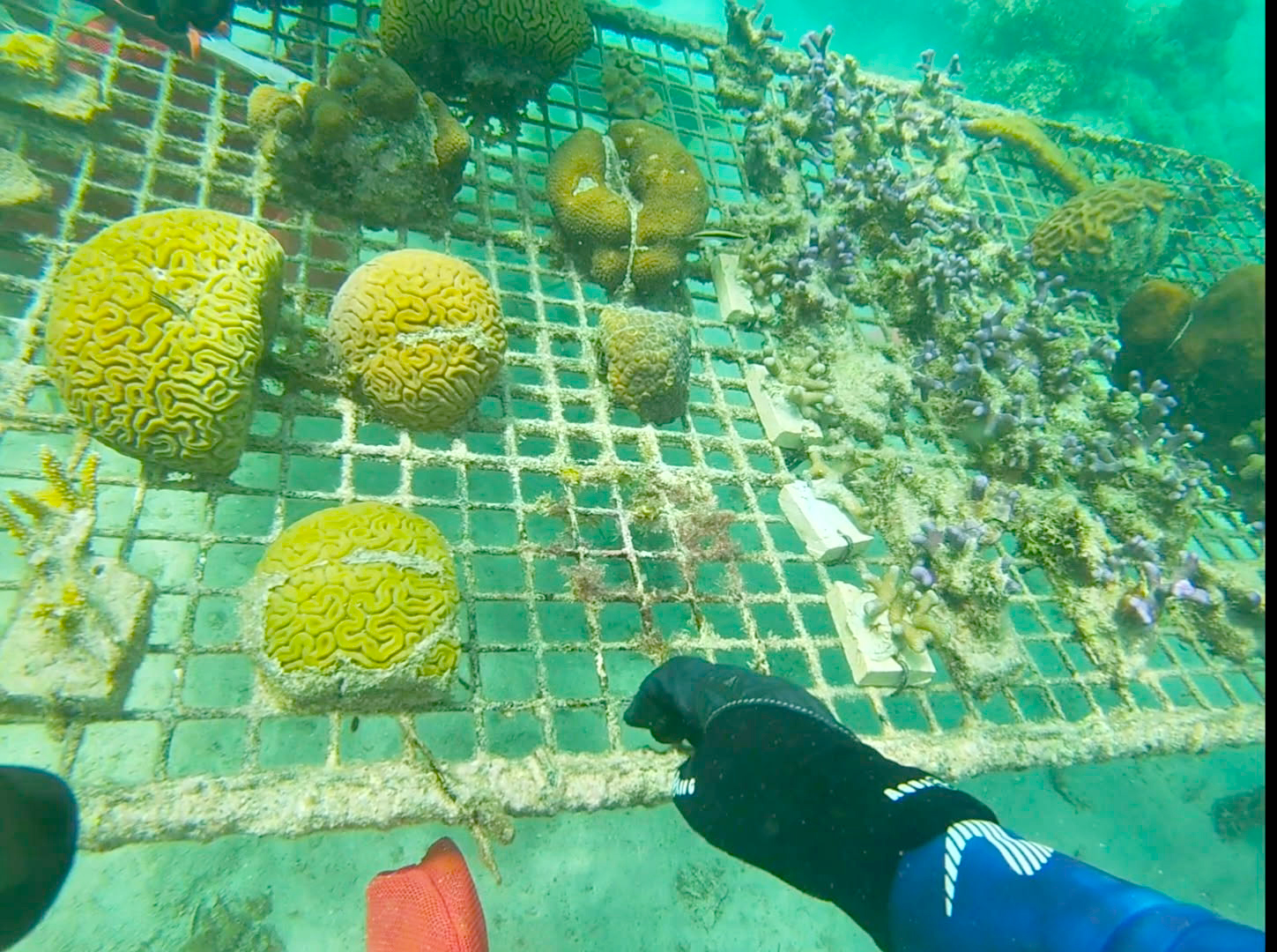
Growing at rates of just millimeters a year, coral barrier reefs can take more than 100,000 years to form. Groups like the Elkhorn Marine Conservancy are making coral nurseries from micro fragments of healthy coral to help speed the process of renewal.
An expert diver, Smith is responsible for all of Como’s aquatic habitats, ensuring water quality for dozens of species, from polar bears to pacus, and regularly diving into Como Zoo’s aquatic habitats to troubleshoot. “I once did the math and figured that professionally and recreationally, I’ve spent about two months of my life submerged in the water,” he says. “But diving with [EMC’s staff] was like working with superheroes. Some of these folks had such amazing physical capabilities they could hold their breath for minutes at a time. It was just astounding.”
The water chemistry skills Smith has honed at Como Zoo are valuable to EMC’s work, and their plans to expand their coral nursery operations. To deepen the connections between conservation efforts in the Caribbean and at Como Zoo, Smith’s colleague Asher Berg, Como Zoo’s Aquatics Keeper, will be taking a Conservation Champions trip of his own this fall to support the renewal of coral near Antigua’s Green Island, York Island, and Cades Reef.
With a new tank of coral beds coming soon to the Aquatics Building, Smith says he’s looking forward to sharing his insights about coral conservation in upcoming keeper talks. While the health of the world’s coral hangs in the balance, Smith says he finds hope in the visit he made to Antigua’s St. Andrew’s School, where he talked with elementary school students about his work in life support, and how coral restoration can benefit the local economy, food chain, and climate resilience.
“This next generation of island people are already tied to conservation, because their lives really are impacted by the health of the reefs,” he says. “To hear these kids talk about how they want to work in conservation, or maintaining fish stocks, or protecting the reefs when they grow up was really heartwarming, to be honest. It makes you hopeful that conservation projects like this are making an impact.”
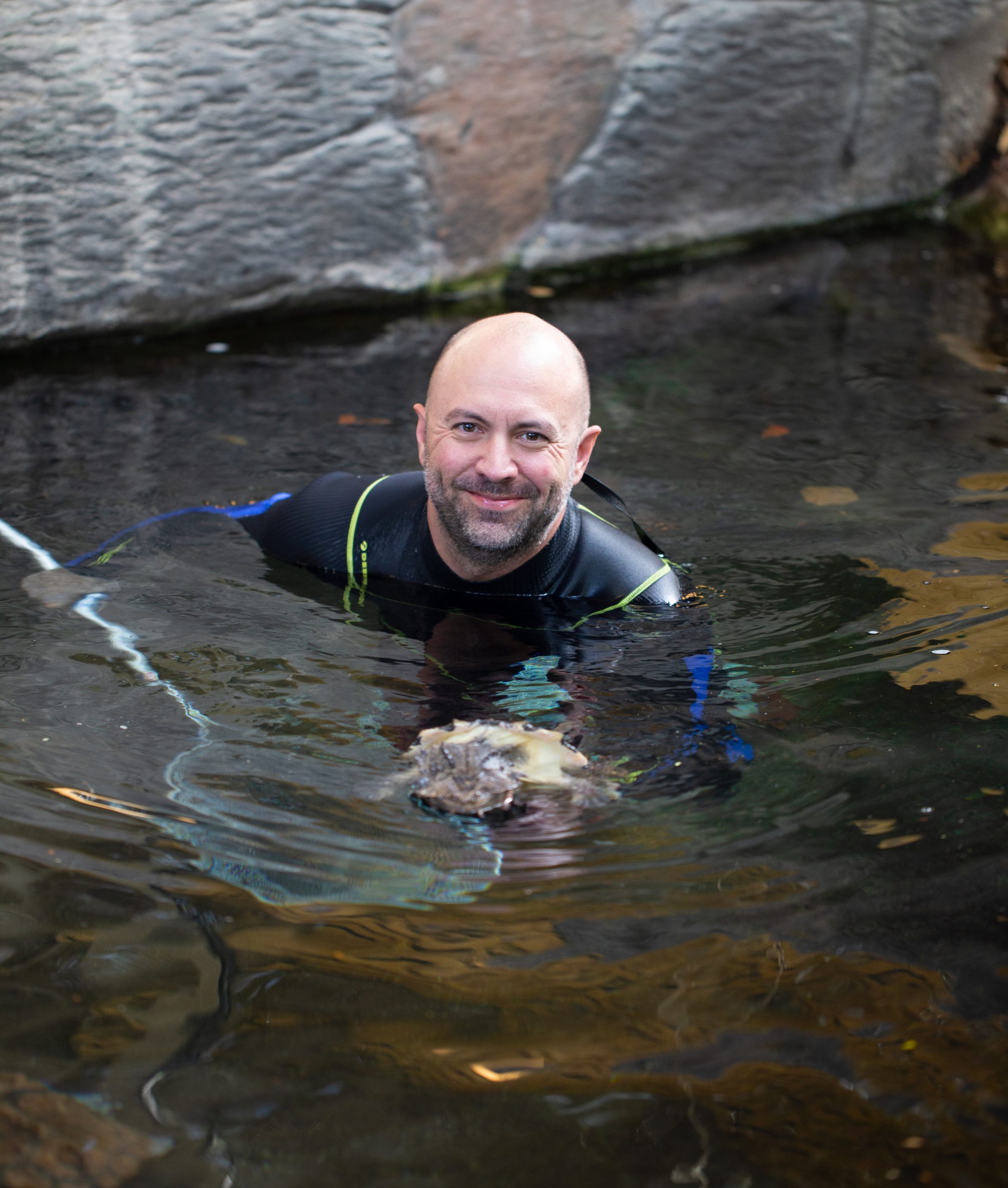
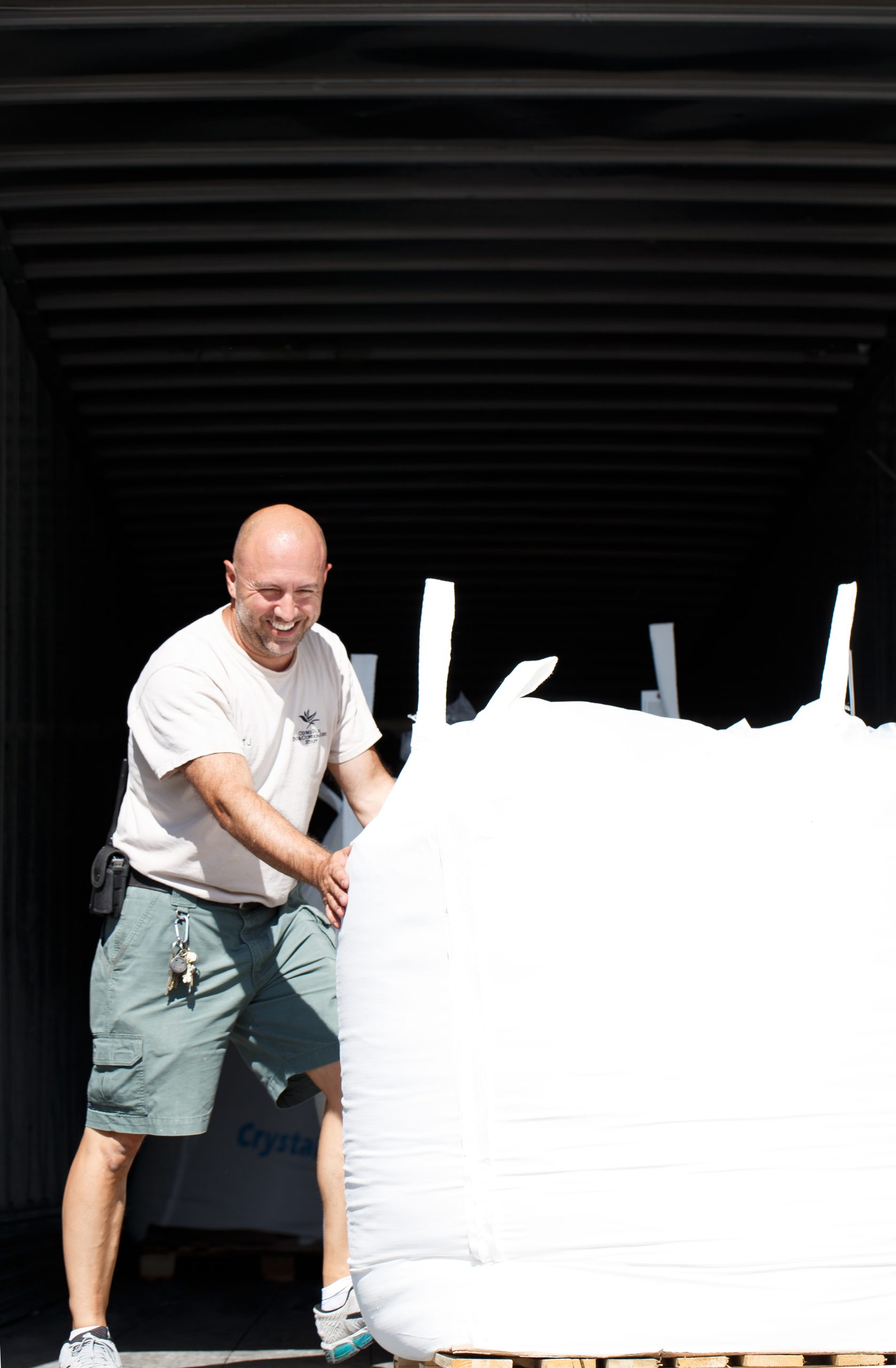
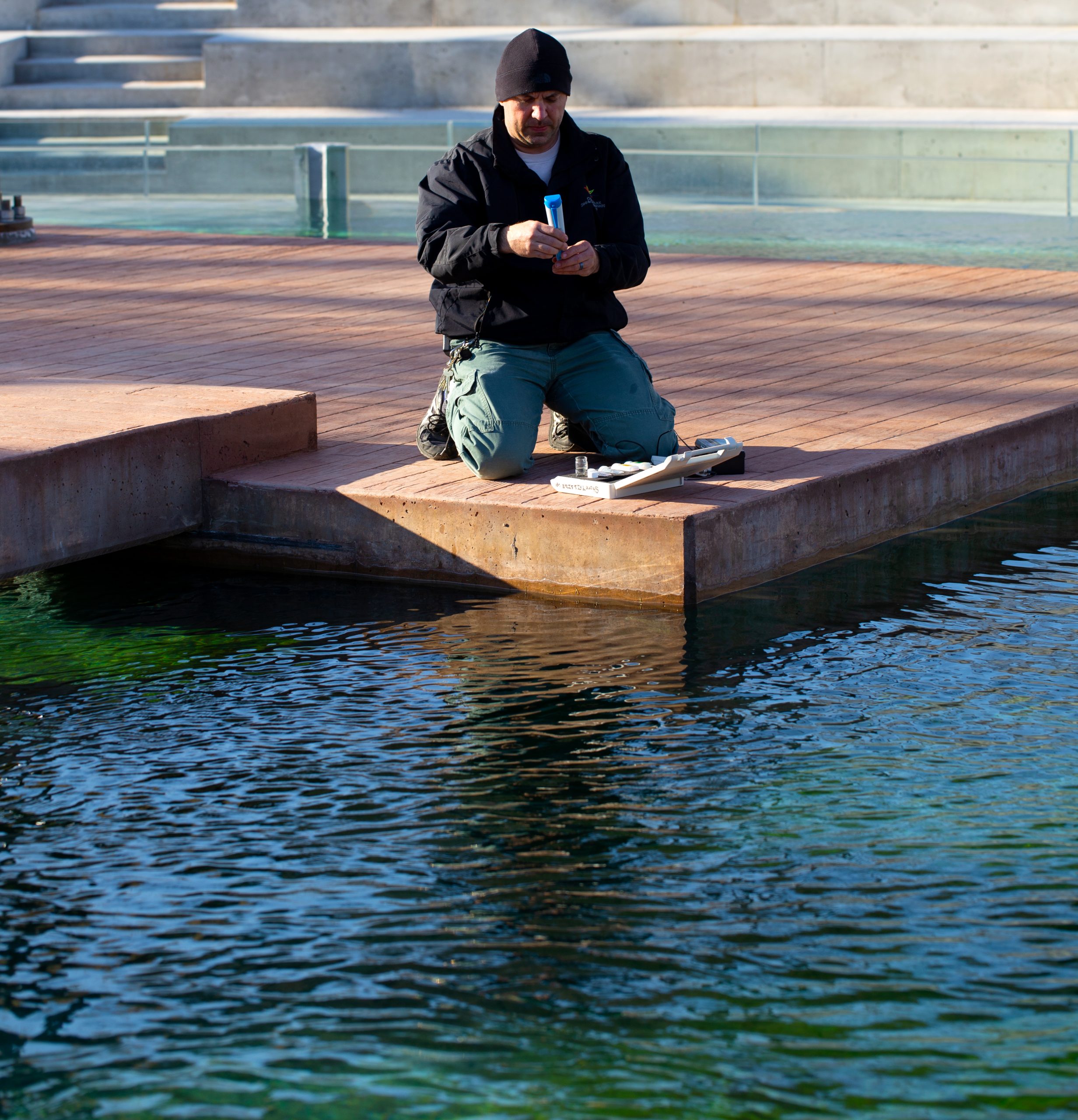
Your gifts to Como Friends support Conservation Champions, a program that encourages Como’s professional horticulture and zookeeping staff to participate in field conservation and restoration projects around the world. Thank you!

Conservation Champion Andrea Persson traveled to Sausalito’s Marine Mammal Center to learn the secrets of seal and sea lion care

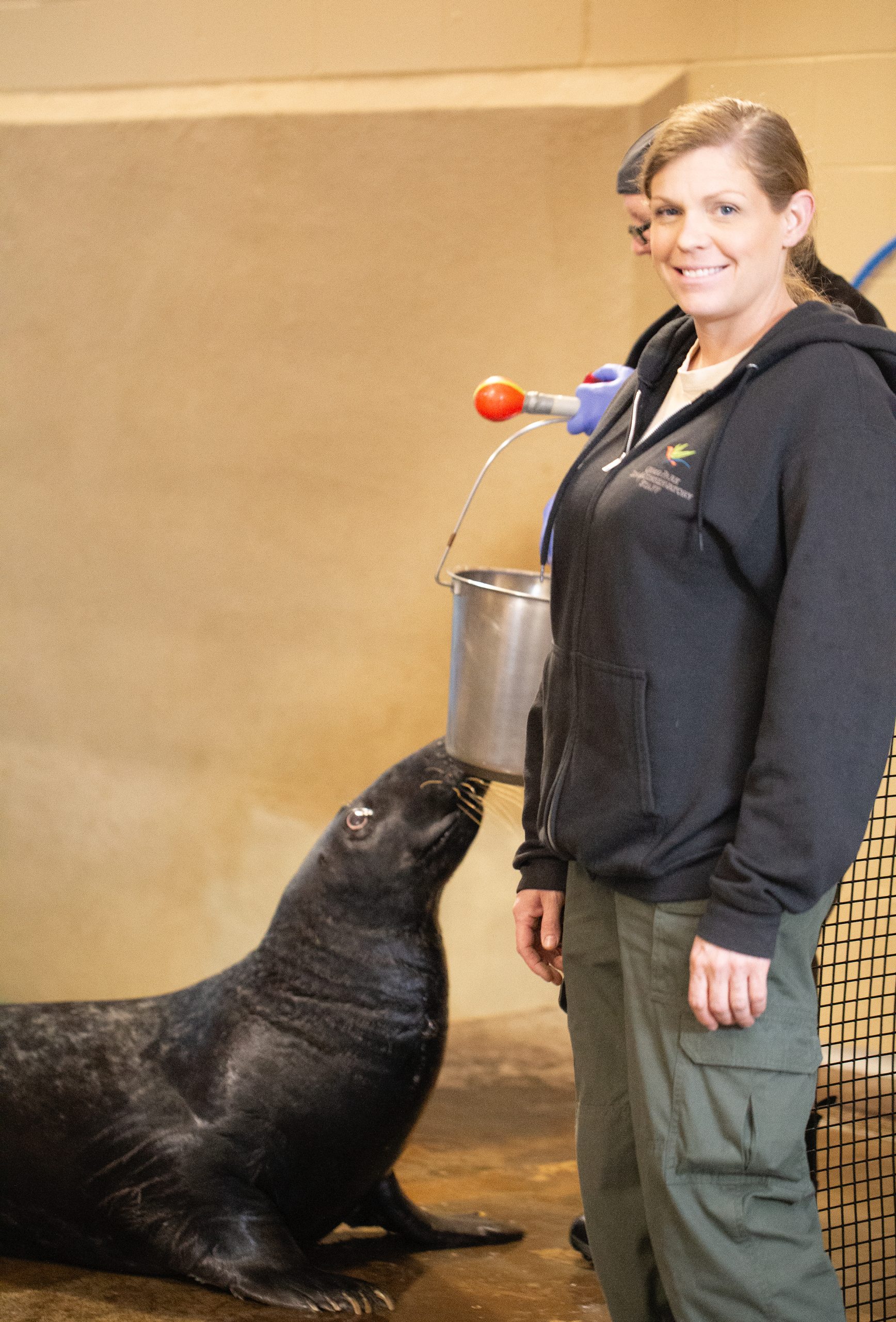
If you’ve been to a Blaze Sparky Show at Como Zoo, you know that sea lions like Sparky are capable of some amazing feats, from diving nearly 60 stories below the ocean’s surface, to holding their breath for up to 20 minutes at a time.
But some of the adaptations that work swimmingly in the sea can make veterinary care very complicated for seals and sea lions, particularly when it comes to anesthesia and other medical interventions. “They’re so trainable and willing to participate in their own health care that you can accomplish quite a lot when they’re awake,” says Como Zoo veterinary technician Andrea Persson. “But it can be much trickier when they’re sick and need to be immobilized, in part because of the dive response that allows them to conserve oxygen and also because we just don’t have to do it very often.”
That’s why Persson recently traveled to Sausalito, California, to attend an intensive veterinary training program at the Marine Mammal Center, the largest marine mammal teaching hospital in the country. Made possible by a grant from Como Friends’ Conservation Champions program, the five-day program allowed Persson to support the Center’s work, rehabilitating stranded seals and sea lions, while learning veterinary tips and tricks from experts who provide daily care to more than 80 elephant seals, harbor seals, and sea lions.
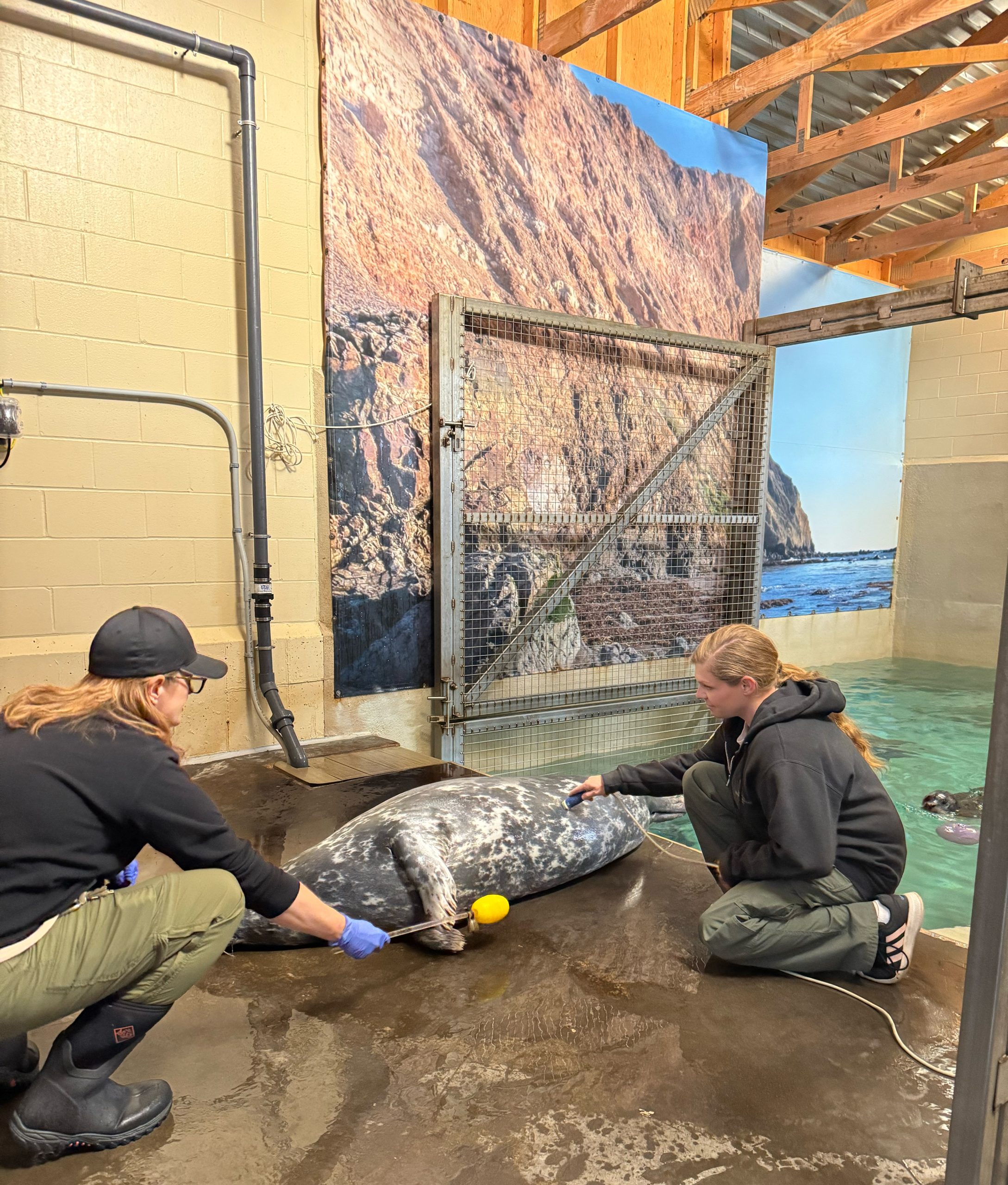
“Part of their mission is to expand the number of veterinary professionals that are equipped to deal with seals and sea lions, and it was a great opportunity for me to get concentrated hands-on experience,” says Persson, who cares for hundreds of different species at Como Zoo as part of her work with Como’s new on-site veterinary team. “One of my main objectives was to get good at collecting blood, because it’s one of the most important diagnostic things we can do with an animal, but it’s probably something I’ve done less than 10 times on a seal in my 20-year career.”
Drawing blood from a seal requires making a puncture near the animal’s spine. “One of my main objectives was to become proficient in blood collection. Blood samples are very important in providing information on the health of the animals we care for and with our relatively small population of seals at the zoo I had limited opportunities to refine my venipuncture techniques. It was great to be able to collect blood on multiple animals each day while I was at the MMC and I am now very confident in my ability to collect blood from our animals at the zoo.”
Since 1975, the Marine Mammal Center has rescued more than 26,000 marine animals along 600 miles of California coastline and in Hawai’i, typically answering more than 10,000 distress calls about sick, injured, or entangled marine mammals every year. During Persson’s stay in April, the Center was providing safe harbor to dozens of orphaned elephant seal pups, which are born at about 75 pounds and weigh nearly 300 pounds just a month later when they’re fully weaned from their mothers. In spite of their impressive size, young seals can often be separated prematurely when strong storms wash them off of beaches before they’ve learned how to survive on their own. Climate change makes the problem worse, as rising sea level and storm surges are more likely to sweep mothers and pups away from each other.
Distressed elephant seal pups are routinely rehabilitated at the Marine Mammal Center, but before they can be returned to the ocean, they need to be taught how to eat an adult diet of fish, squid, krill, and algae. “But you have to do it in such a way that you’re not habituating them to people,” says Persson. “It’s very difficult to get them to eat, because if they get even a little bit of water in their mouth with the fish they don’t know what to do, and they start gagging.”
The time Persson spent with pinniped pups may soon come in handy thanks to a new breeding recommendation for Como Zoo’s Atlantic gray seals, Wally and Medusa. And getting the chance to see wild harbor seals and sea lions on the California coast gave her even more appreciation for the species. “I would say the whole experience was invaluable, and gave me so many ideas to bring back to Como Zoo to improve care for our animals,” says Persson. “I’m very grateful.”
Private contributions from people like you are critical to support conservation efforts at Como Zoo and in the wild. Thank you!
As studbook keeper for polar bears, Allison Jungheim preserves the health and genetics of North America’s most majestic species
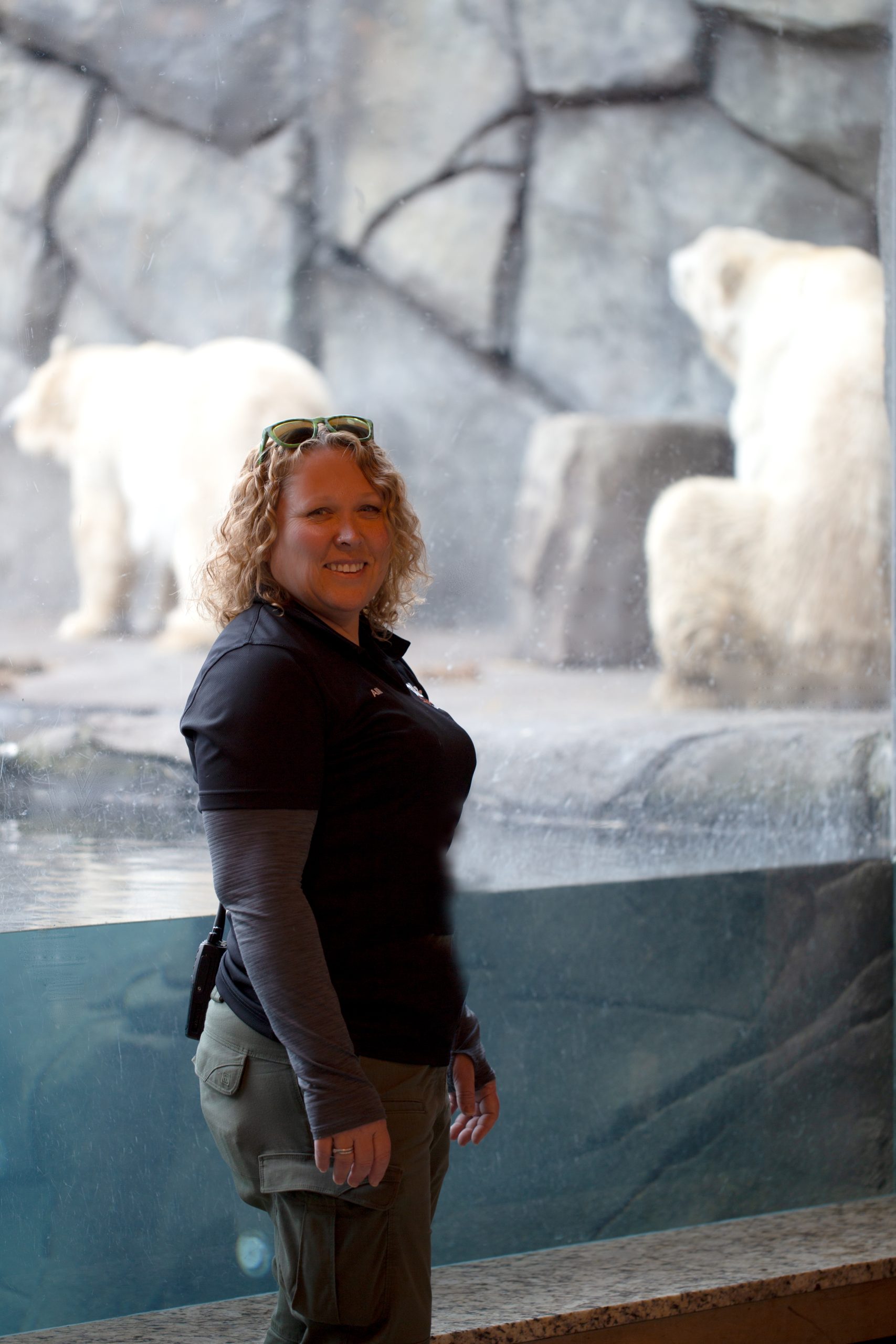
When she shares observations about the polar bears in her care, Senior Keeper Allison Jungheim can sound like she’s talking about her closest friends, bubbling about Nan’s bossy behavior, bragging about Kulu’s impressive weight gain (“At 940 pounds, we should probably stop calling him little Kulu”), and beaming at Neil, the mild-mannered male who first came to Como Zoo with his brother Buzz back in 2001. “He is my bear,” she says.
Jungheim brings the same enthusiasm to her role as studbook keeper for North America’s polar bears, responsible for tracking the genetic health and history of some 60 individuals living in partner zoos across Canada and the U.S. A project of the Bear Taxon Advisory Group through the Association of Zoos and Aquariums, the studbook is one of the ways that zoos work together to ensure that managed populations of polar bears are living their best lives.
Similar to your family’s own electronic medical records that allow for more coordinated health care, “keeping all of that data in one place is super important for the longevity of animals,” Jungheim says. “The studbook also gives me the ability to look back at historic animals and current animals, to see who’s related to whom, and who should breed with whom.”
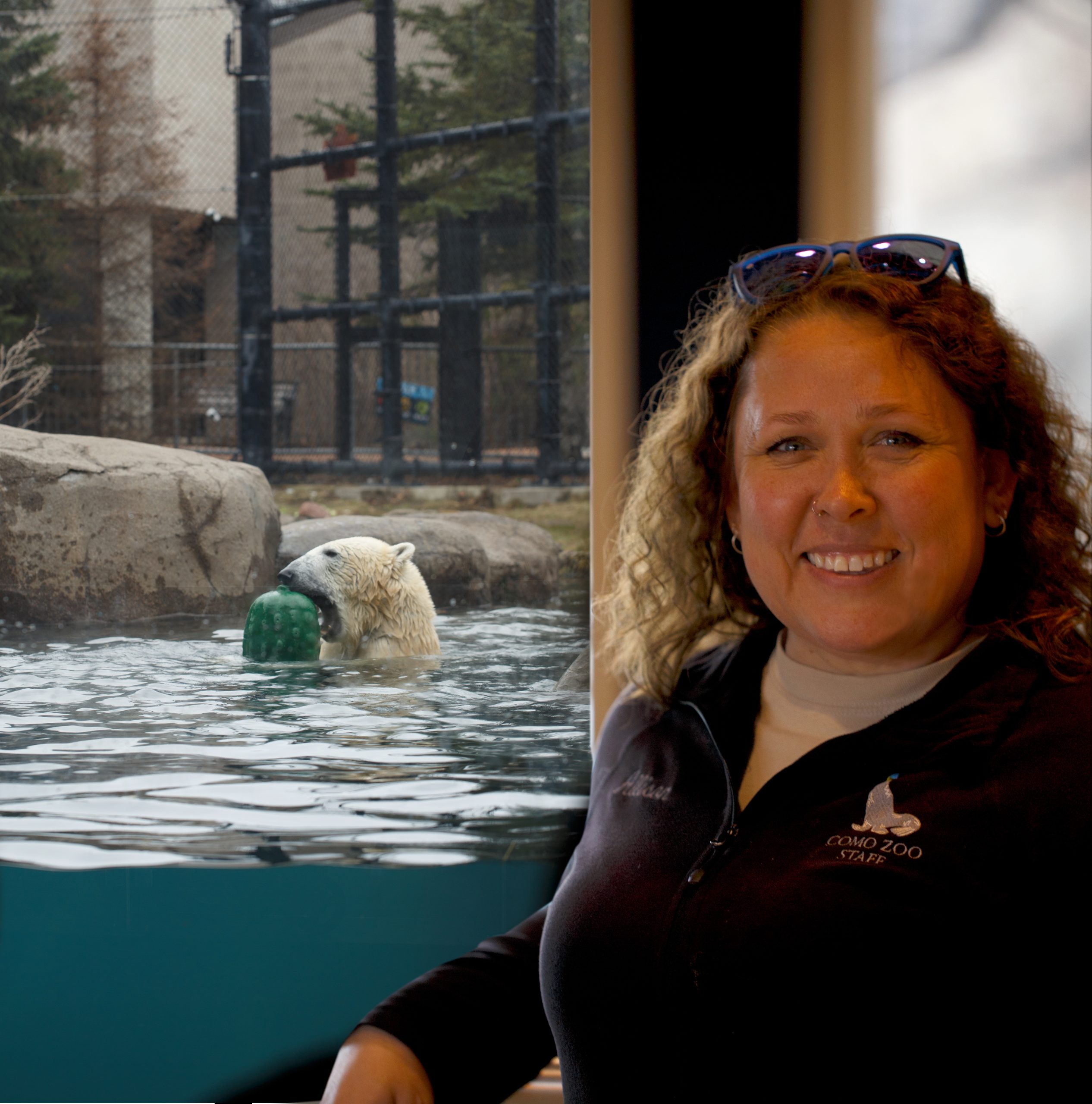
While Como Zoo’s keepers have earned national recognition for their success at reducing polar bear repetitive behaviors and developing tools for improving polar bear blood draws, Jungheim’s longtime leadership in polar bear preservation is a volunteer effort. “I don’t get any extra money or funding for managing the polar bear studbook, but it’s worth it to be part of the bigger picture, helping polar bears around the country, and not just here at Como.”
Polar bears require just the right conditions for successful breeding, both in zoos and in the wild. While polar bears will typically mate in early spring, they’re one of more than 130 animal species with delayed implantation, meaning that fertilized eggs don’t implant in the uterus until months later. The delay allows females to build up the fat reserves they’ll need to support themselves and their cubs during a long denning period. “But if the female doesn’t gain enough weight, or have good enough body condition, she may not implant that embryo or embryos at all,” explains Jungheim. The long dormancy period means that if one breeding pair is unsuccessful, zoos don’t have much time to establish a new pairing.
“That’s one reason why collaboration with other zoos is so important,” she says, noting that the polar bear community of keepers, managers, and veterinary staff have regular virtual meetings throughout the year, sharing breeding and denning news, and exploring new strategies. “One of the things we’re trying is to create more choice for mates by pairing more than just one male and one female,” she says. “Our thought is that by giving mate choice, it gives the male the chance to share the love with other females, and increases competition for breeding, and hopefully, increases success rates.”
With that strategy in mind, Como Zoo is getting ready to welcome a new female bear from a partner zoo, who might make a good breeding partner for Kulu. “With an aging population of bears, we’re trying to shake things up,” Jungheim says. If the pairing works, she may even have a couple of new names to add to the polar bear studbook.
Funding from Como Friends enabled Allison Jungheim to travel to attend an in-person polar bear conference, strengthening the network of connections zoos rely on to help bears live their best lives.
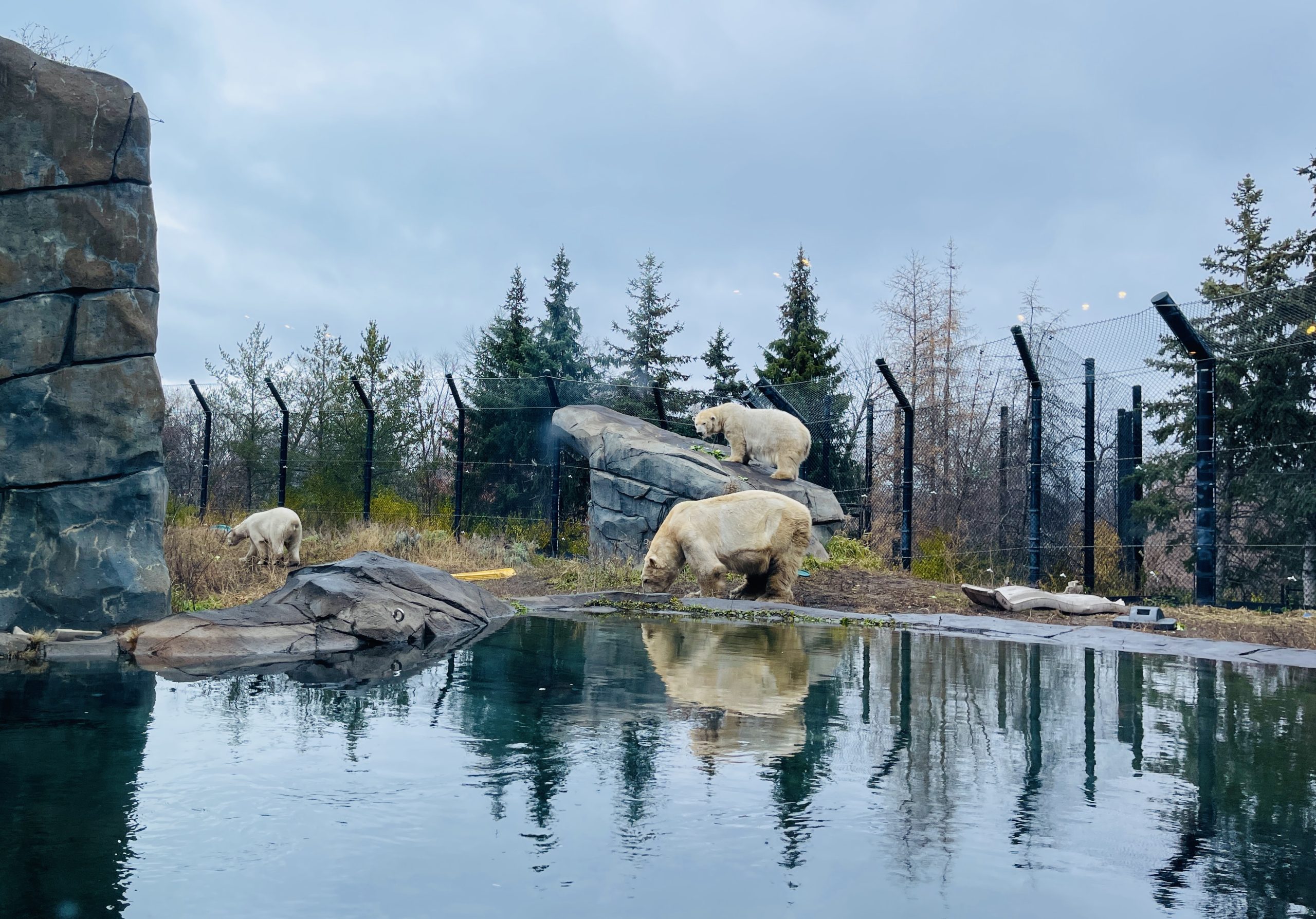
Celebrate Party for the Planet at Como on
April 26 and 27 | Presented by Xcel Energy
There’s no better place to celebrate Earth Day 2025 than Como Park Zoo & Conservatory, where our annual Party for the Planet is a two-day weekend celebration for visitors of all ages. Powered by our friends at Xcel Energy, this year’s Earth Day theme, “Our Power, Our Planet,” celebrates the movement toward renewable energy. With family-friendly activity stations, and splashy public programs like our Blaze Sparky Show, Party for the Planet is a great way to learn more about what you can do to protect our environment on Earth Day and every day.
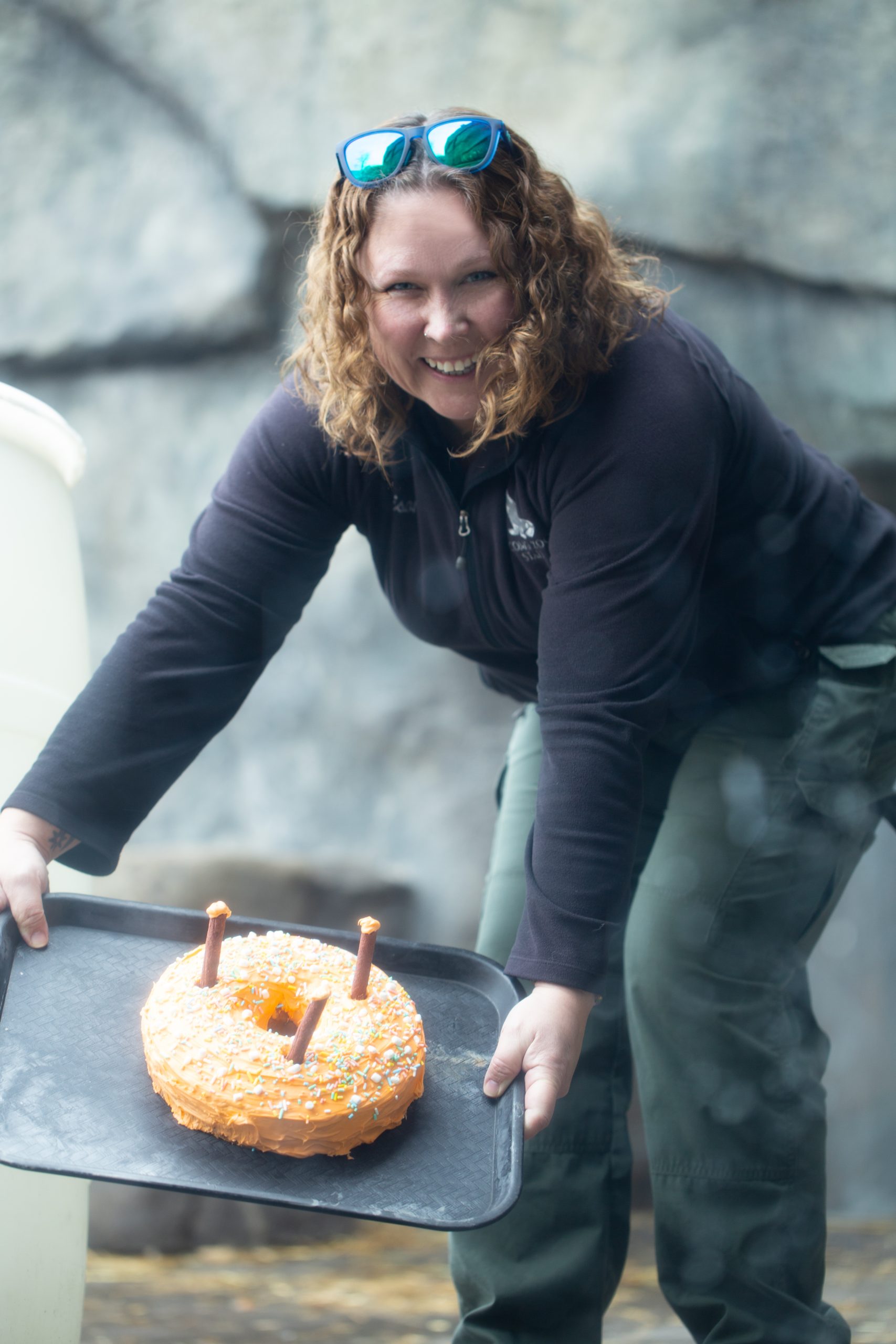

Two Como educators traveled to the Galapagos Islands to bring home new lessons for Como’s conservation curriculum
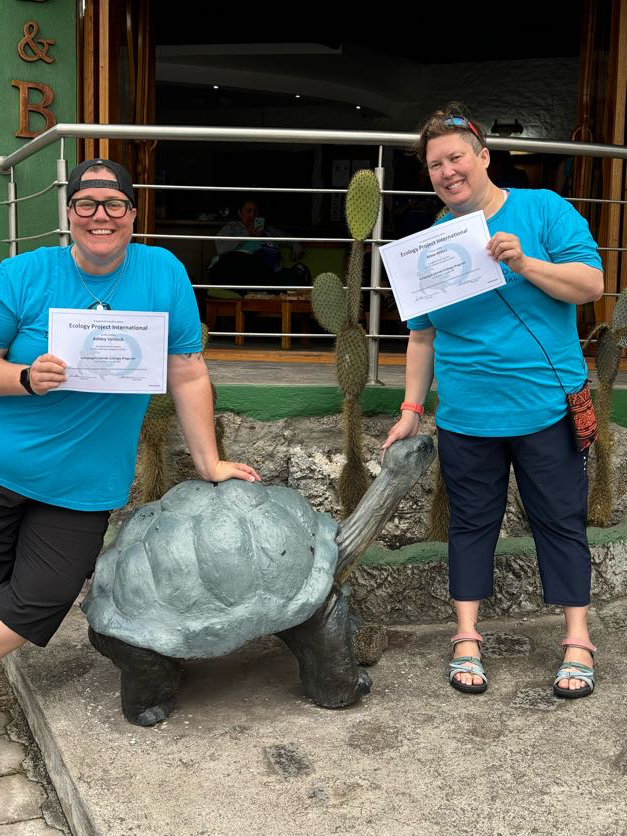
Since 2017, Como Friends’ Conservation Champions program has helped dozens of Como staff members pursue professional passion projects, from tracking snow leopards in Kyrgyzstan, to finding cool ways to cut down on single-use plastics on Como’s campus, to rehabilitating injured penguins on the coast of South Africa.
While the Conservation Champions program is open to applications from everyone on Como’s campus, it wasn’t until Anne Ahiers and Ashley Verdeck got a nudge from the Education & Conservation Curator, Bekah Hanes, that the pair of education specialists decided it was time to make a pitch of their own. Their plan? To join a special program dedicated to educators and ecology in the Galapagos Islands, and to take over Como’s social media accounts with real-time posts about what they were learning on the way.
Their adventure started last July, when the pair joined Ecology Project International and met with their group in Quito, Ecuador. Their cohort of fellow educators came from as far away as Australia and Kazakhstan, and quickly bonded over their common love of tortoises, which they encountered on their first day, roaming through the highlands. “Just to see tortoises out in the greenery, in their natural ecosystem was amazing to us,” says Verdeck. “We were all acting like little kids, we were so excited.”
The group got the chance to collect biometric data on the 13 different tortoise species that occupy the Galapagos Islands, including one nearly 100-year-old animal that had never been studied before. As the group toured the volcanic archipelago, they could also see how each species has adapted to its own microhabitat.
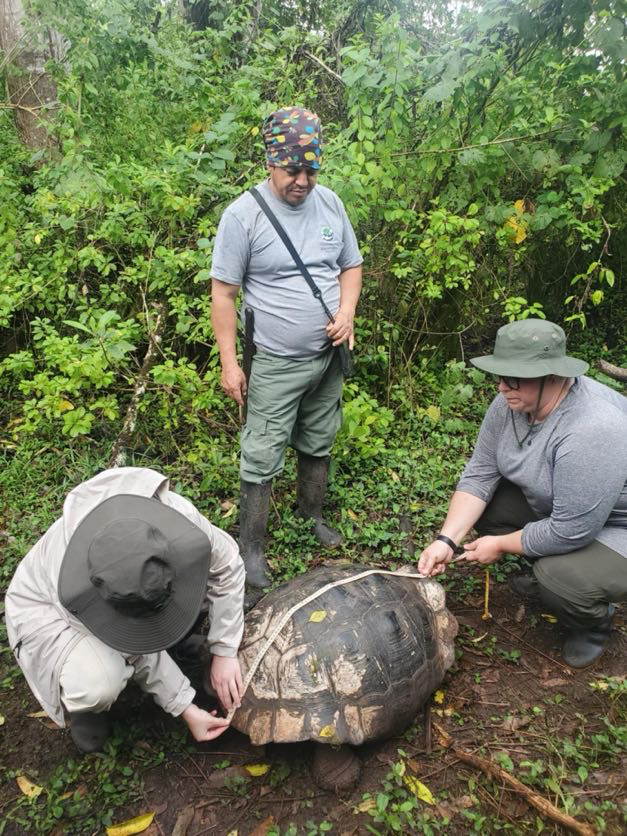
“You’ll have tortoises that look very different from one island to another island,” Ahiers explains. “Tortoises that live where it’s very green and rainy look a lot like Como Zoo’s Irwin, who eats plants and grasses on the ground. But tortoises that live in scrubland have a different shape and size, including an aperture that’s a lot wider, so they can reach their heads up and eat cacti.”
Verdeck and Ahiers got a chance to visit a tortoise breeding center, where they visited the memorial for Lonesome George, the last ever Pinta Island tortoise in the world, who has become a conservation icon for the Galapagos. The team also took part in highland restoration, helping with a conservation project working to manage invasive African snails, and studying their effect on the ecosystem.
Another day, they hiked to the famed Tortuga Bay, performing a survey on the prevalence of microplastics. “We were walking on a pristine beach, with no trash anywhere, but when you start sifting through it, you find these microplastics that are the size of a needle tip,” says Verdeck. “You start to realize how hard it is to get away from this problem.”
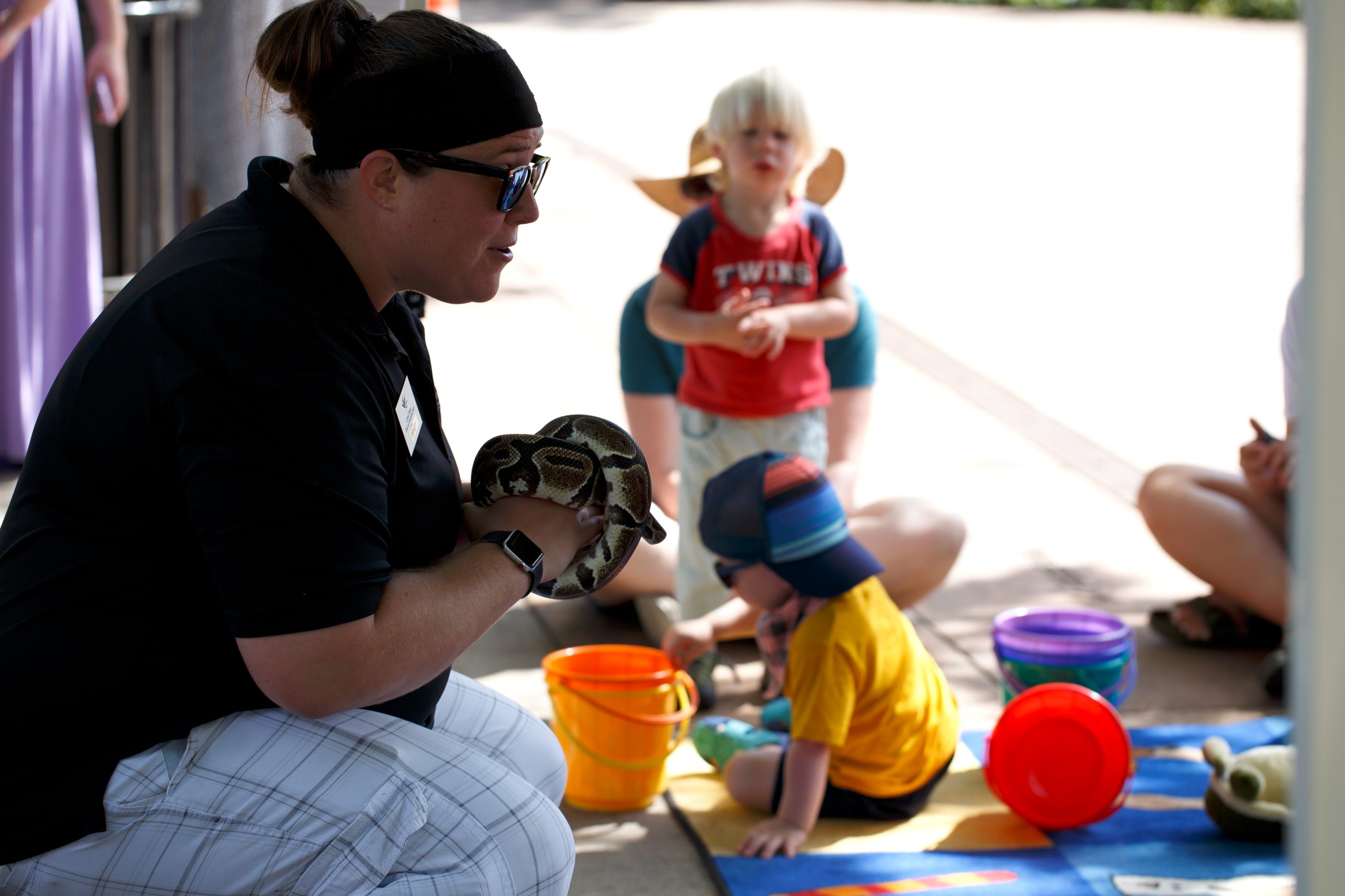
While moments like this were eye-opening for Ahiers and Verdeck, the pair say it was also inspiring, helping them to create a new Little Explorers curriculum that mimics some of the activities and lessons they learned during their trip. “You want to start kids young, and get them caring about conservation early in life—the earlier the better,” says Verdeck. “If you can teach them not to throw wrappers on the ground, and to put them in the garbage right away, that’s a good place to start.”
As the team posted updates about their travels, they also made strong connections with other educators in their group that have continued even since they returned to Como. “We were the only non-formal educators on the team, and sometimes it can be hard to translate why zoos are here, and what our role is,” says Ahiers. “But we have an important contribution to make, because we’re here to teach people about conservation, about what we can do to keep species safe and thriving, and to protect ecosystems. Conservation Champions really helped us to make those connections.”

Como Brings Conservation to Life
From the first breaths taken by Como Zoo’s new tiger cubs, to the Conservation Champions trip to the Gálapagos for educators Anne and Ashley, Como Park Zoo and Conservatory is on a mission to bring the value of conservation to life in every season.
On Give to the Max Day, your generosity helps bring conservation to the forefront every day at Minnesota’s most visited cultural destination. From crucial breeding programs to preserve our planet’s most endangered animals, to sustainable habitats that tell deeper stories about the Earth’s diversity, your support helps Como Park Zoo and Conservatory welcome the next generation to discover the wonders of nature through unforgettable face-to-face encounters, fantastic education programs, and always-free admission.
And thanks to a matching gift from the Como Friends Board of Directors and a generous donor, your gift will be doubled, dollar for dollar, up to $50,000. Thank you! Give to the Max Day
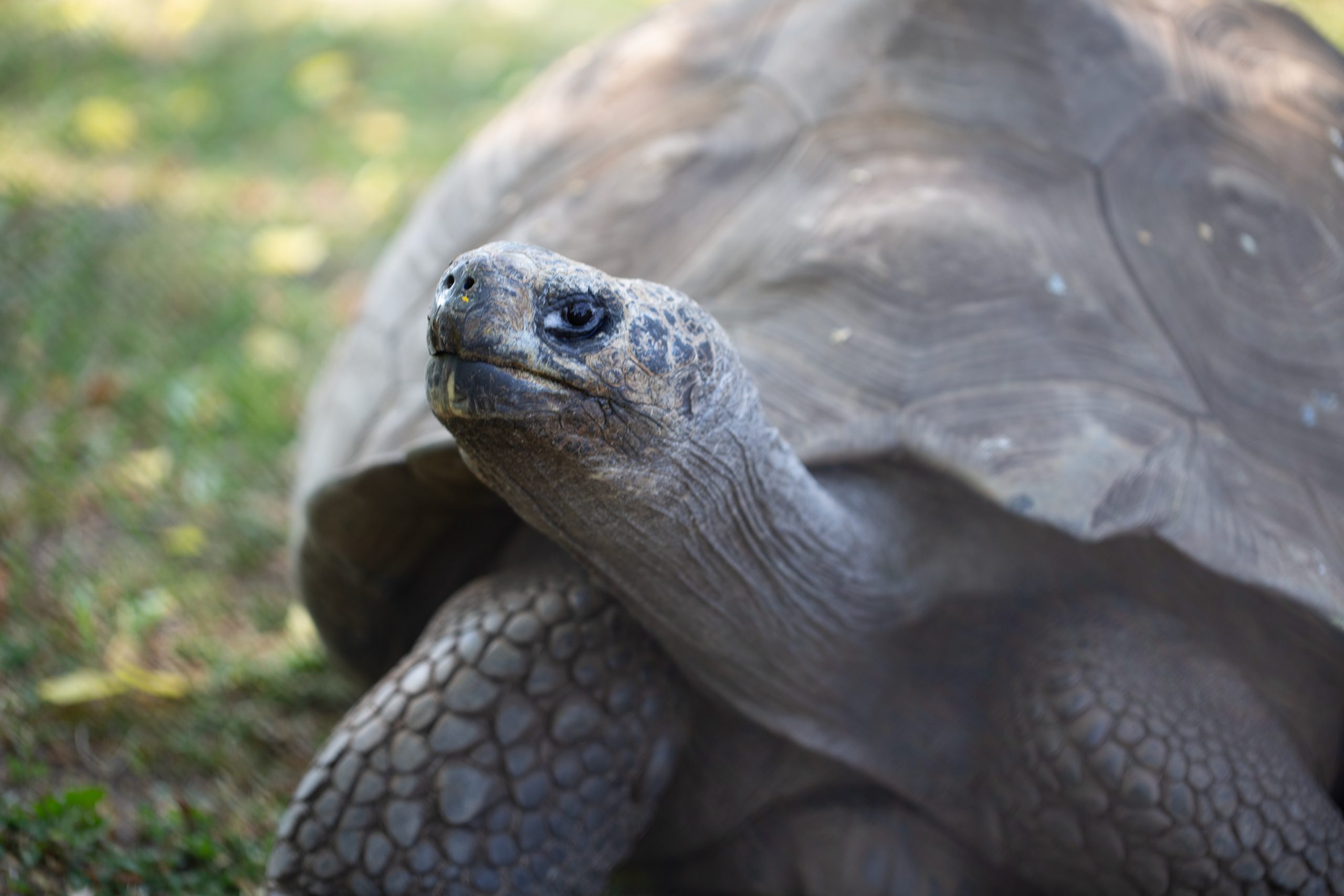

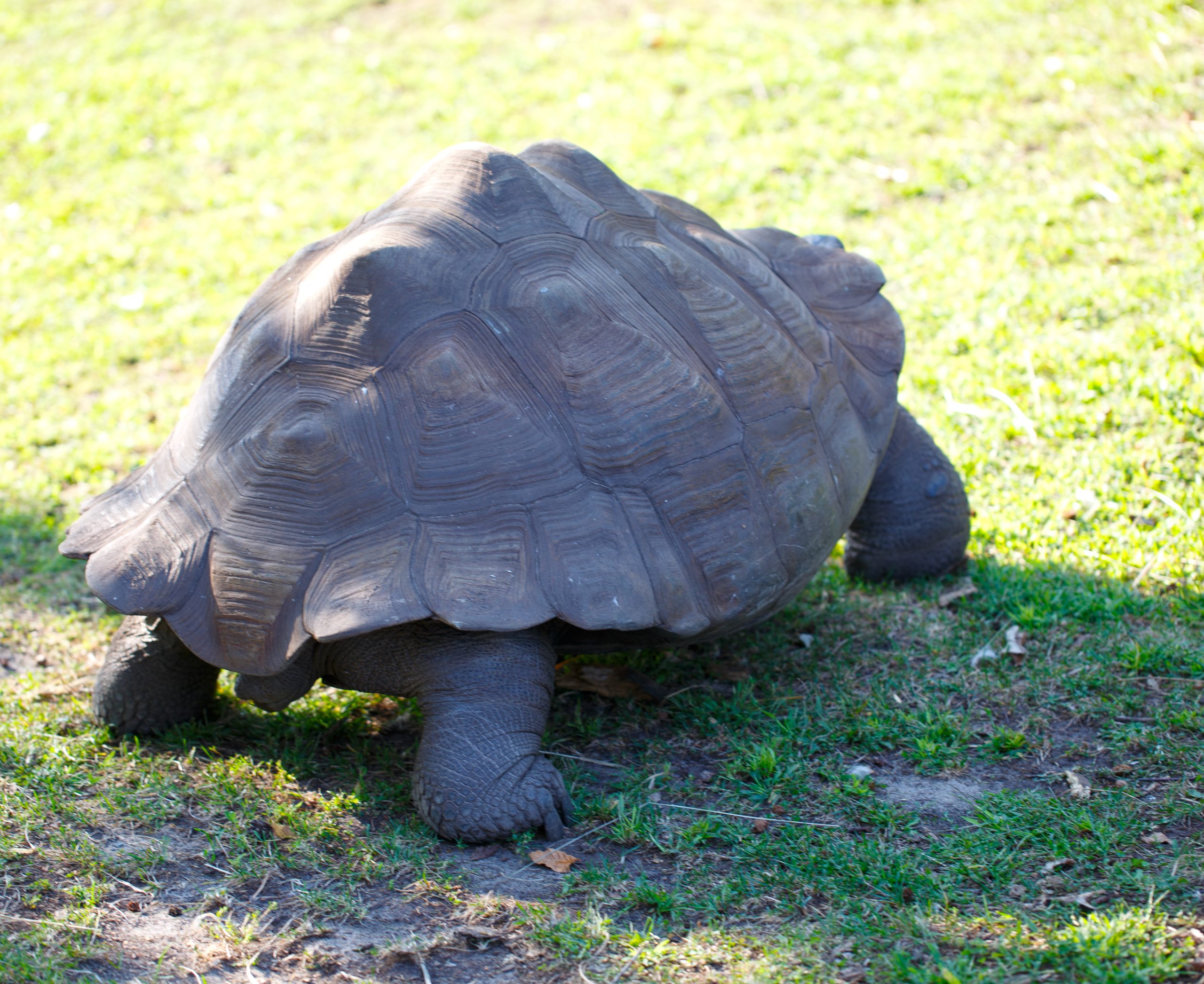
Each year Nature Walk volunteers engage with an estimated 250,000 visitors, most of them younger children, role modeling the idea that caring about conservation is cool
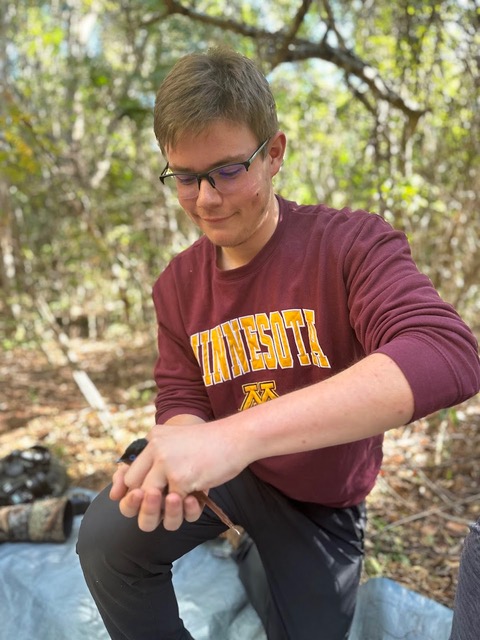
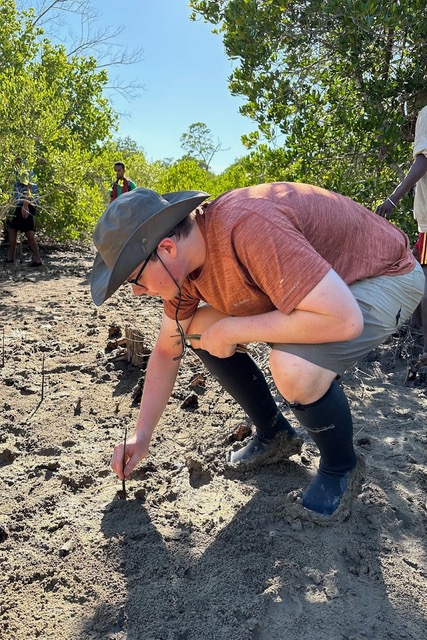
Wally Hlavac, a conservation biology major at the University of Minnesota, spent his summer traipsing across Madagascar, doing field surveys of the island’s birds, butterflies, and lemurs. He credits his time as a Como Nature Walk volunteer with helping him take the first step.
Hlavac was a summer camper at Como several years ago when he encountered his first Nature Walk volunteer, one of 50-some teens recruited each spring and summer to help bring Como’s animal and plant collections a little closer to Como’s nearly two million annual visitors. “I think he came in to show us a rabbit, and I decided that was something I really wanted to do, too,” says Hlavac, who applied and was accepted into the selective program when he was in ninth grade.
Through Nature Walk, teens are provided training on a variety of Como’s conservation themes, from the rainforest and reptiles, to beneficial bugs and plants, that they go on to share with Como visitors at interpretive stations arrayed around Como’s grounds. “It was the first time in my life that I got to teach people about conservation and concepts that I’m really passionate about,” Hlavac says.
The program, which includes professional development training, also pushed him to develop greater confidence and public speaking skills. “I was a really awkward kid, but being able to go to Como and talk to people, and answer their questions was really great for me,” he says. “It motivated me to try hard, and get Como visitors engaged, because those encounters felt really good.” Each year, in fact, Nature Walk volunteers engage with an estimated 250,000 visitors, most of them younger children, role modeling the idea that caring about conservation is cool.
After a pause during the pandemic, Como’s Nature Walk program was back at full power this summer, with a full complement of teen volunteers on campus sharing their insights on the smallest insects and the tallest giraffes. While not every teen will go on to pursue careers in conservation, Hlavac says there’s no doubt the experience helped him recognize that protecting the natural world could be his calling.
“I think the overall curriculum of Nature Walk really does inspire a love for natural science in any capacity, and learning more about animals and plants and being able to share that with people was really exciting,” he says. “I know it really cemented conservation in my mind as something I want to continue doing.”
This year, your support for Como Friends made it possible to invest in Como’s Nature Walk program with the hiring of Maddie Becker to fill a new assistant role.“Working with Nature Walk has been a fantastic experience. The kids have worked hard this summer, and it’s been so uplifting to help foster an environment where they’ve not only been so welcoming and enthusiastic with the guests that visit their carts, but also in their relationships with each other. Each day they express so much joy for life and the natural world that I am left with nothing but immense hope for our future.”
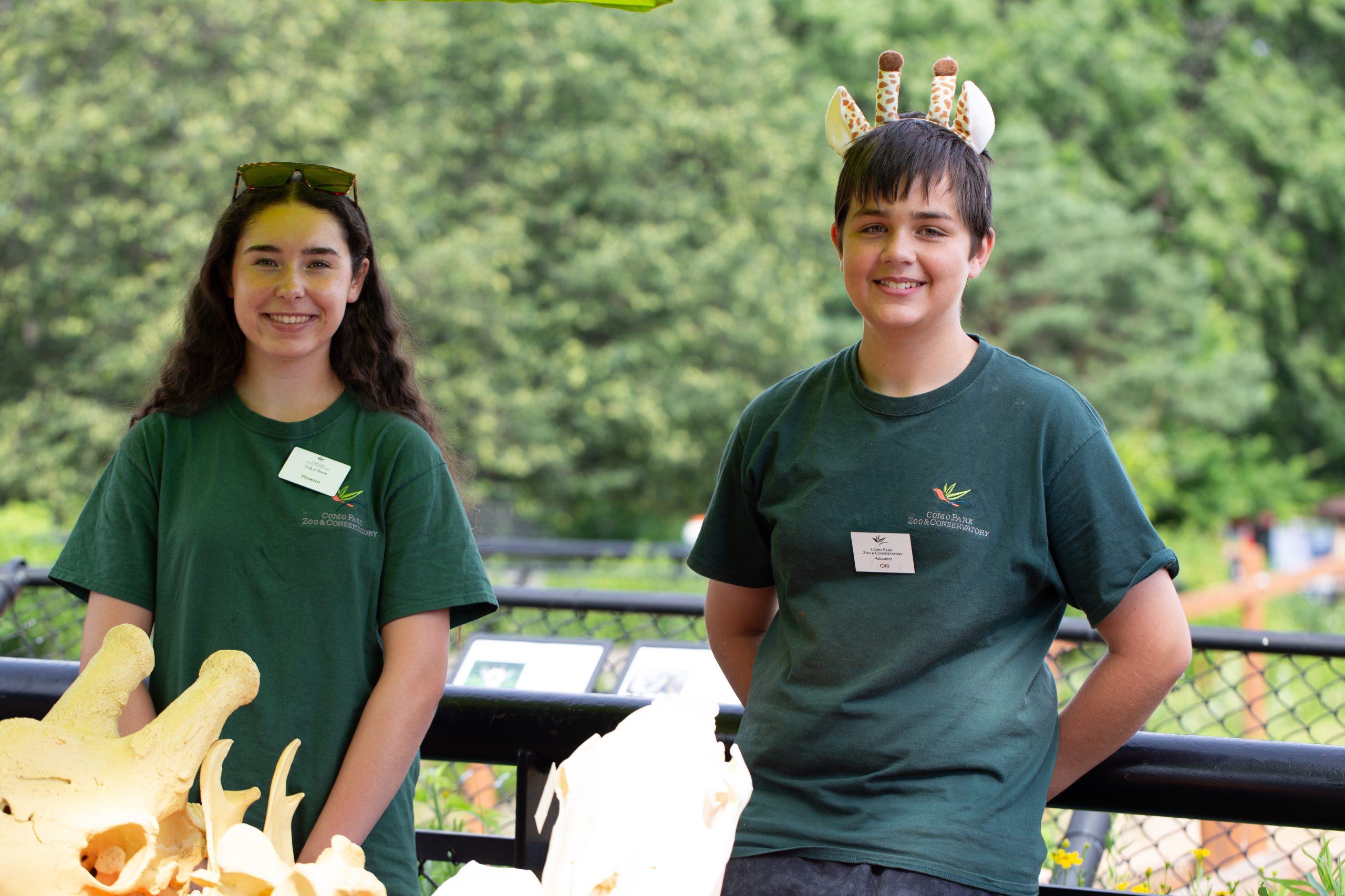

As a Conservation Champion, Como Zoo primate keeper Em Brunmeier traveled to Peru to learn more about spider monkeys in the wild
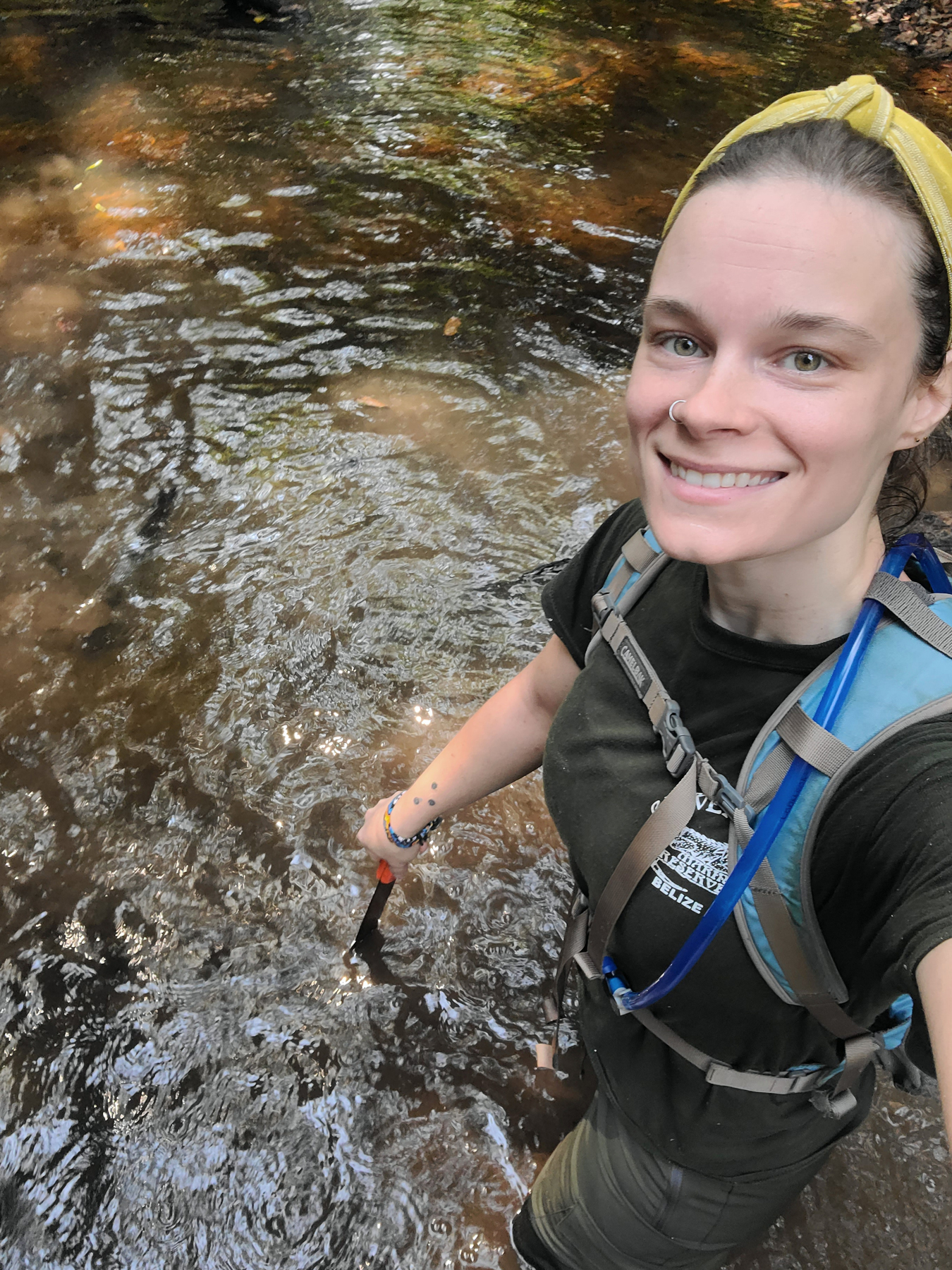
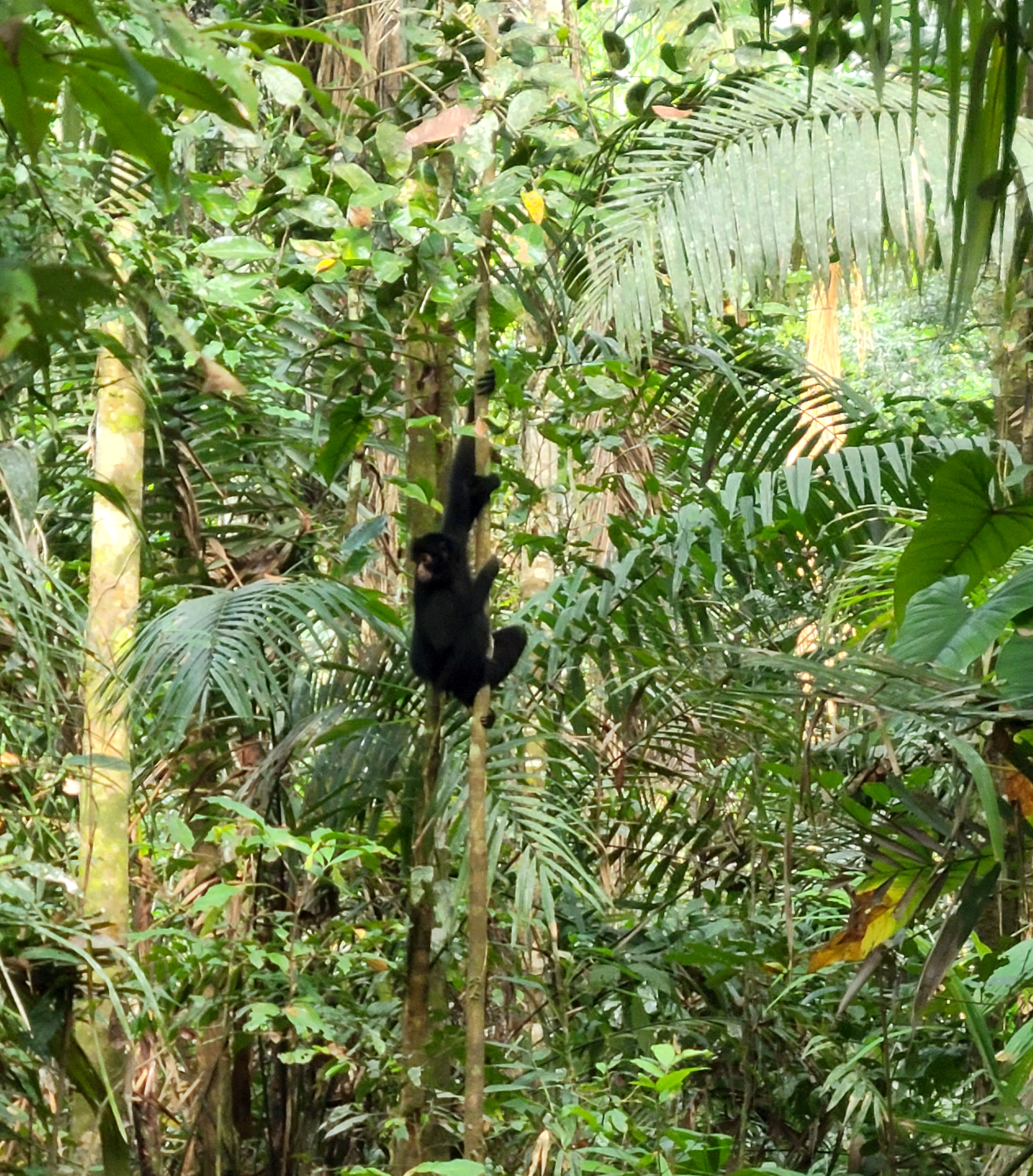
Behind the scenes in Como Zoo’s Primate Building, Brunmeier has become a big fan of the four spider monkeys in her care—Gomez, Katie, Ellie, and Jazz—and she applied to learn more about their cousins in the wild through Conservation Champions, the Como Friends micro-grant program that encourages Como’s keepers and horticulturists to take part in conservation efforts in the field. After researching conservation projects around South America, she decided that the Kawsay Biological Station in Puerto Maldonado, Madre de Dios, Peru was the place to be.
“What was really special about this location was that the team there had been able to bring back and restore a spider monkey population that had been locally extinct, and that was something that I was really excited to be part of, and to see how they were managing that,” she says. “They also work with other scientists in the area, like botanists and PhD students from abroad to research other parts of the ecosystem and how they all correlate with spider monkeys. I really wanted the chance to learn more about how all of these factors come together.”
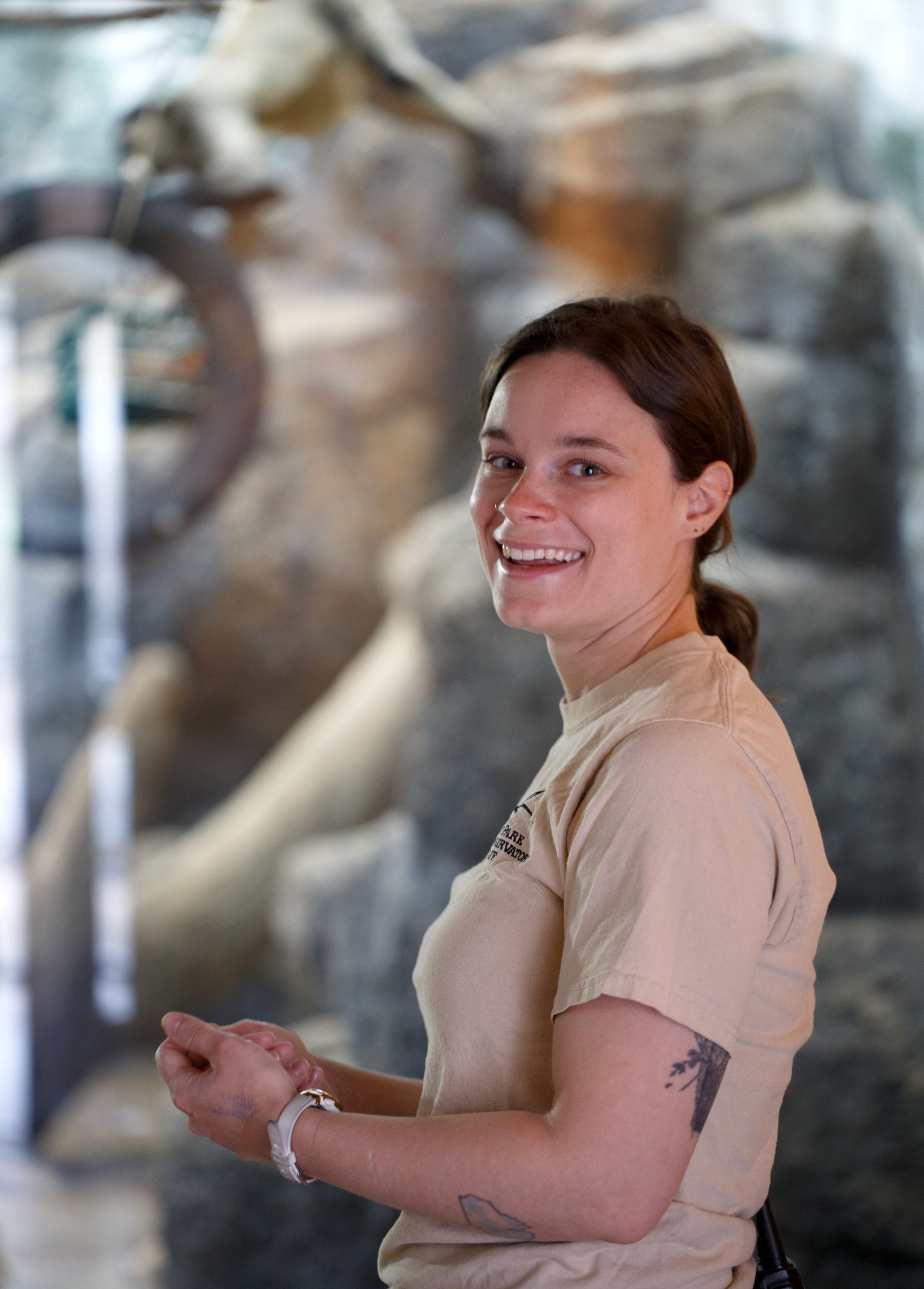
As part of the project, Brunmeier joined a team of researchers tracking spider monkeys that had been previously released into the Tambopata National Reserve to study the seasonal variation of their behavior. “With no GPS collars or other tracking devices, it was quite a task,” she says. “We had no guarantee we would find them and had to go pretty far into the Amazon rainforest.” But once the spider monkeys were located, Brunmeier got the chance to hear the full chorus of their vocalizations. “For spider monkeys in the wild, their home range is nearly 700 acres, and they often split up their group and then reunite at night to sleep together,” she says. “To do all of that requires quite a lot of logistics, so they’ve come up with quite a lot of vocalizations. They have little chirping sounds that they make when they’re close to each other, and really loud, bellowing calls that they use to try and find each other over long distances. It was so fun listening to them—they have lots of things to say.”
During her two and a half weeks in the field, Brunmeier also got the chance to care for young spider monkeys in a rehabilitation facility. “That’s where my personal expertise came in handy, because hands-on care of the animals is what I do every day,” she says. “I was also able to talk with the team about how we do primate enrichment at AZA [Association of Zoos and Aquariums] institutions in the U.S., which is something I’m passionate about.”
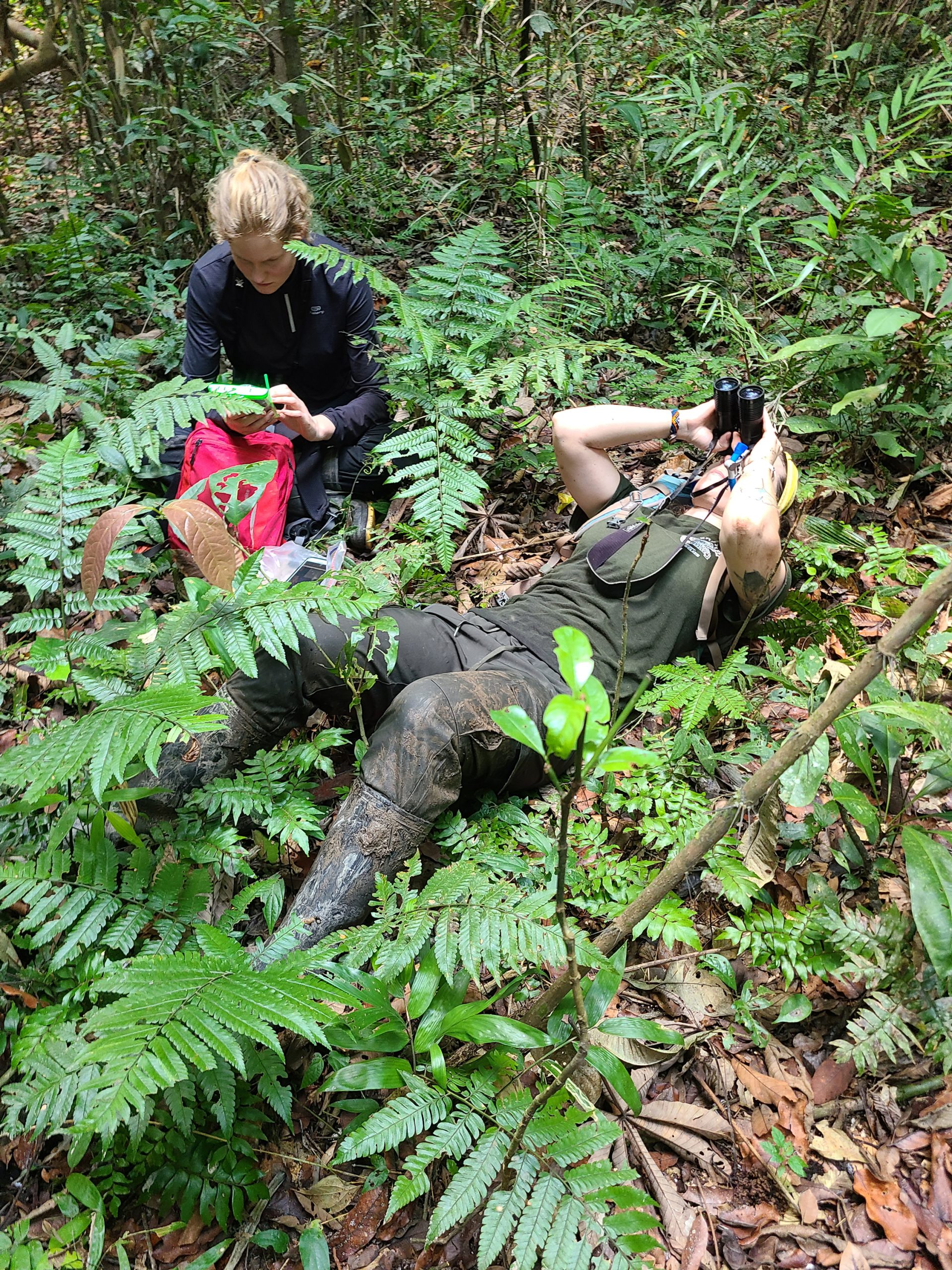
Now back at Como Zoo, Brunmeier says her trip to Peru has brought new insights to her work with spider monkeys, and new ideas for ongoing animal enrichment to the conservation work at Kawsay Biological Station. “What’s cool about the Conservation Champions trips is that it’s a two-way street,” she says. “We get the chance to learn about the animals we care about in the wild, and because we know our animals at Como Zoo so well, we also have important things to share with our conservation partners.”
Our Conservation Champions Program would not be possible without your support. Thank you!
Caring for polar bears every day can be exhausting. Just ask Como Zoo’s Julie Yarrington, one of a team of aquatics keepers who keep an eagle eye on Como’s three polar bears, Nan, Kulu, and Neil.
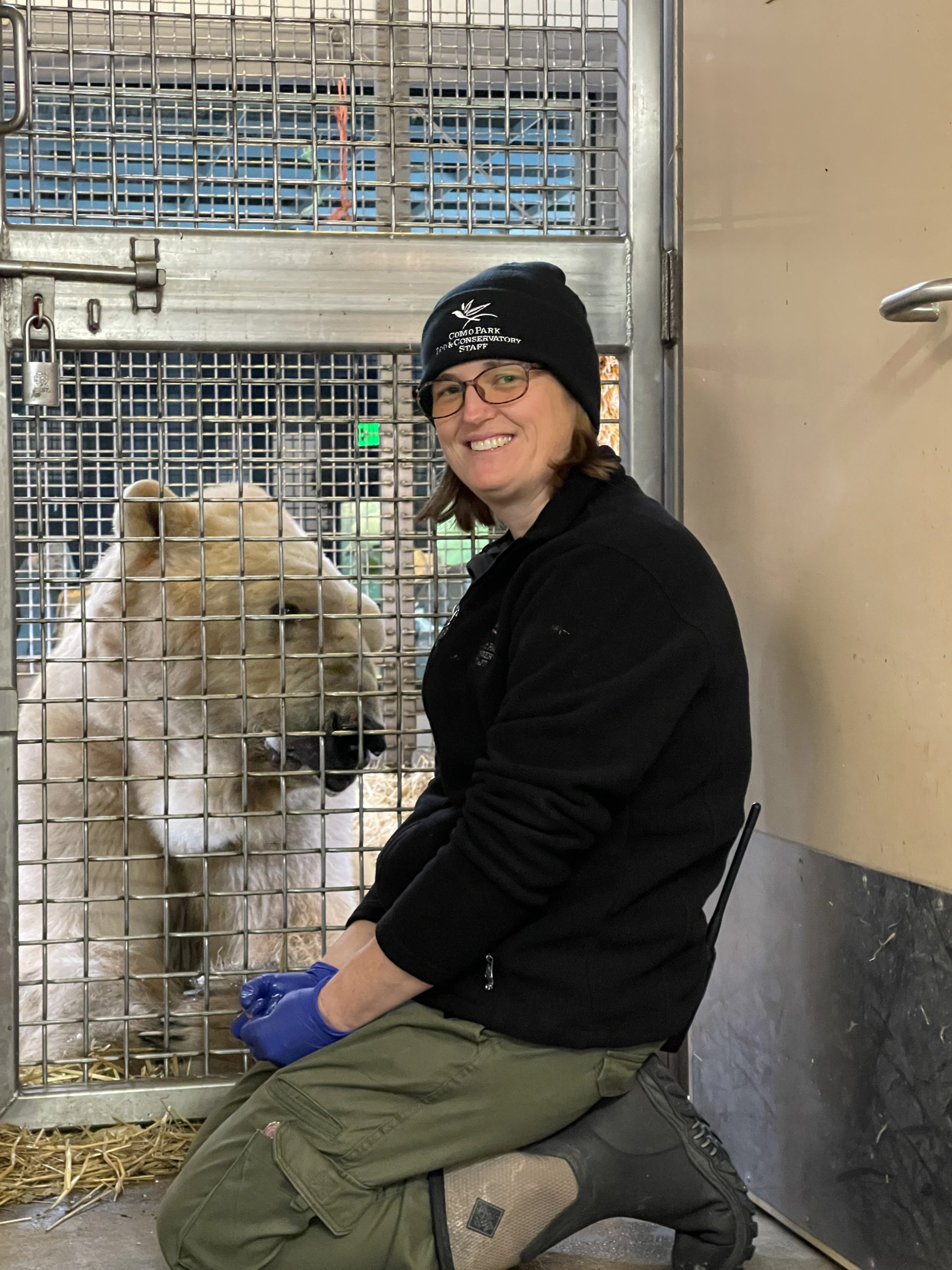
Earlier this year, Neil was diagnosed with gastric dilatation-volvulus, or bloat, an urgent medical condition that required emergency surgery. Surgery is a risk for any animal, but especially for one as old as Neil, now nearing 28 years of age, and one of the oldest male polar bears in North America.
“Because of his age, there was a high risk that he wouldn’t rebound,” says Yarrington, who spent more than a month “just hoping we could get him to eat, eat, eat. It was very mentally exhausting.”

Fortunately, after a few weeks, Neil pulled through and has been very particular about his diet, showing a strong preference for his favorite comfort food of canned salmon and canned tuna. As Neil has regained strength and been reintroduced to his companions, keepers have changed the polar bears’ feeding schedule to cut Neil’s risk of further complications. “Instead of getting a big breakfast in the morning, we now feed him three to four times a day,” Yarrington says.
To allow his incision to heal, Neil had to stay out of the water and away from his favorite companion, Nan, a feisty 28-year-old female. Brought to Como Zoo three years ago in order to be a non-breeding partner to Neil following the death of Buzz, his twin brother, the pairing between the two elder bears has worked out beautifully.
“Neil just wants to be wherever Nan is,” says Yarrington. “It was hard for him at first, but once it healed up he was able to get to the pool and was able to clean himself up. Guests may not really notice his incision site, which is already covered up by fur.”
Your Give to the Max Day contributions to Como Friends help to provide cutting-edge veterinary care to animals like Neil, ensuring both great veterinary care and the creature comforts that keep animals healthy and curious. “While he’s been recovering, he’s also been into his other favorite foods, Cool Whip and sherbet—in moderation,” Yarrington says. “When you live to be the oldest male polar bear in North America, you definitely deserve a couple of spoonfuls of sherbet.”
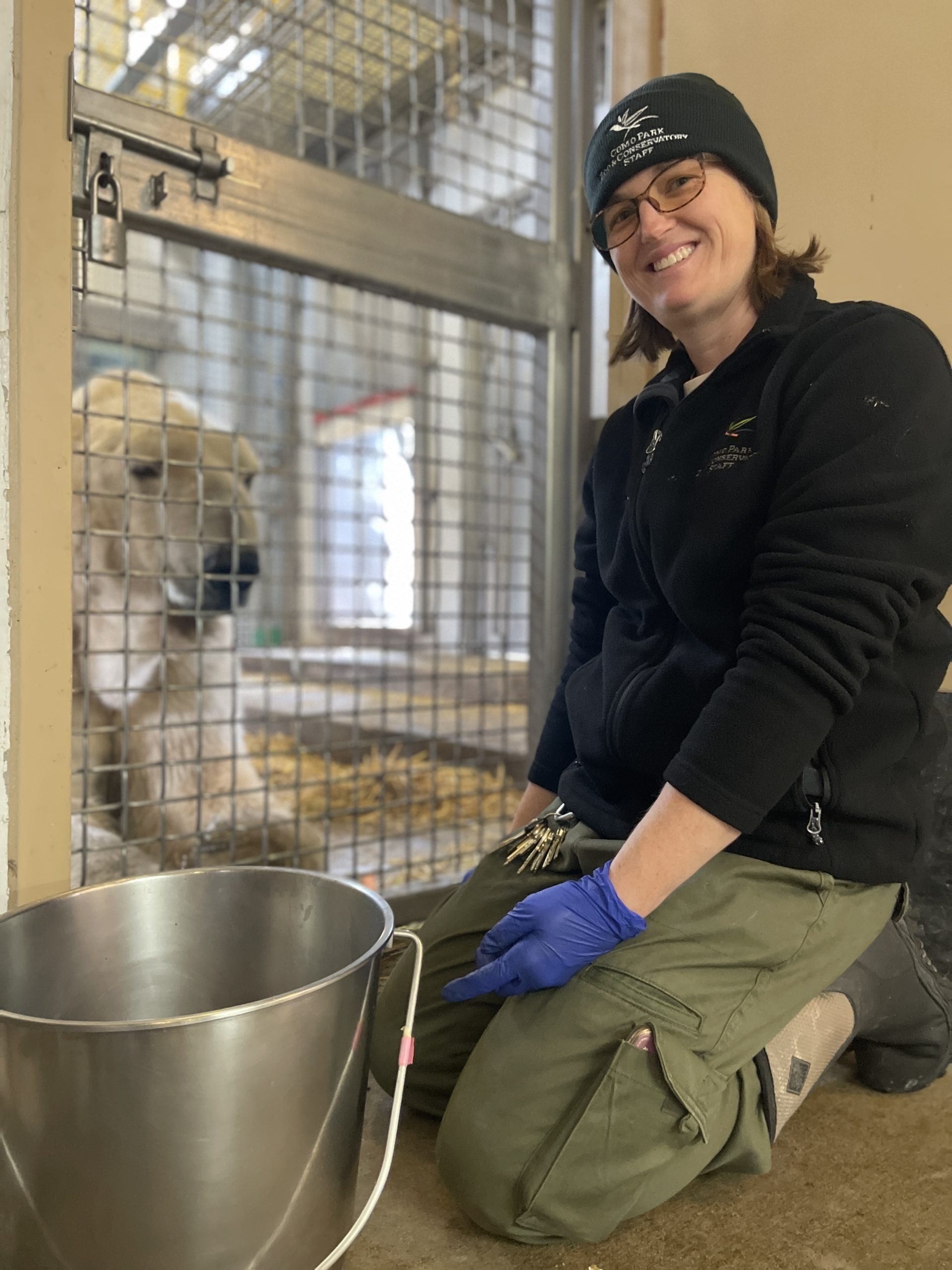
Make your Give to the Max Day gift here. Thank you!
A trip to the Polar Bear Capital of the World helped teach Como Zoo keeper Kristin Riske new ways to talk about climate change

Back in 2008 when the polar bear became the first animal listed under the Endangered Species Act to be threatened primarily by climate change, we all learned how individual choices here at home can help improve conditions in the Arctic. From turning off unneeded lights, to driving less, to choosing products with less packaging, many zoo visitors at Arctic Ambassador Centers like Como Zoo are now well-versed in all the individual choices that can contribute to a more sustainable future.
But could there be a better way to talk about what’s happening to polar bears?
That’s the question Como Zoo aquatics keeper Kristin Riske has been exploring as a Conservation Champion, the Como Friends program that funds professional development experiences and on-site field work for several zookeepers and horticulturists each year. With support from the program, Riske joined a cohort of other keepers and educators in the Climate Alliance Program, a unique Polar Bears International partnership program aimed at empowering conservation professionals—many, like Riske, who care for polar bears every day—to effectively communicate about climate change and inspire real-world solutions.
“Como has been part of the Arctic Ambassador Network for years, and this program is designed especially for institutions like ours,” Riske says. “As zookeepers, we’re in a great position to get the message out to the public.”

The program started early in 2023, as Riske and other zookeepers and educators took part in an eight-month online learning course, created in partnership with National Network for Ocean and Climate Change Interpretation. Through the training, Riske learned about the latest best practice communication strategies around climate change, and how building awareness and support for climate solutions has evolved over time.
“Having this training through Climate Alliance really changed my view on how to get the message across,” says Riske, who got her start as a Como Zoo intern back in 2014. “Back when I started, it was all about how we should turn off our lights and recycle, but through this program, I’ve learned it’s more about the collective action that we need to take—voting for the climate, creating community gardens, shifting to renewable energy, advocating for community-wide or city-based sustainability programs.”
Last month, the Climate Alliance Program culminated in a week-long trip to Churchill, Manitoba, the polar bear capital of the world. “It was really early in the season, still in the 40s and 50s, so we only saw one bear—a female sleeping near the coast,” Riske says. “But being out in the Tundra Buggy exceeded my expectations in every way. We got to see ptarmigan and caribou, and got the chance to meet and talk with the indigenous people of Churchill who told us more about the land around us.”
Now back at Como Zoo where she cares for polar bears Neil, Nan, and Kulu, Riske says her Conservation Champions experience continues to inspire her. “There really are no words to encapsulate what I experienced,” she says. “I went into this Climate Alliance program to learn more about polar bears, climate change, and what we can do to help. What I didn’t know was the bond I would form with all of these amazing people from different facilities that want to do the same thing. I am still processing my experience up in Churchill, but one thing I do know is I have become more empowered, and a spark has grown in me that wants to advocate for climate change. I can’t thank Polar Bears International, Frontiers North Adventures, Como Park Zoo and Conservatory, and Como Friends enough for this once-in-a-lifetime experience.”
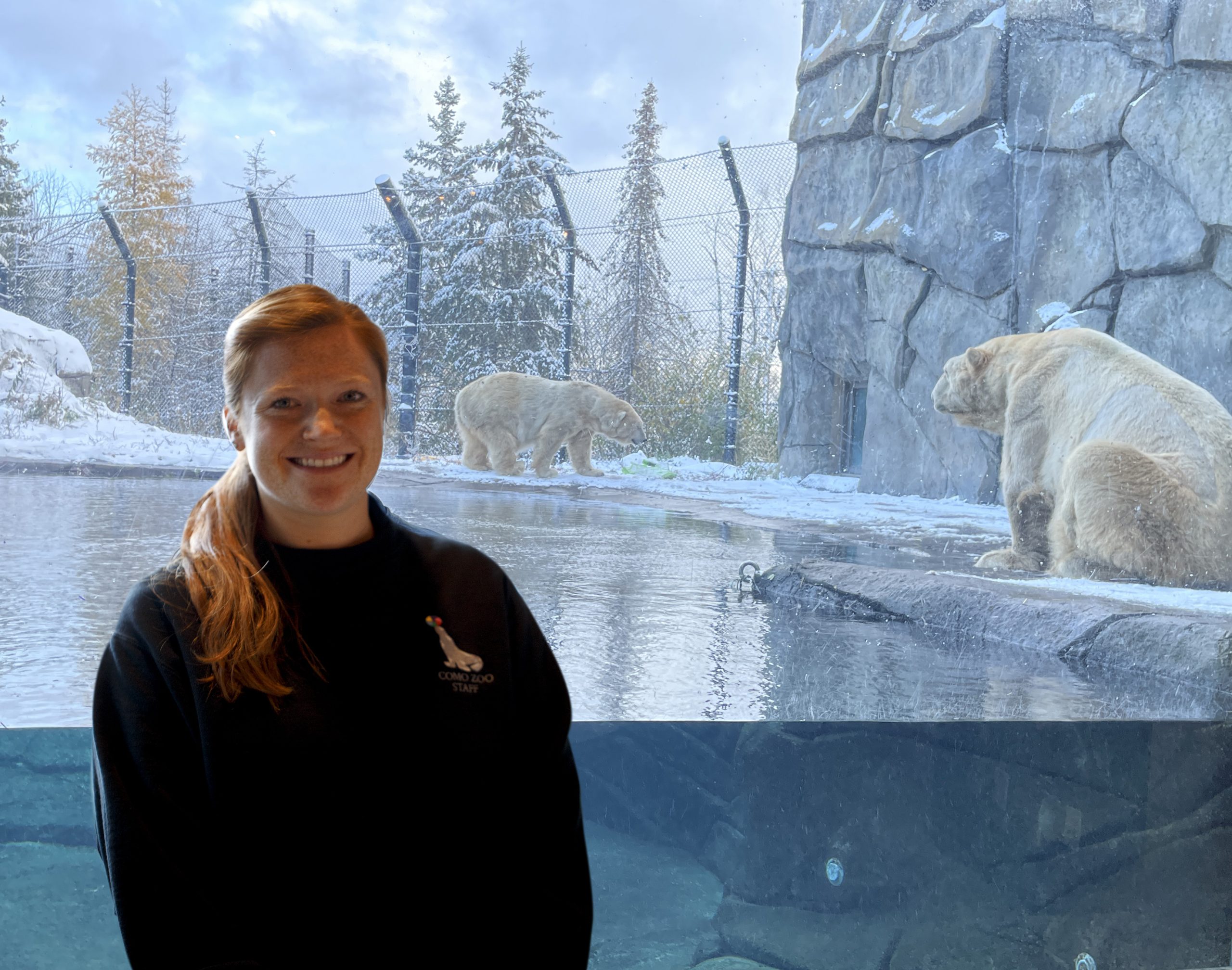
Your support for Como Friends helps to make the Conservation Champions program possible, supporting Como’s talented staff’s participation in conservation partnerships and in their continued professional development. Thank you!
With chrysanthemums playing the starring role in this season’s Fall Flower Show, it’s a guarantee that thrips will also be part of the cast.
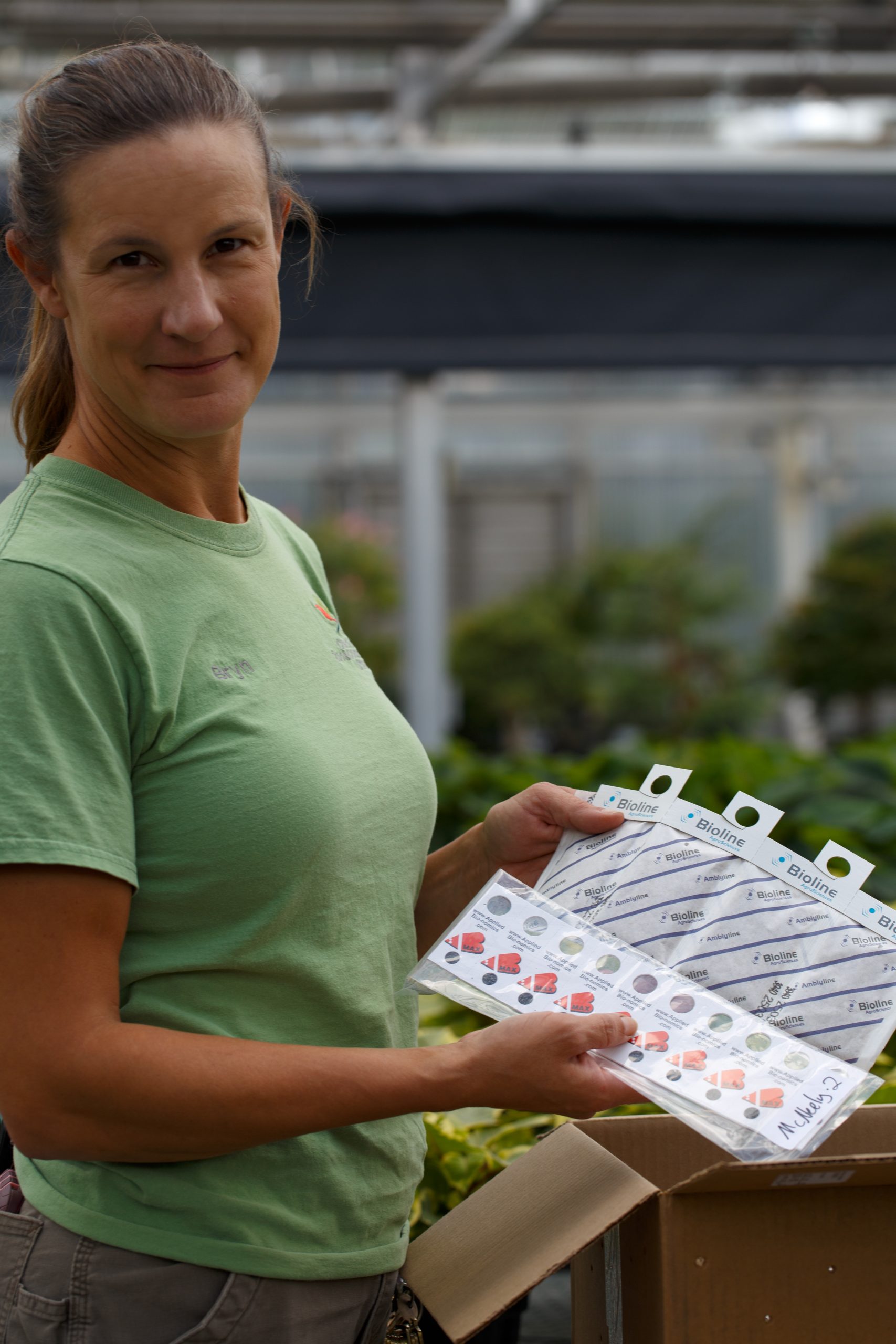
Also known to gardeners as thysanoptera or thunderflies, these needle-thin sucking insects love to feed on mums, causing damage to plants, or worse, transmitting viruses from one plant to the next.
Fortunately, Como’s horticulturists have a tiny but mighty weapon to keep thrips from ruining the show. Known as the cucumeris mite, this half-millimeter predator insect has just been deployed throughout the mum crop destined for the second half of the Fall Flower Show. With an appearance like that of a transparent wood tick, and the ability to prey on thrips and survive on plant pollen, these super small super predators play an important role in the Marjorie McNeely Conservatory’s Integrated Pest Management plan.
“People sometimes think that spraying pesticides is the only way to control pests, but integrated pest management is an approach that combines anything you might do to make a plant healthier, from the condition of the soil it’s growing in, to your nutritional program, to how you’re pruning the plant,” explains Como horticultural supervisor Bryn Fleming. While Como has been a low-pesticide growing facility for decades, Fleming says, “our reliance on beneficial insects has increased more recently,” as the gardening industry embraces more sustainable ways to manage greenhouses and gardens.
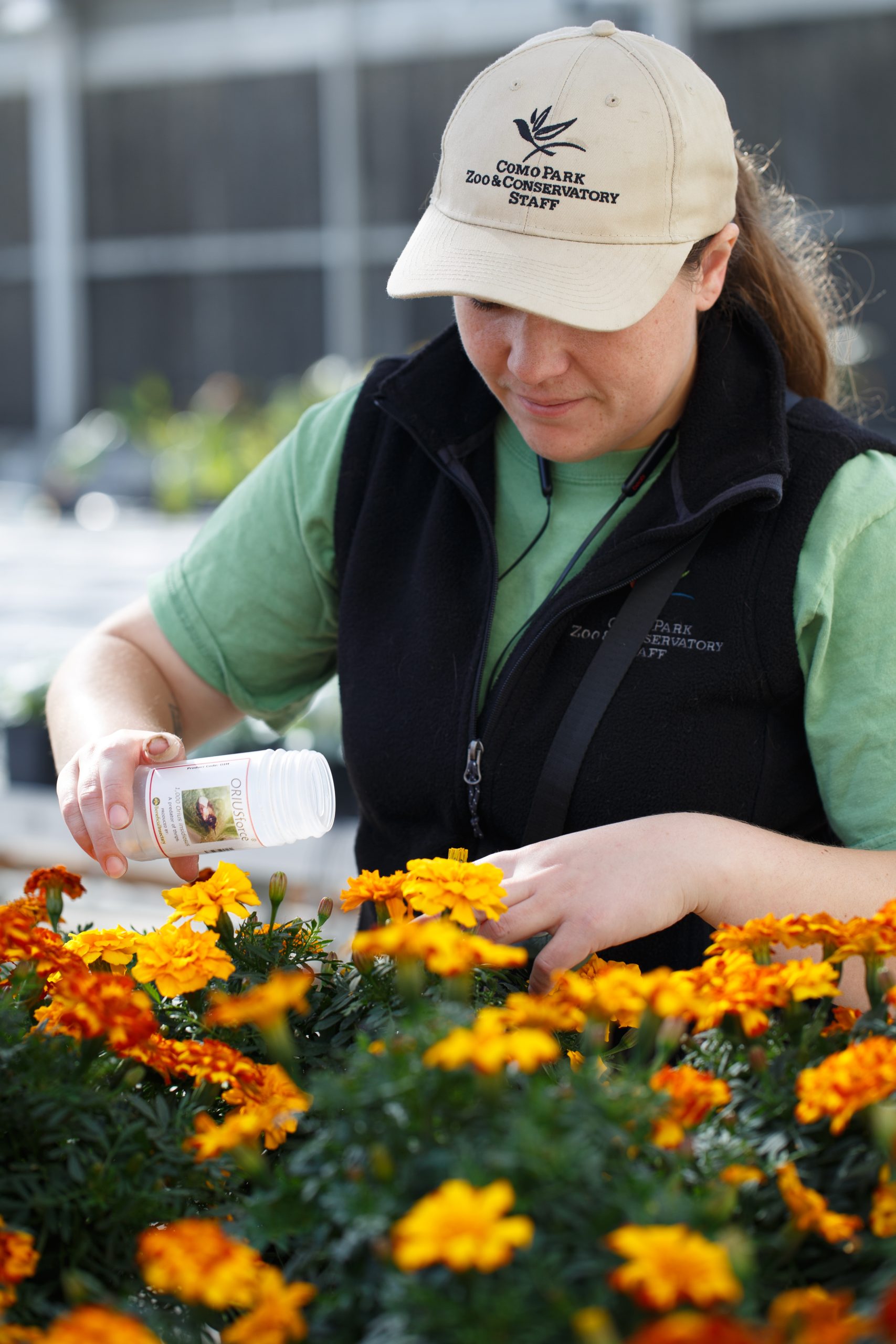
While beneficial bugs show great promise in cutting the use of pesticides, monitoring how well predator insects perform can be time consuming and complex. What’s the right dosage of beneficial insects for a particular plant or crop? How do shifts in such inputs as light, water or temperature affect the efficacy of beneficial bugs? Are some pest predators better than others?
To help answer those questions, the Marjorie McNeely Conservatory is now equipped with a new integrated pest management scouting system called IPM Scoutek. Made possible by your support for Como Friends, this new digital technology tracked on a tablet allows horticulturists to collect data from greenhouses and gardens to make even more informed decisions about how to care for crops and manage pests.
“This technology is used by large-scale growers who are producing bigger agricultural crops, but is also used for nursery or floriculture production.” says Horticulturist Jen Love, who recently shared news about Como’s software scouting system during an American Public Gardens Association symposium at the Franklin Park Conservatory and Botanical Gardens in Columbus, Ohio. “As far as we know, as a public garden the Marjorie McNeely Conservatory is an early adopter trying this approach, and there’s a lot of interest from other institutions in seeing how this process works. If it’s successful, it’s a model we can share with other botanical gardens.”

As Como’s horticulturists discover what digital technology can do for pest management, Fleming says the Conservatory’s early adopters are already impressed by what they’ve seen. “I think this software is going to help us to keep track of things at a much closer level, so when problems come up we can respond to them even sooner,” she says. “To care for a living collection requires constant adaptation, and this technology will help us be a little more proactive than reactive.”
Conservation Champion Jill Erzar traveled to Tanzania to help Wild Nature Institute track giraffe across the Serengeti
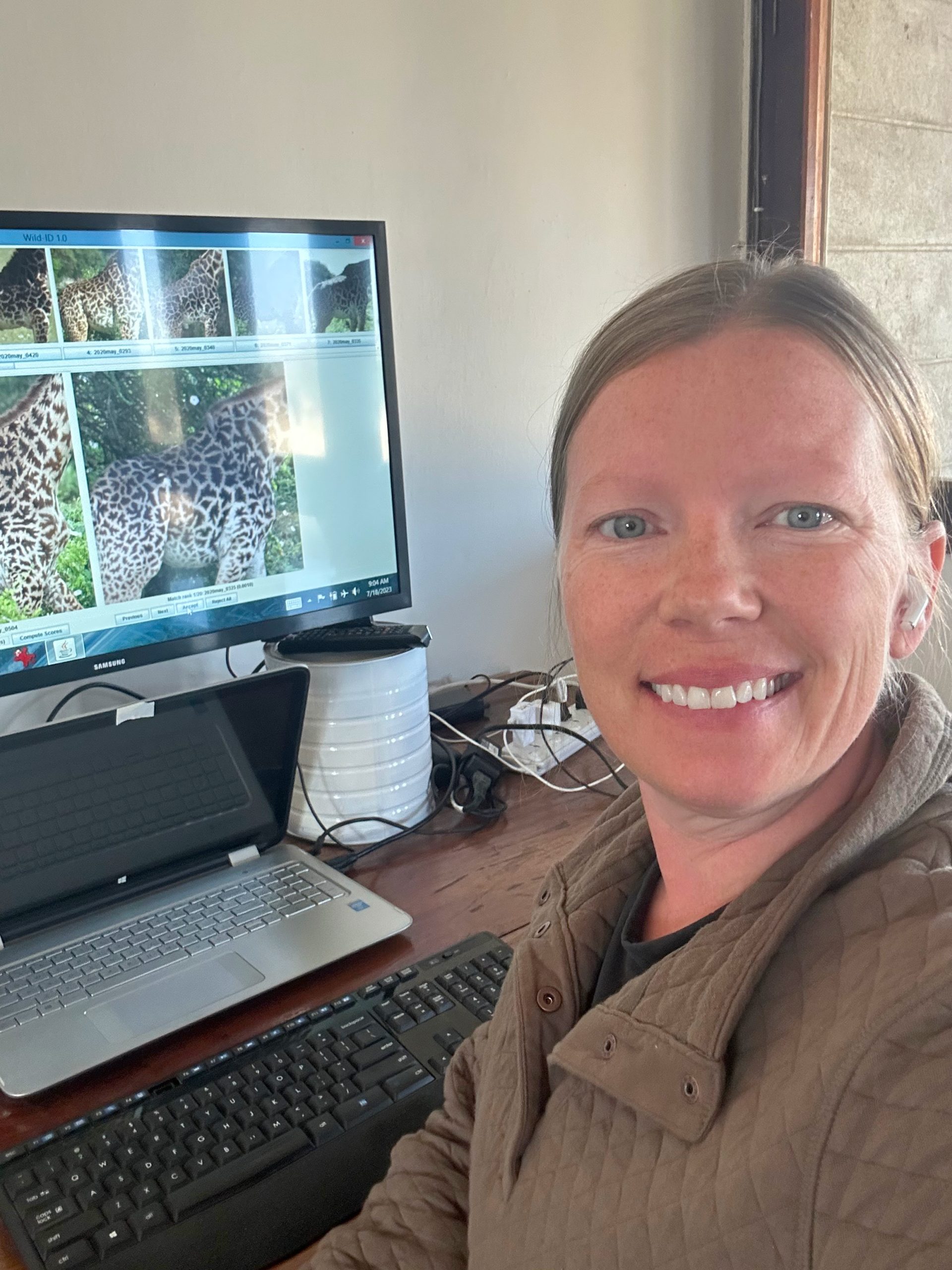
“Giraffes have been very underestimated, and under-researched for a long time,” says Como Zoo keeper Jill Erzar. “But over the last decade or so, that’s begun to change, and we’re beginning to understand that giraffes are, in fact, highly intelligent, with social hierarchies and relationships that are as complex as elephants and chimpanzees.”
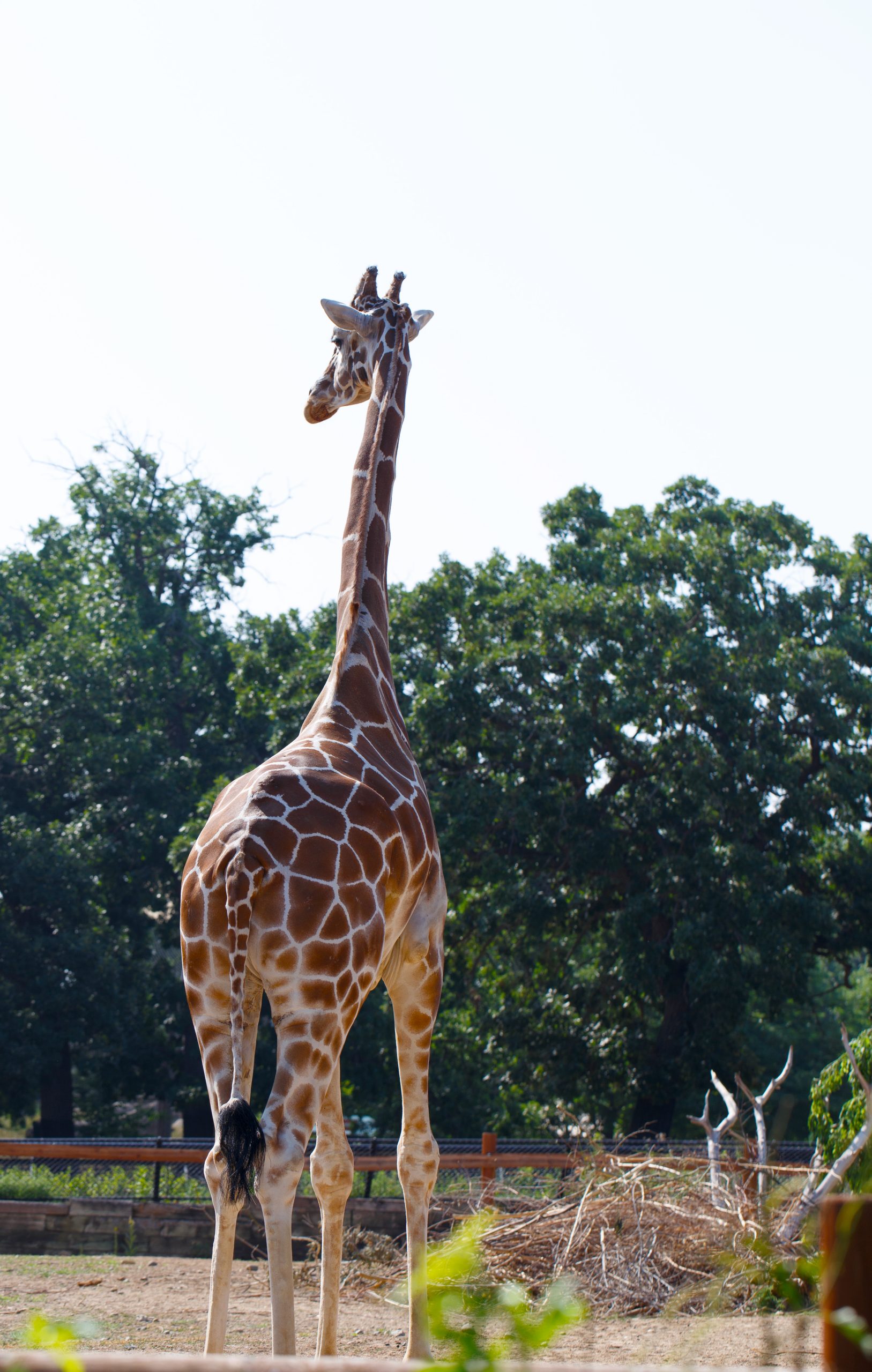
Reaching heights of 18 feet and beyond, giraffes are the tallest mammal on earth.
But with brains that are relatively small compared to their body size, scientists haven’t always been sure if their elevators go all the way to the top.
“Giraffes have been very underestimated, and under-researched for a long time,” says Como Zoo keeper Jill Erzar. “But over the last decade or so, that’s begun to change, and we’re beginning to understand that giraffes are, in fact, highly intelligent, with social hierarchies and relationships that are as complex as elephants and chimpanzees.”
Thanks to a recent grant from Como Friends’ Conservation Champions program, Erzar herself has been contributing to that body of research as a volunteer for the Wild Nature Institute. The conservation group behind the largest demographic survey of giraffes in the world, Wild Nature Institute takes a non-invasive approach to giraffe research, relying entirely on photographic identification to track the births, deaths, movement and social bonds of about 4,100 individual giraffes across 25,000 square miles of the Tarangire and Serengeti ecosystems in Tanzania.
As a seasoned giraffe keeper who can spot the subtle difference in every giraffe’s unique markings, Erzar’s well-trained eye and expertise were a welcome skill set on the Serengeti this summer, as the conservation group worked to compare and analyze more than a decade’s worth of data about wild giraffe. “I was able to make more than 9,000 matches during the 10 days I spent in country,” says Erzar, who also got the chance to meet and learn from giraffe experts in the field. “For me the biggest take-away from this trip is that giraffes need protected areas because poaching is still their number one risk. Even with projected climate change impacts in that area, nothing threatens their survival as much as illegal hunting and poaching.”
Though it will take time for Wild Nature Institute’s findings to be published and shared more widely with other conservation researchers, new discoveries about giraffes are coming to light all the time. For instance, scientists who once considered giraffes to be aloof and anti-social have discovered that in fact, giraffes live in complex social systems and super communities, and even prefer to eat with favored companions. A 2023 study found that giraffes are capable of statistical reasoning, while a 2021 study found that giraffes prefer a fair fight, and will only spar with individuals of the same size. Another growing topic of interest within the giraffe field is the so-called “grandmother hypothesis,” a theory that suggests that menopausal female giraffes may have an important role to play in raising young.
“It’s really cool to see that giraffes are finally having their moment, and I absolutely love being on the forefront of a group that believes that non-invasive [data gathering] is the best way to study them,” Erzar says.
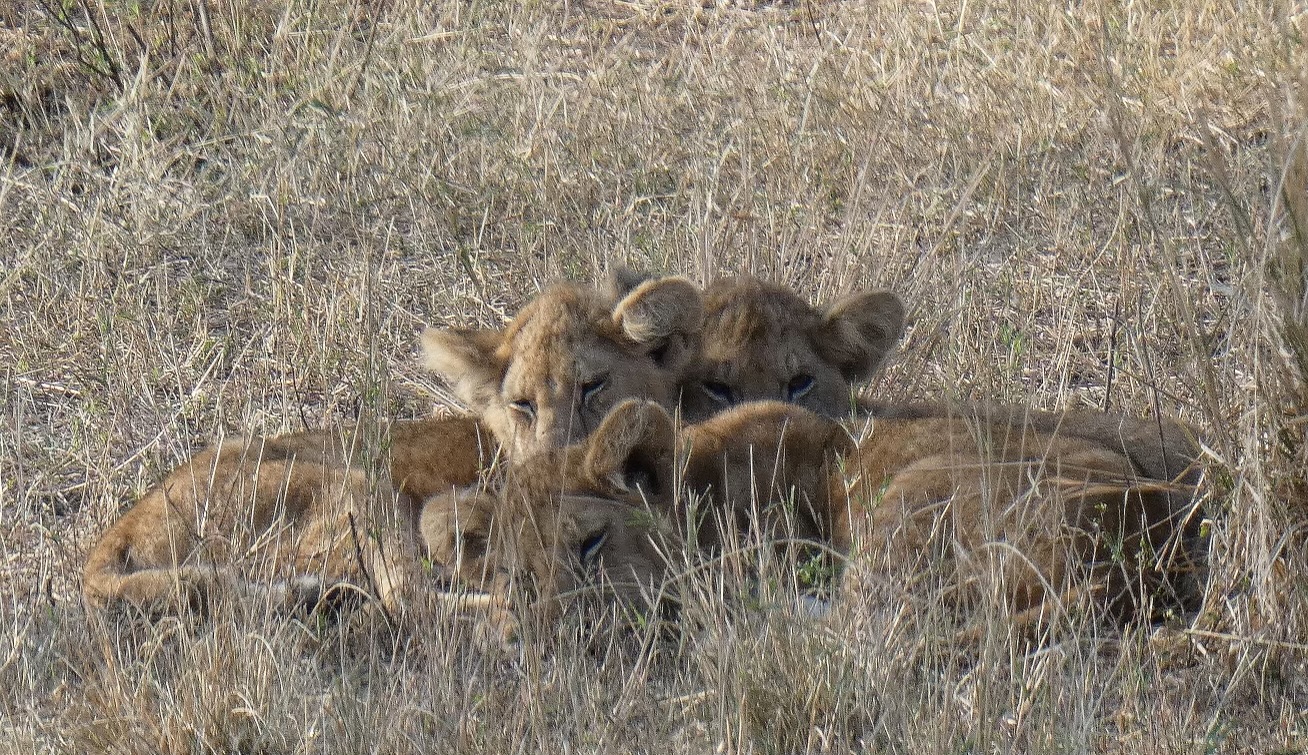
Como Friends’ Conservation Champions program, funded with donations from our generous supporters, has made it possible for Jill to travel to Africa three times in recent years, supporting conservation partners in the field, while bringing home new experiences and insights that can help enhance the care she gives to animals at Como Zoo every day. “Making the trip to work with Wild Nature Institute helps me to tell the story of our own giraffes better,” she says. “I can tell visitors that our giraffes really do look and behave just like the giraffes in Tanzania. And the more we learn about giraffes, the more we can do to improve their welfare in the wild and here at Como.”


